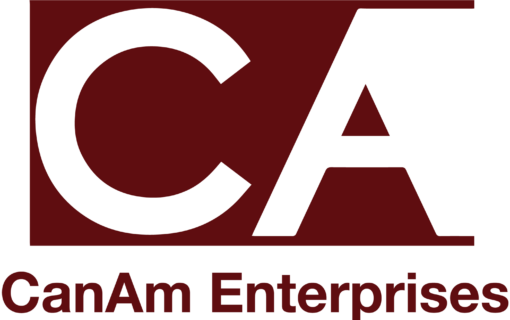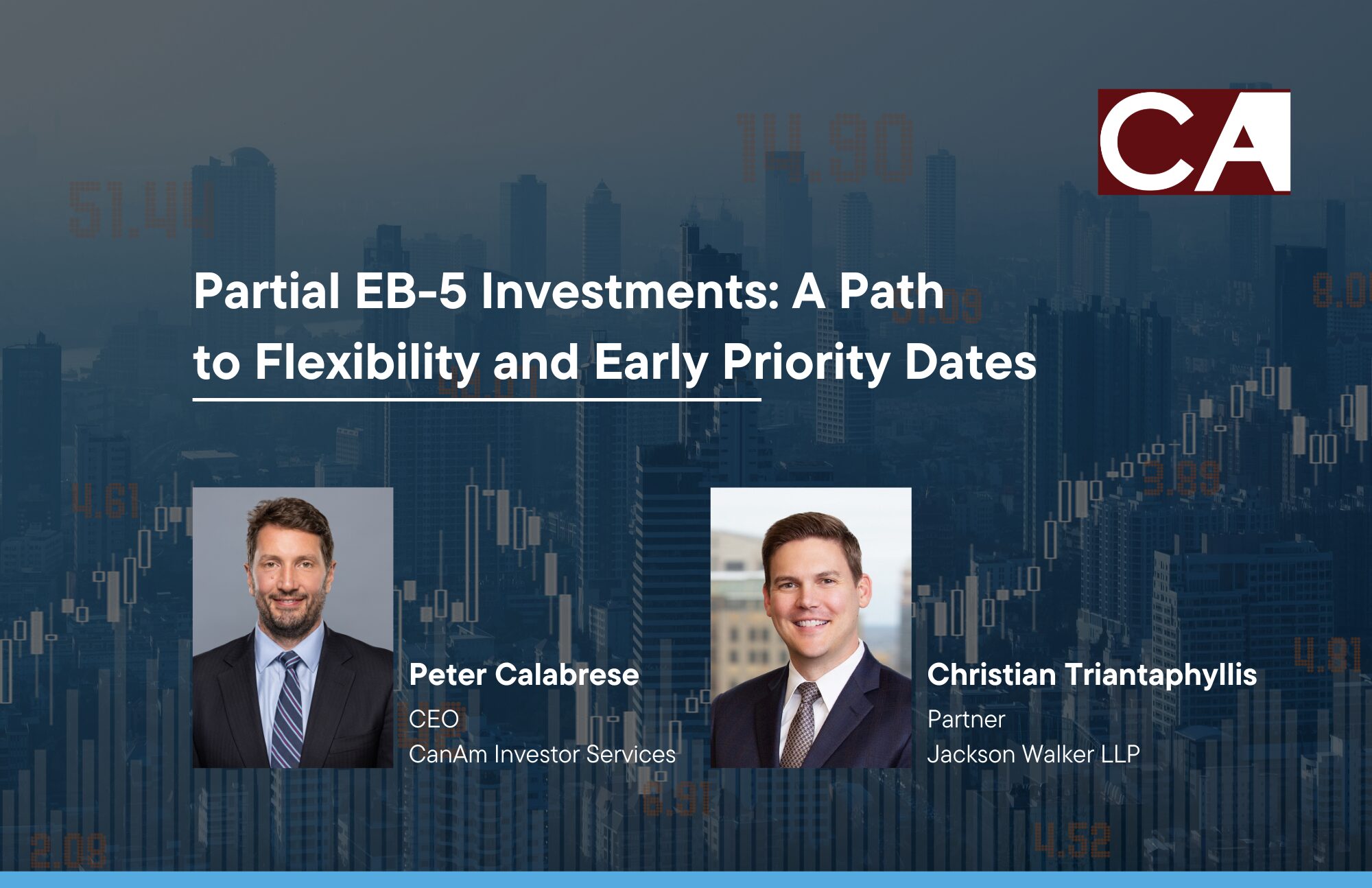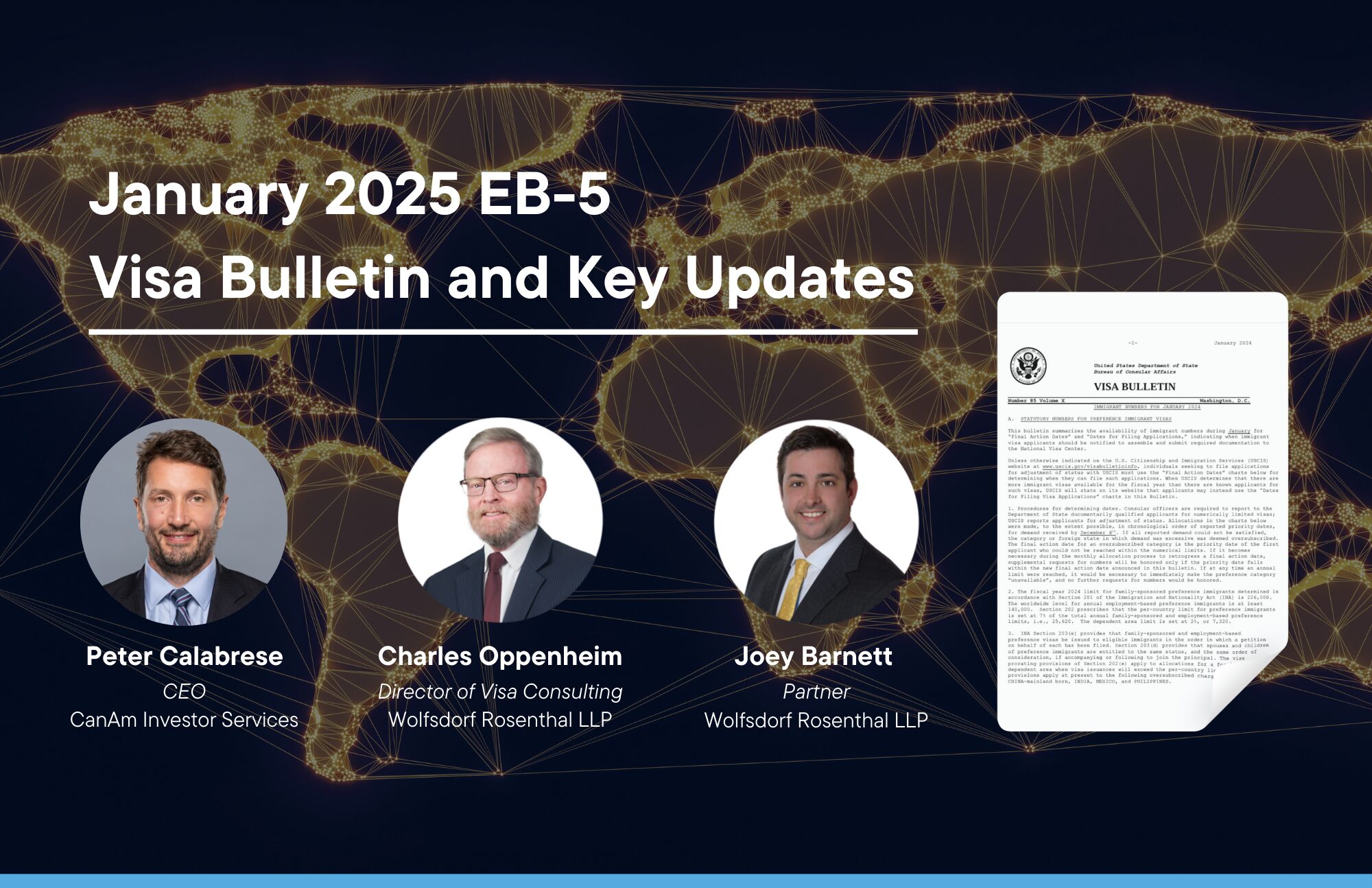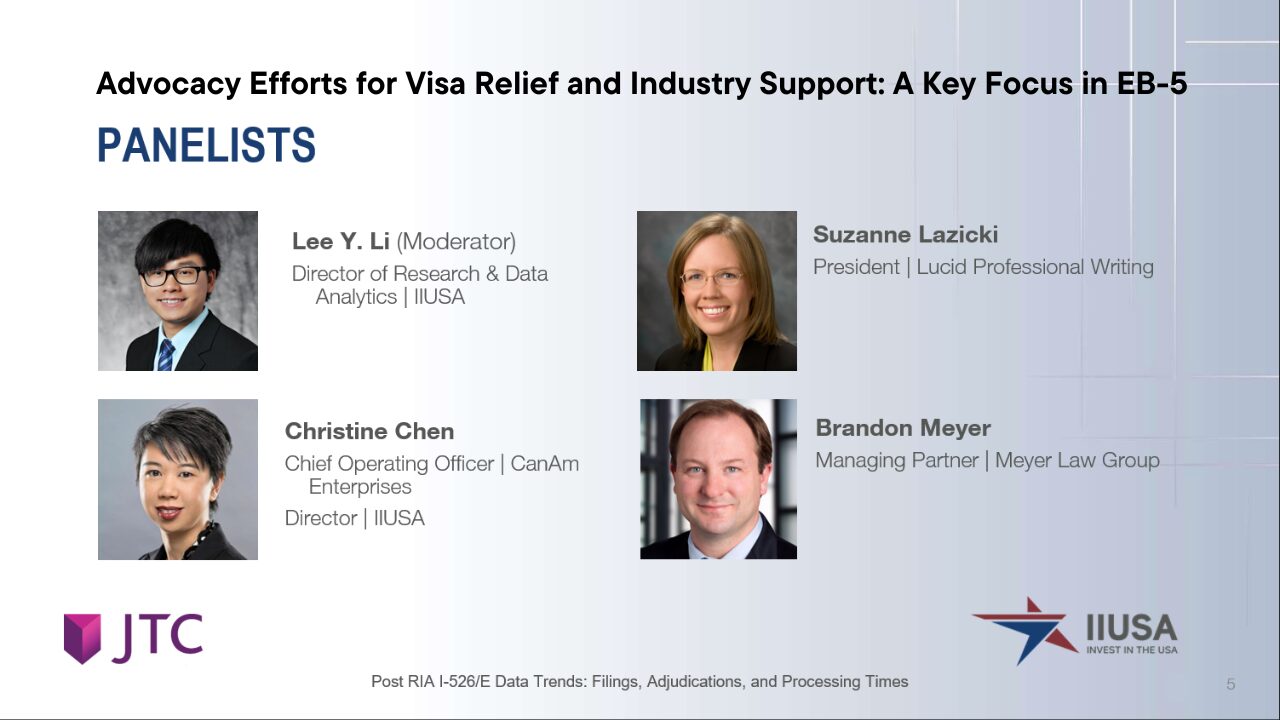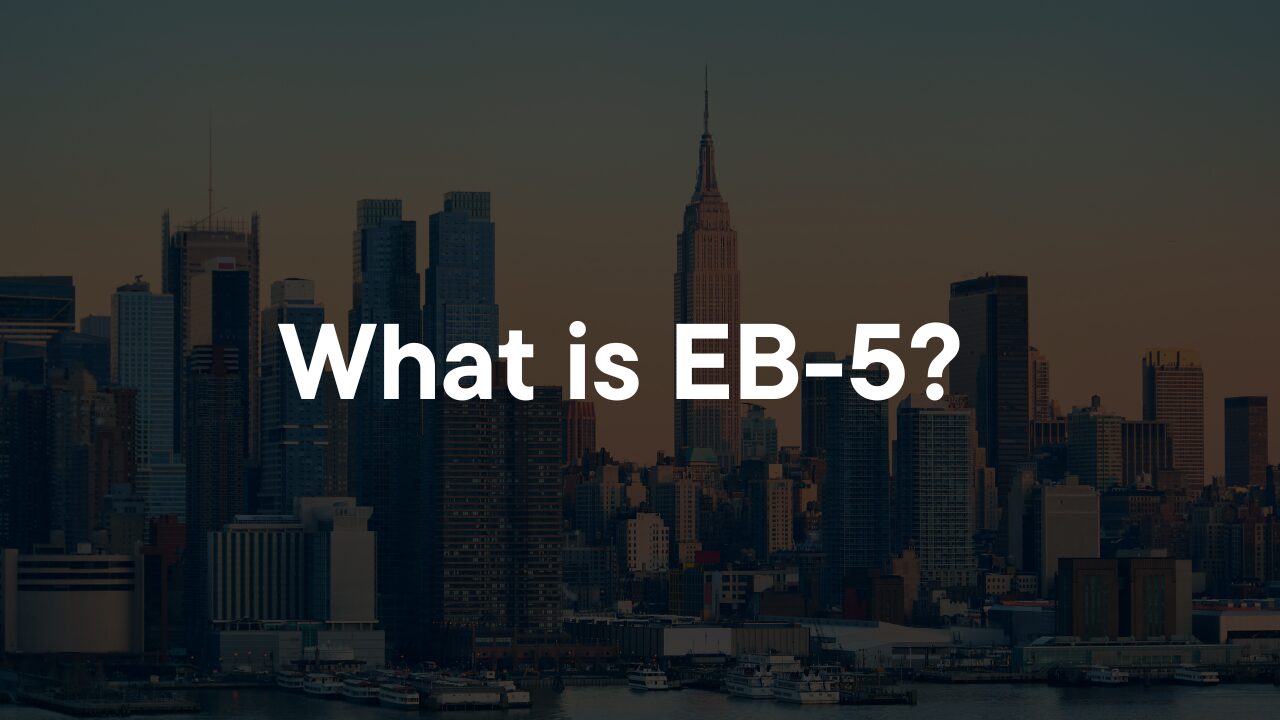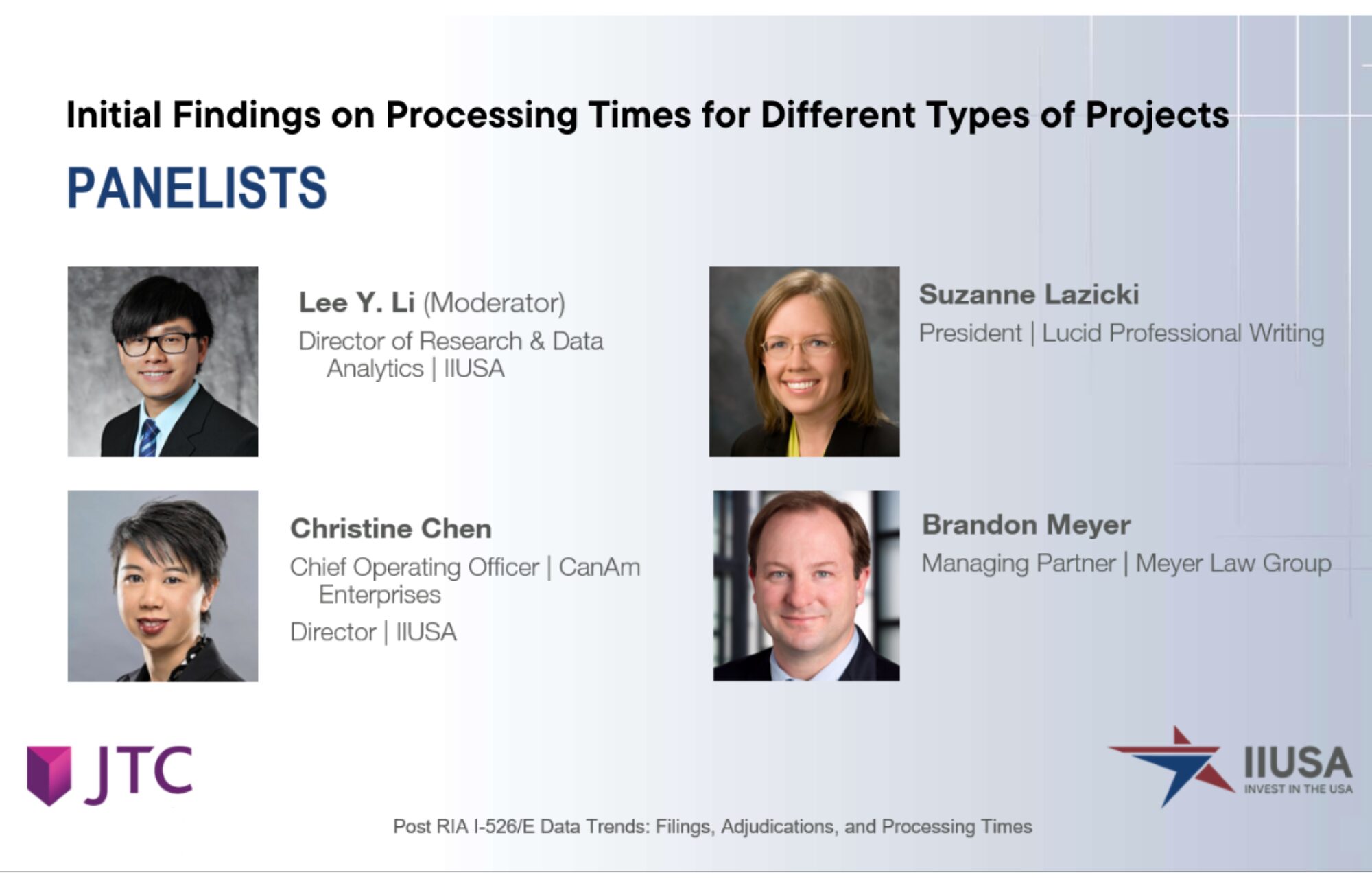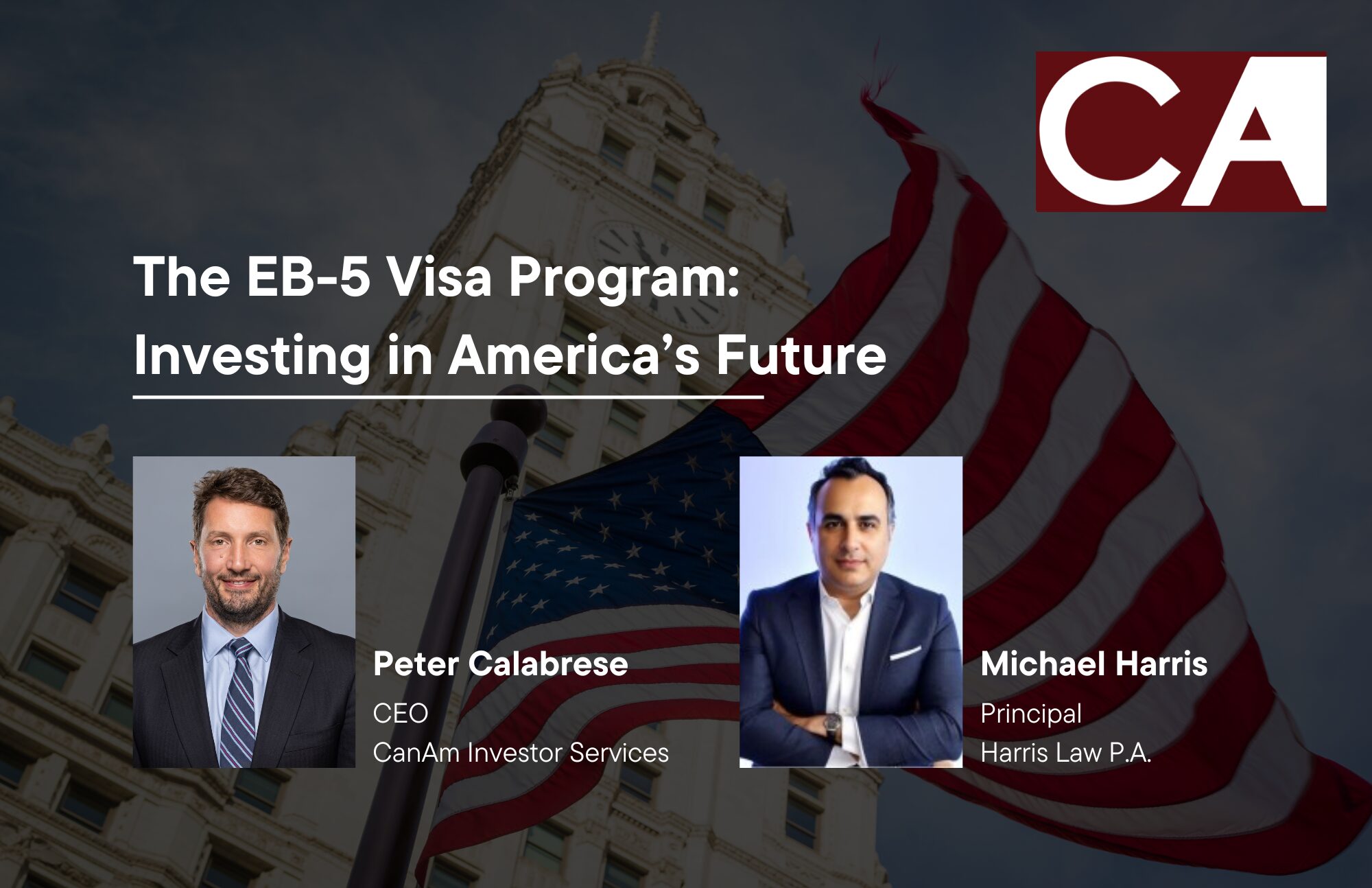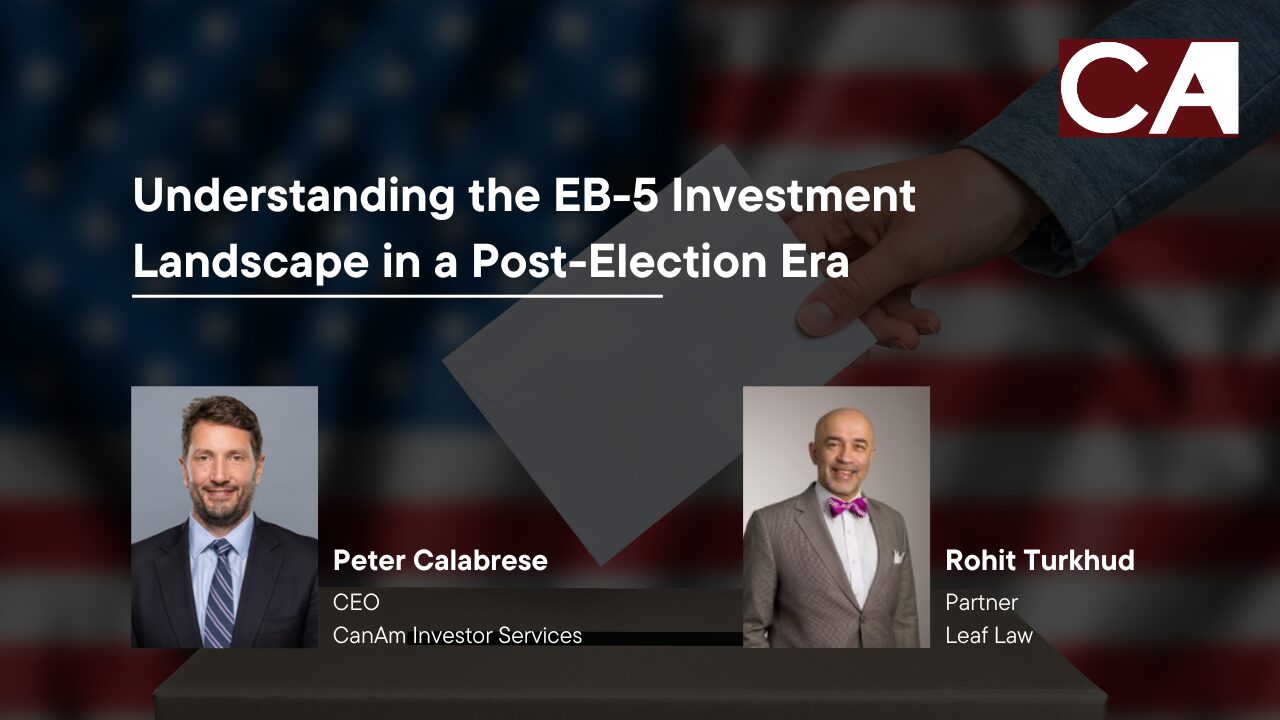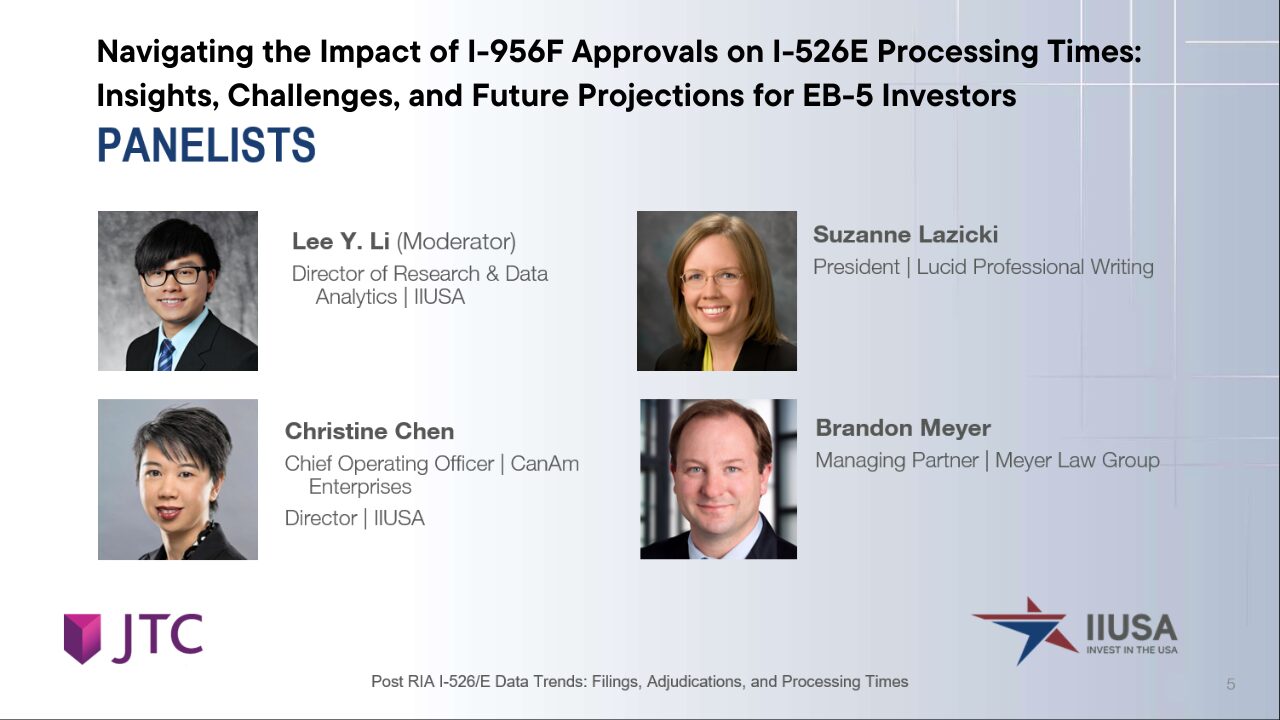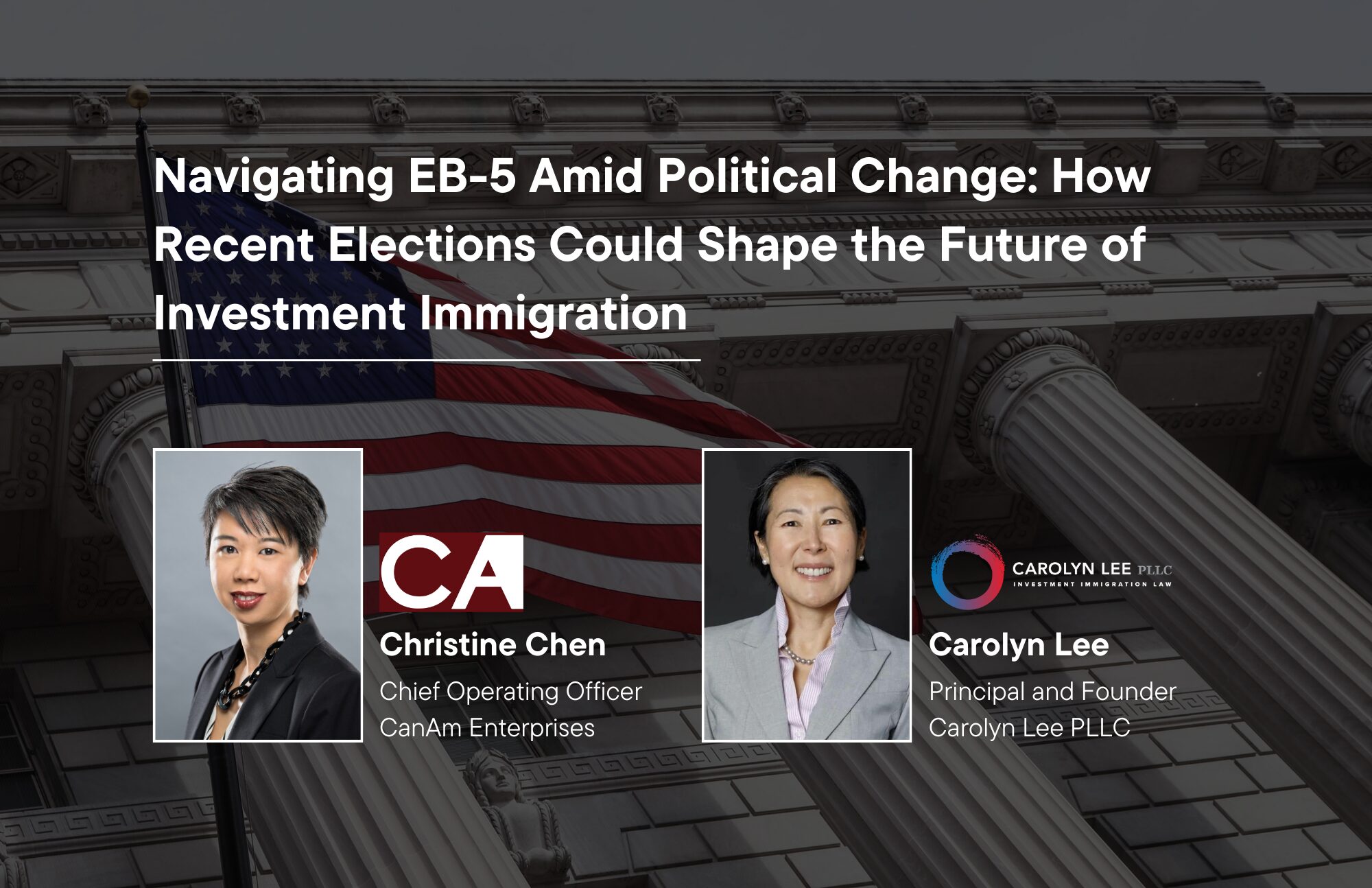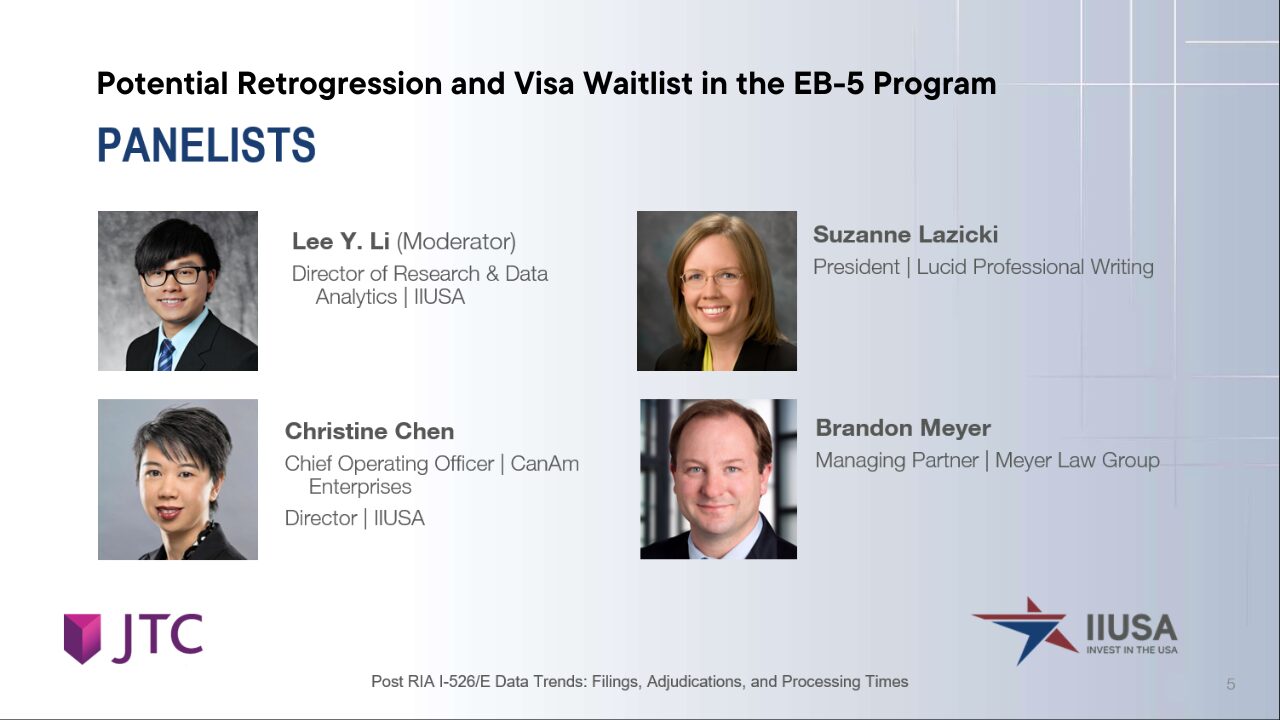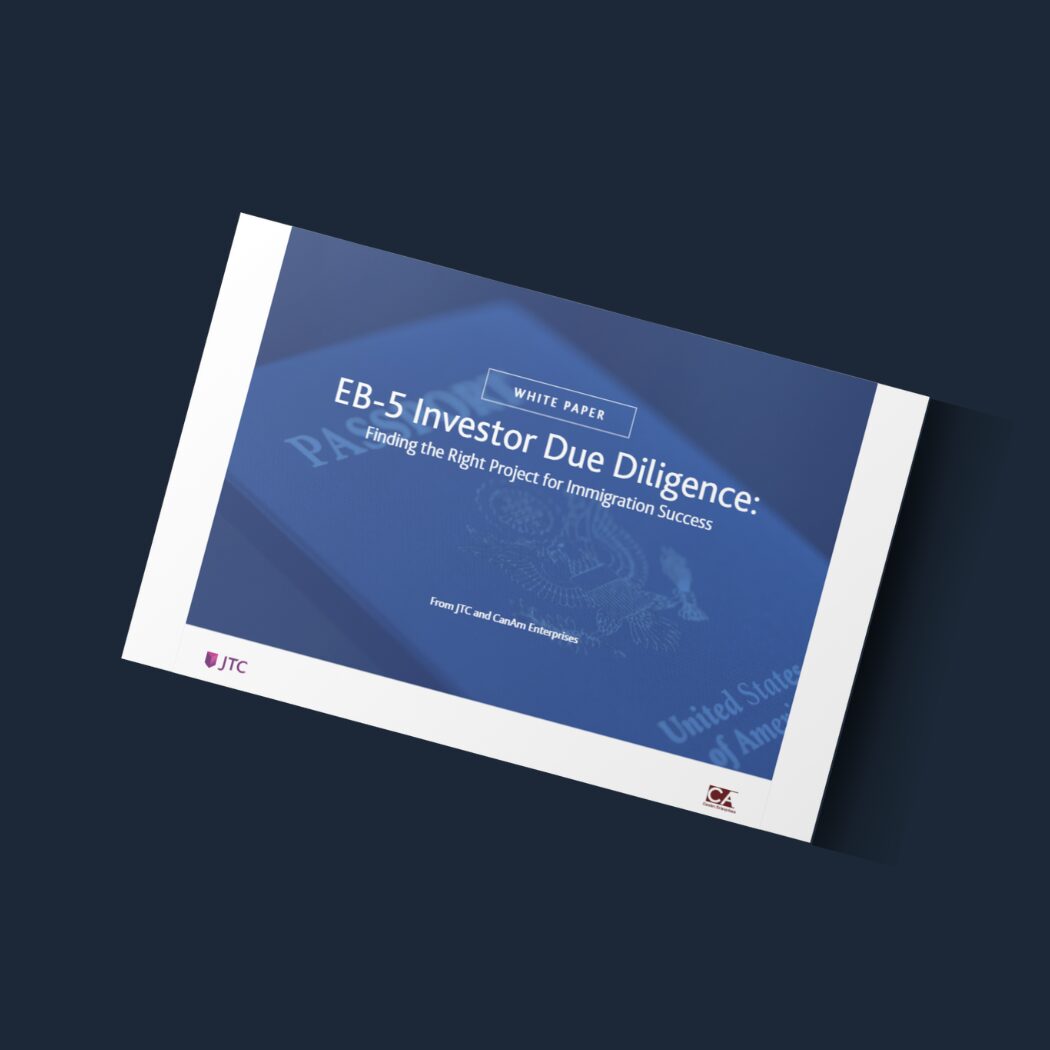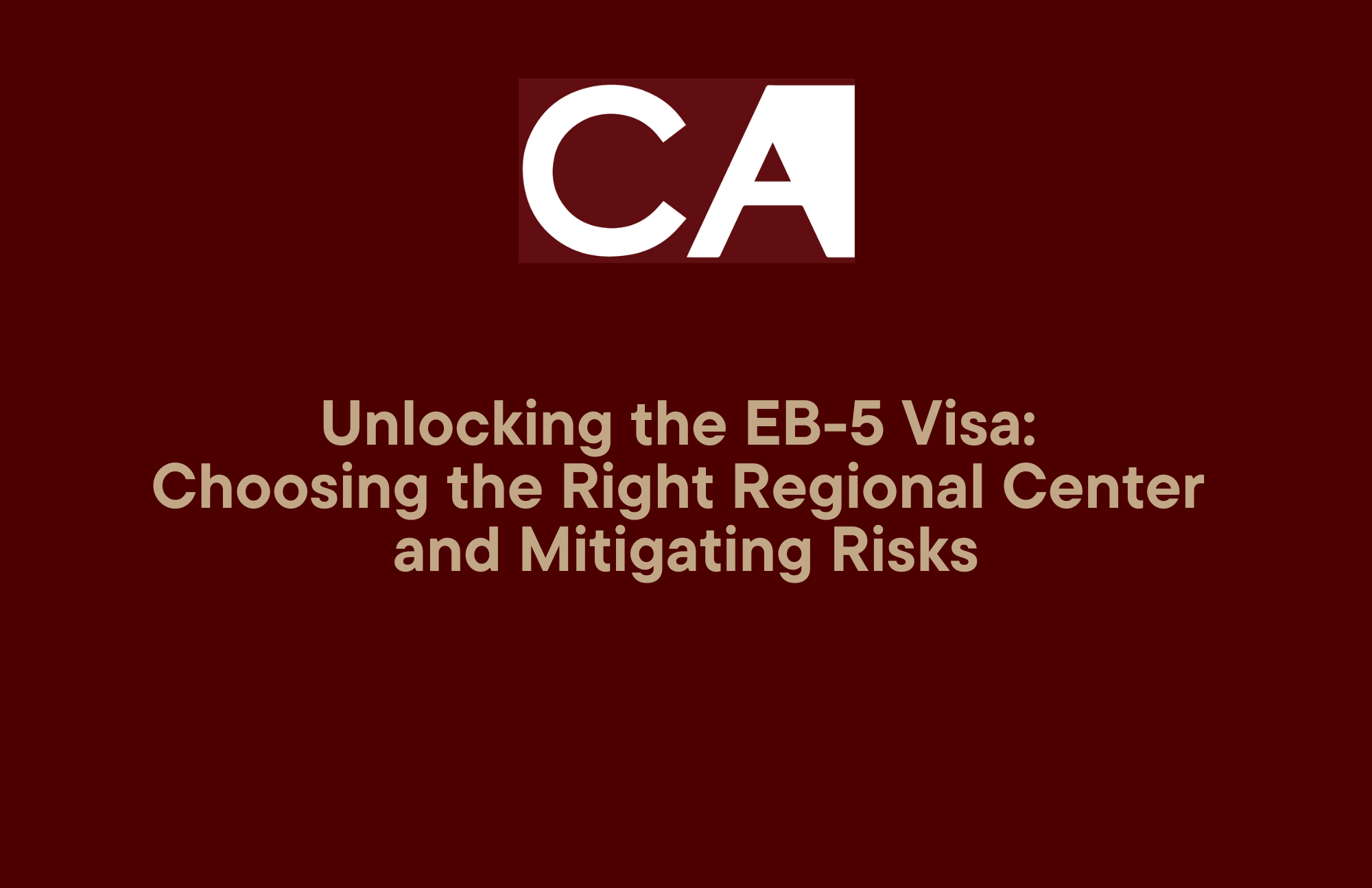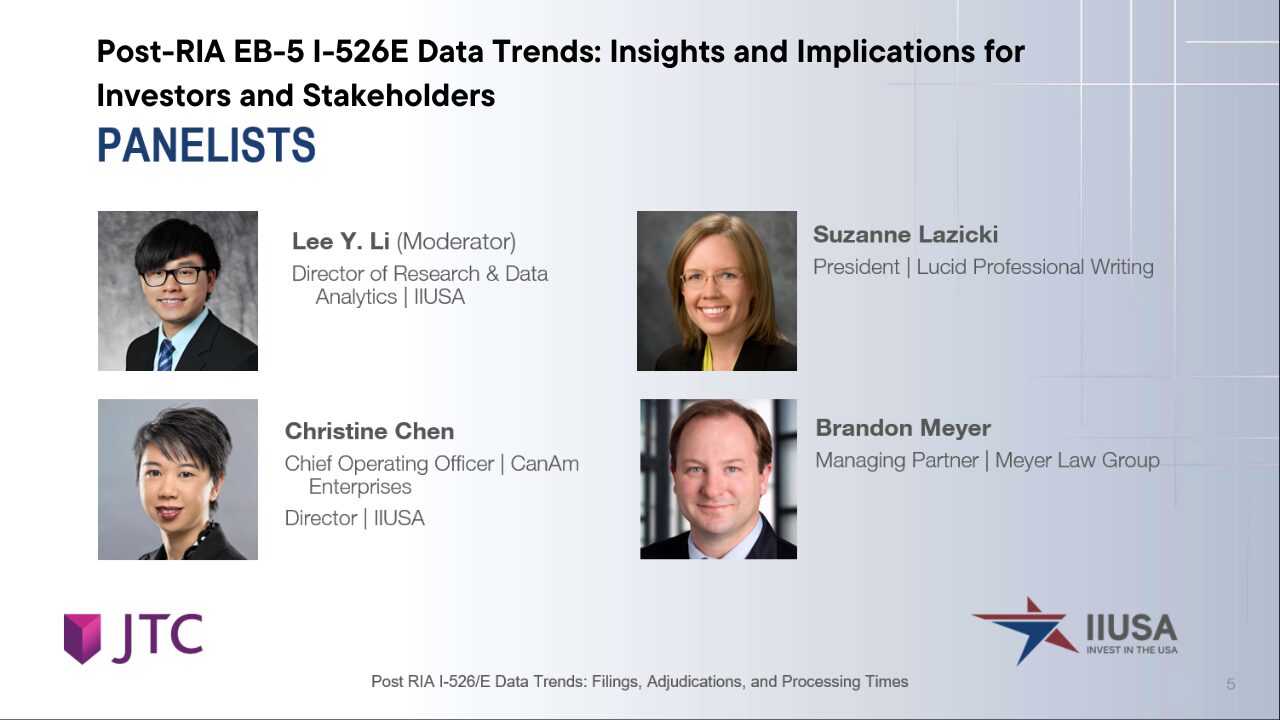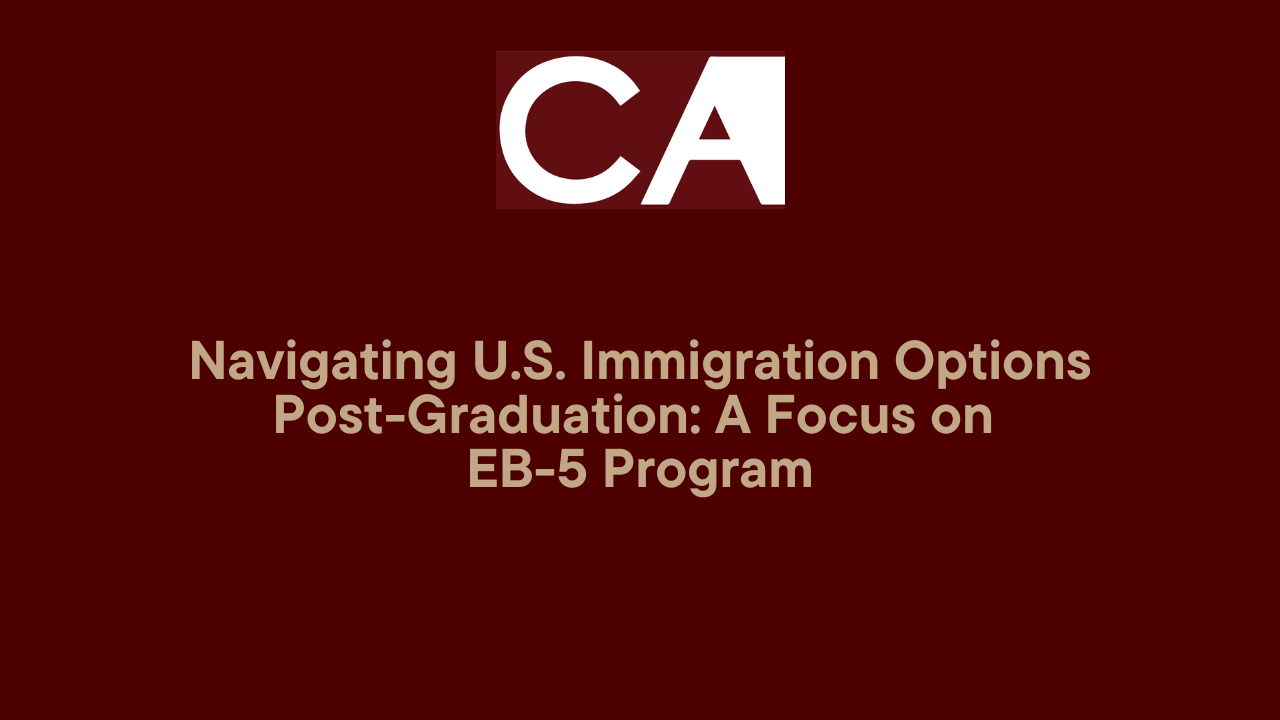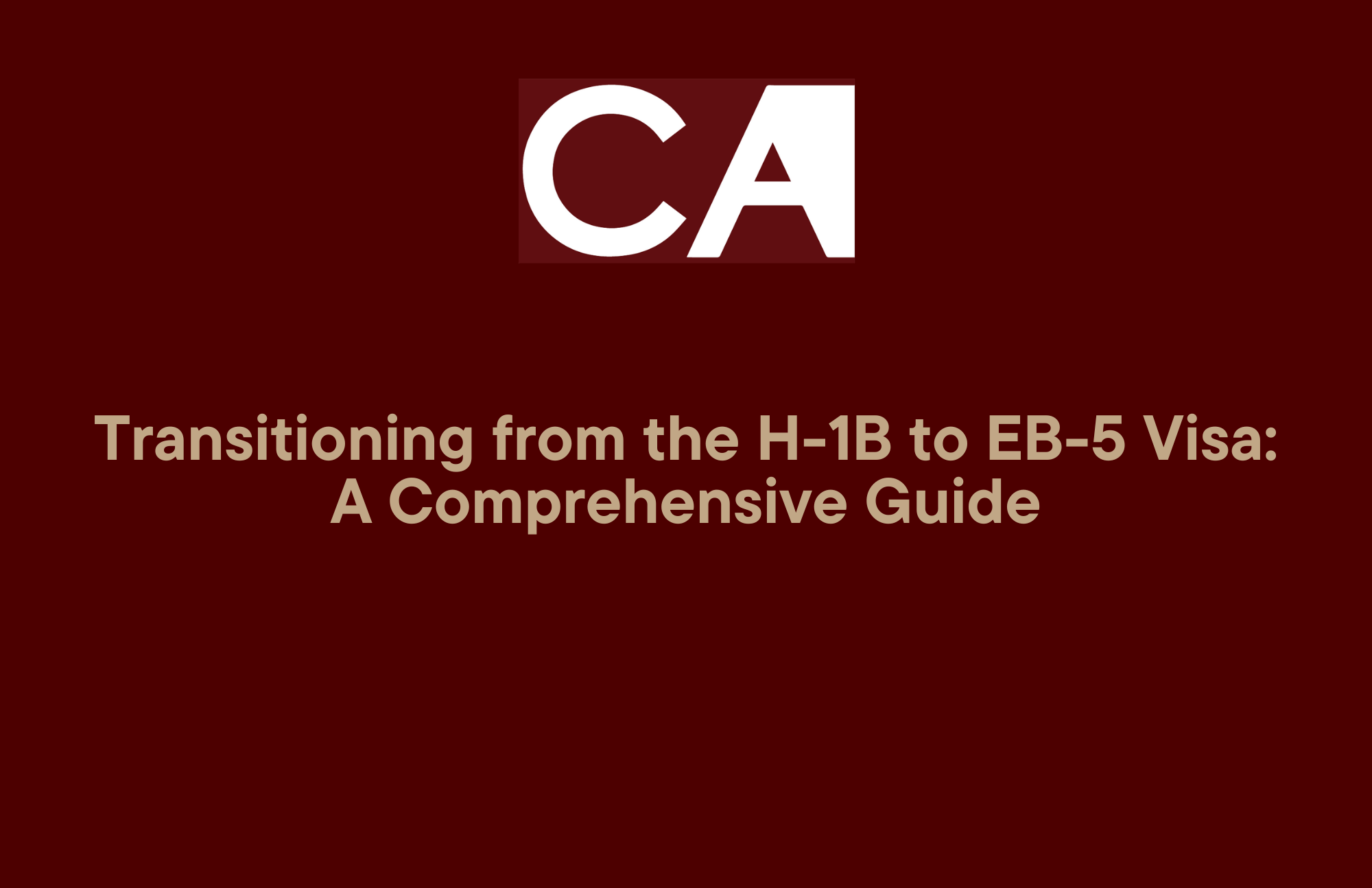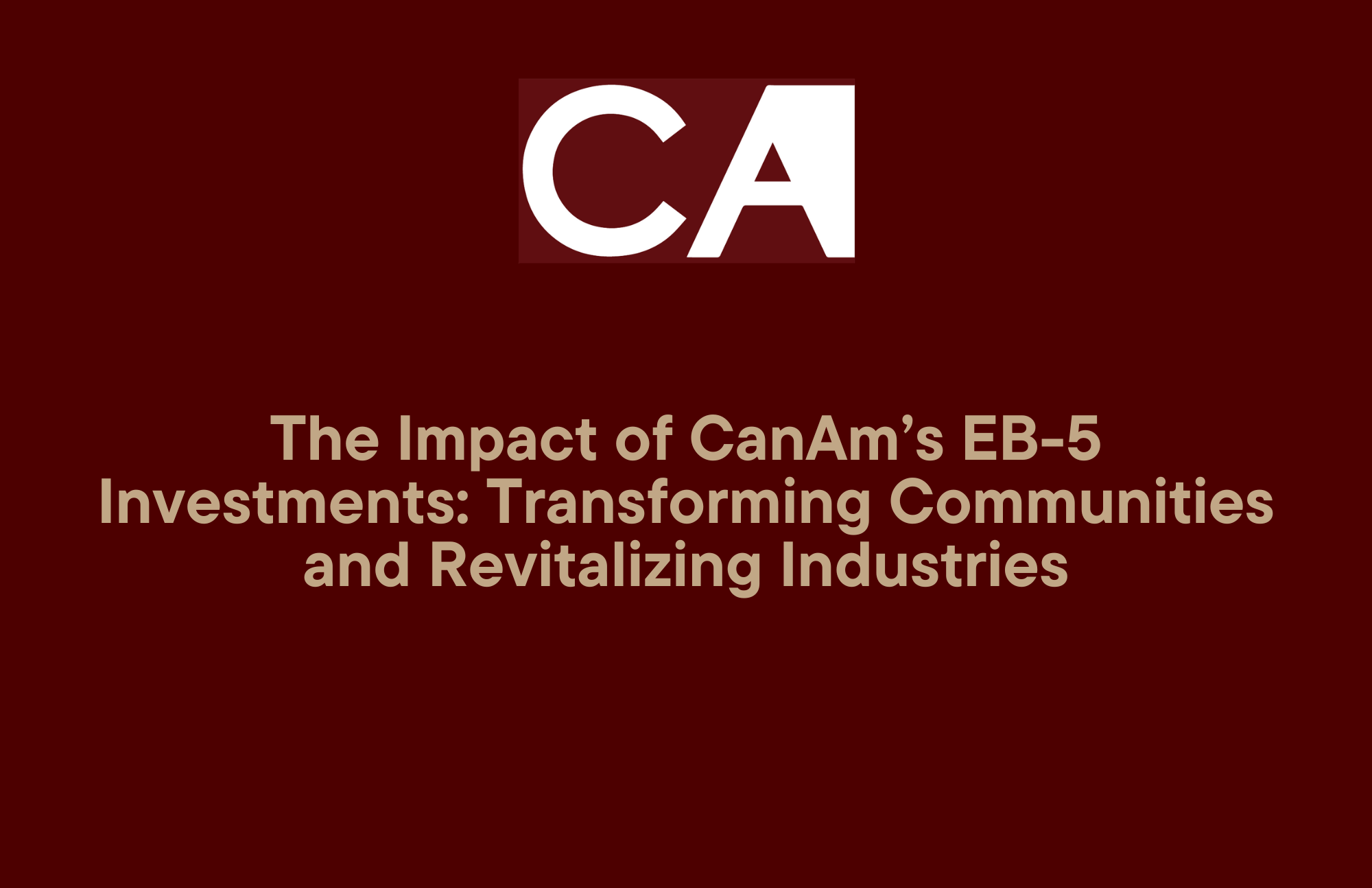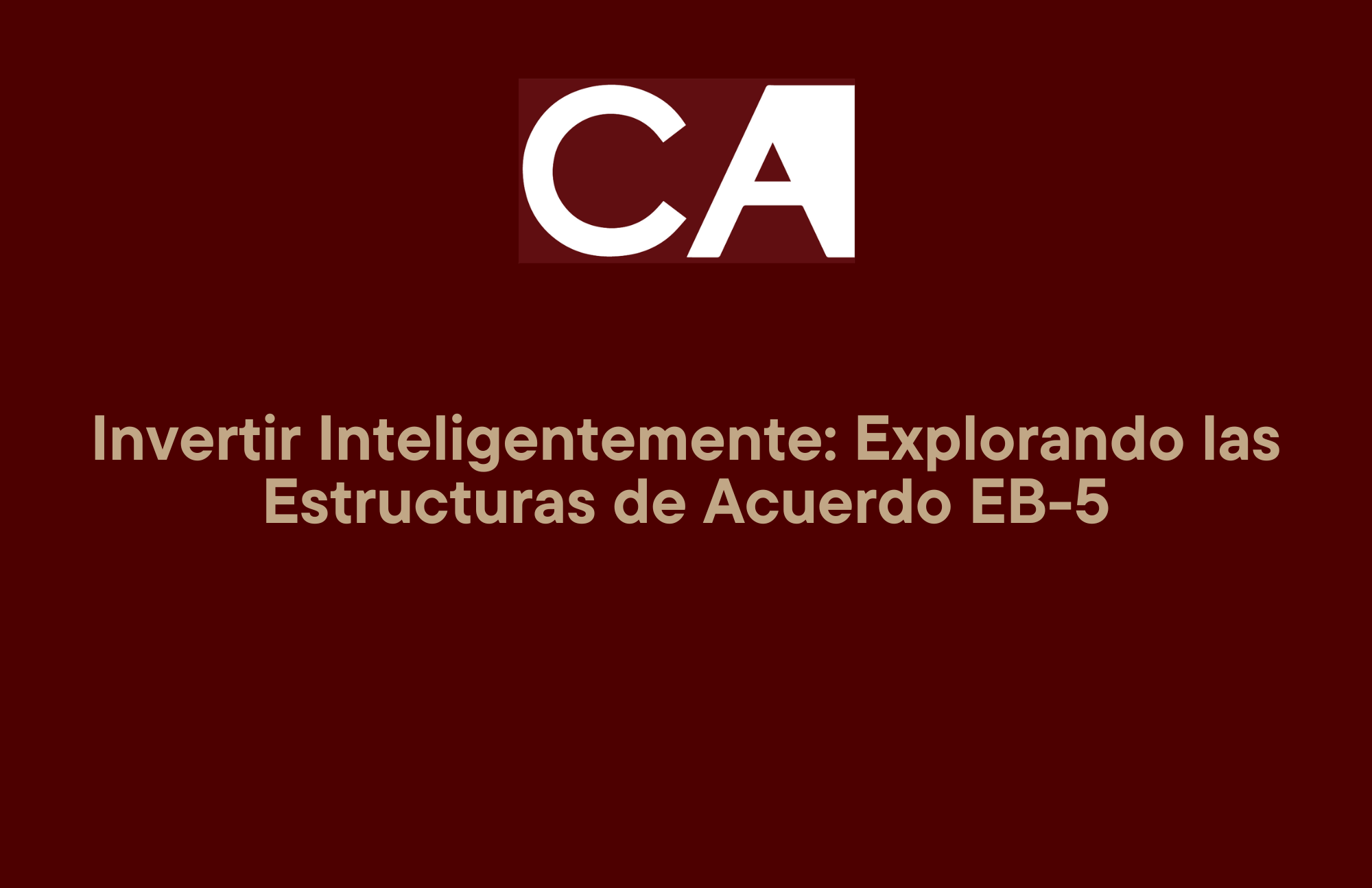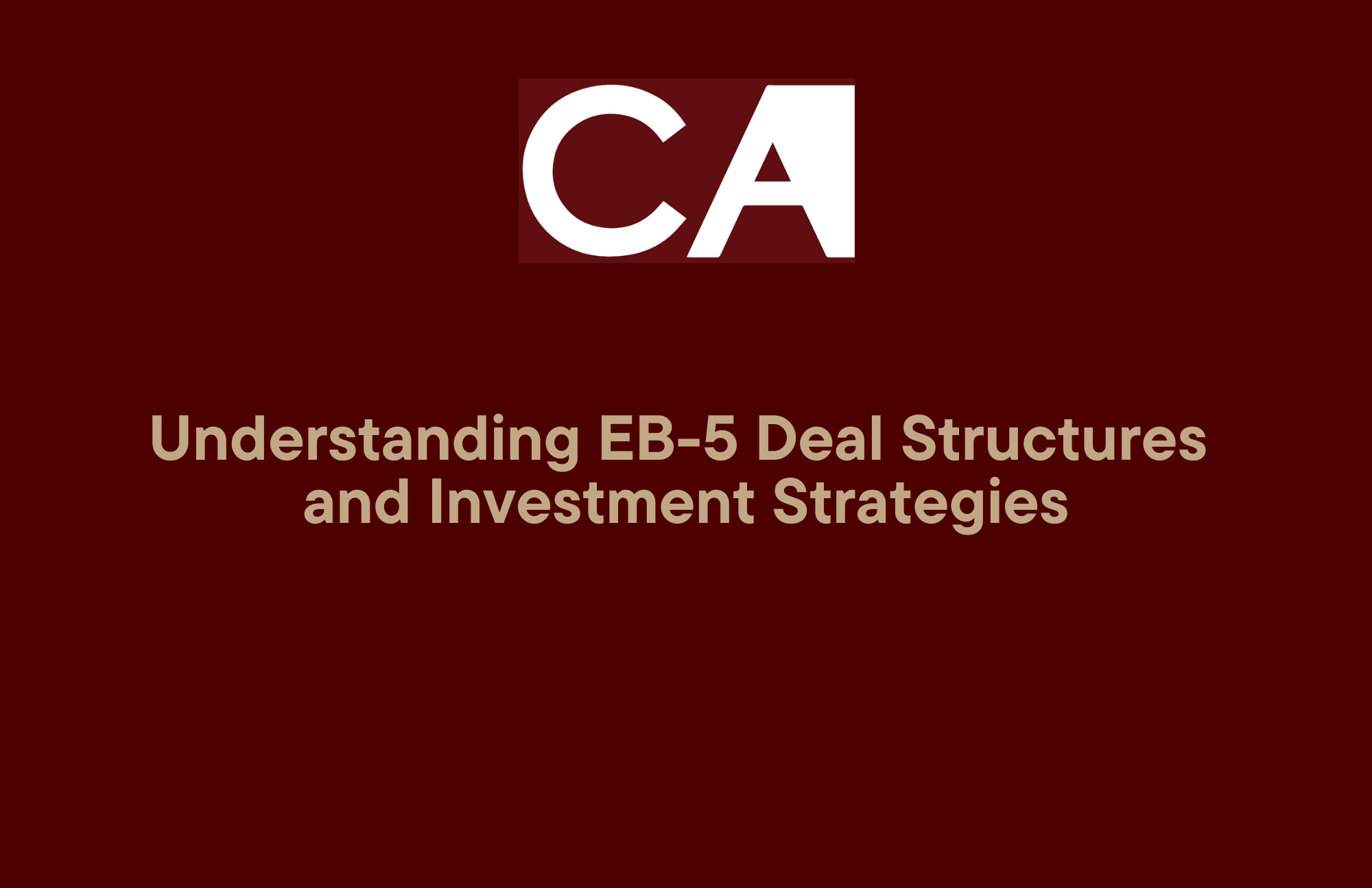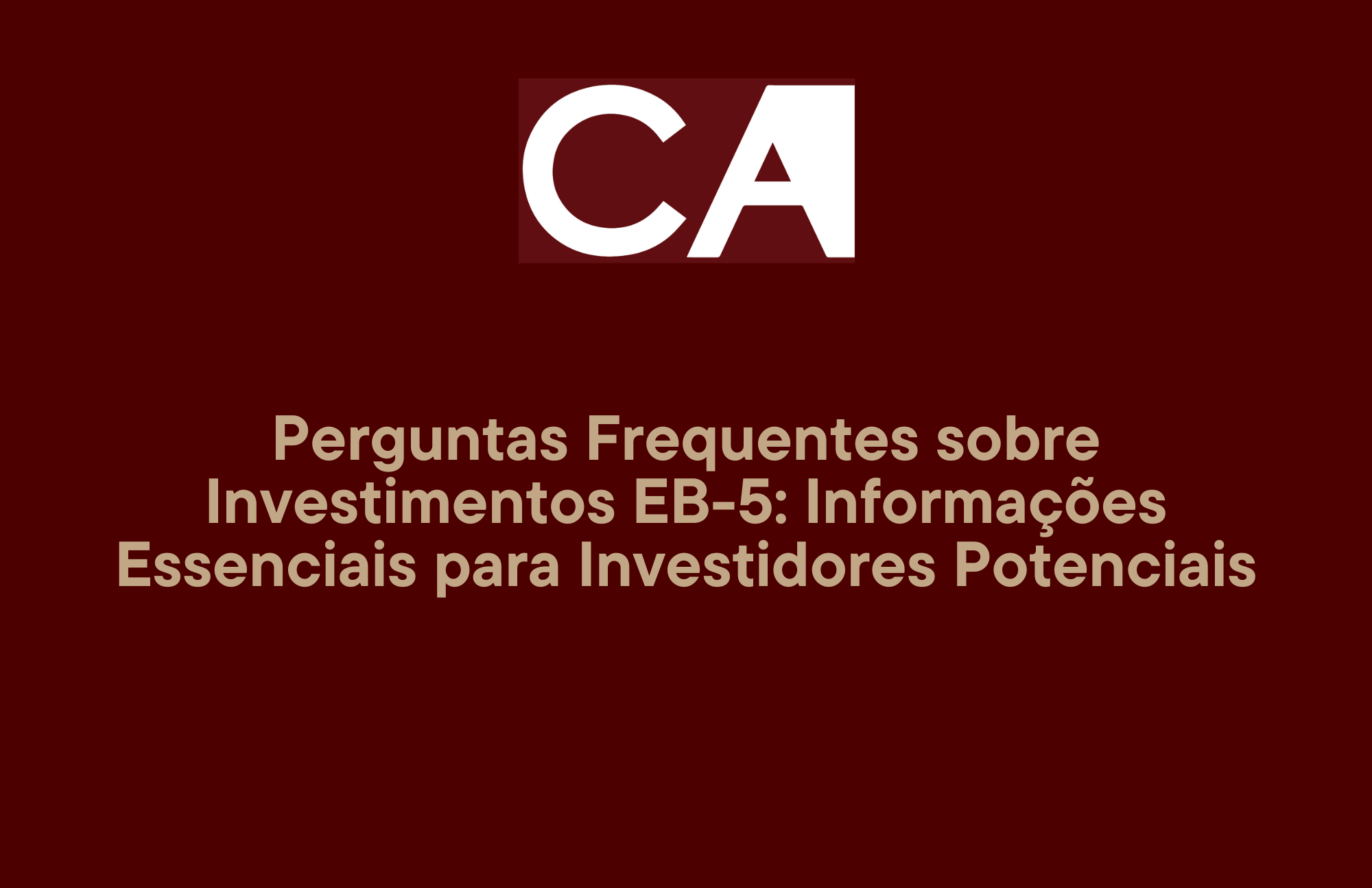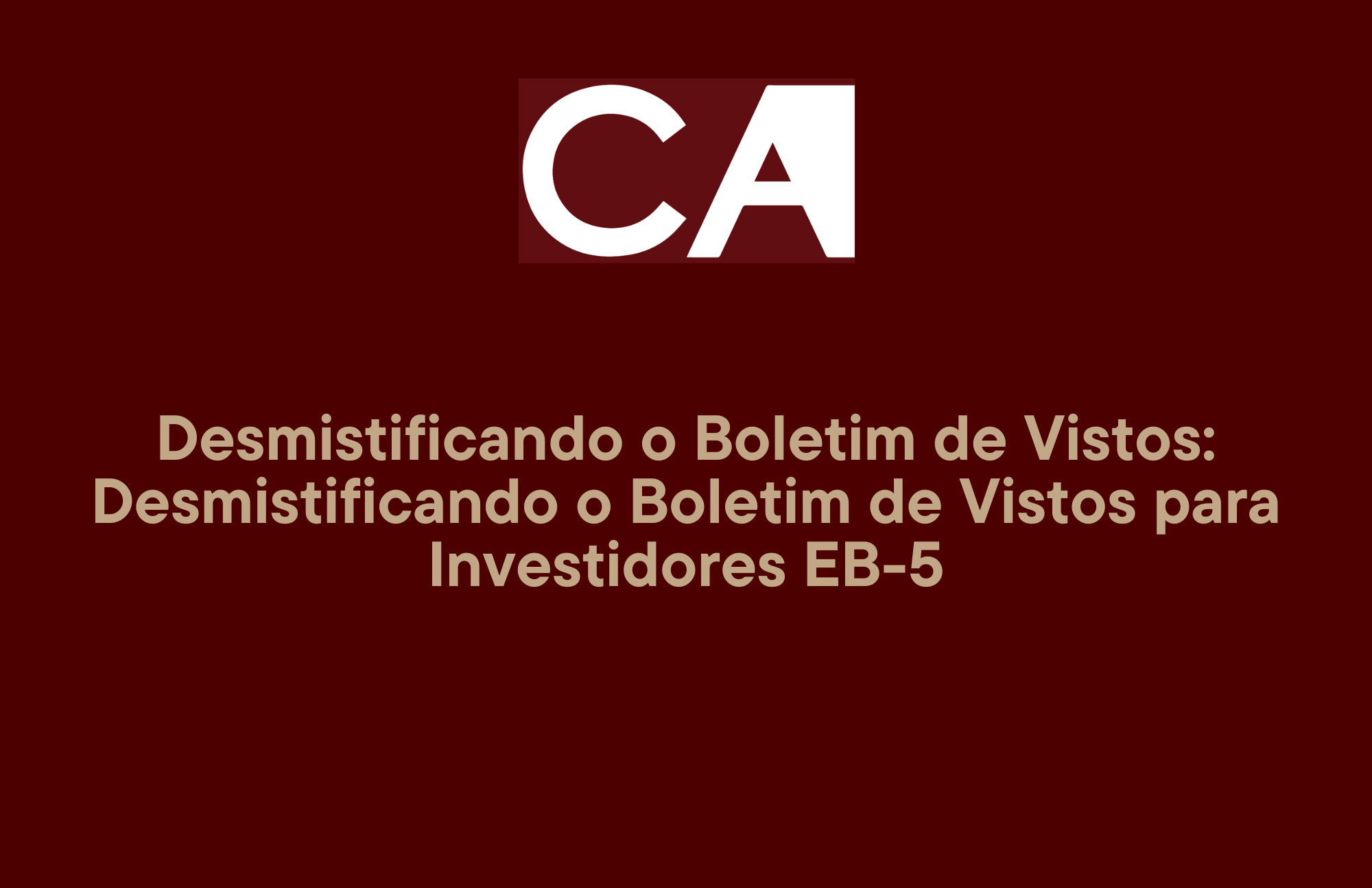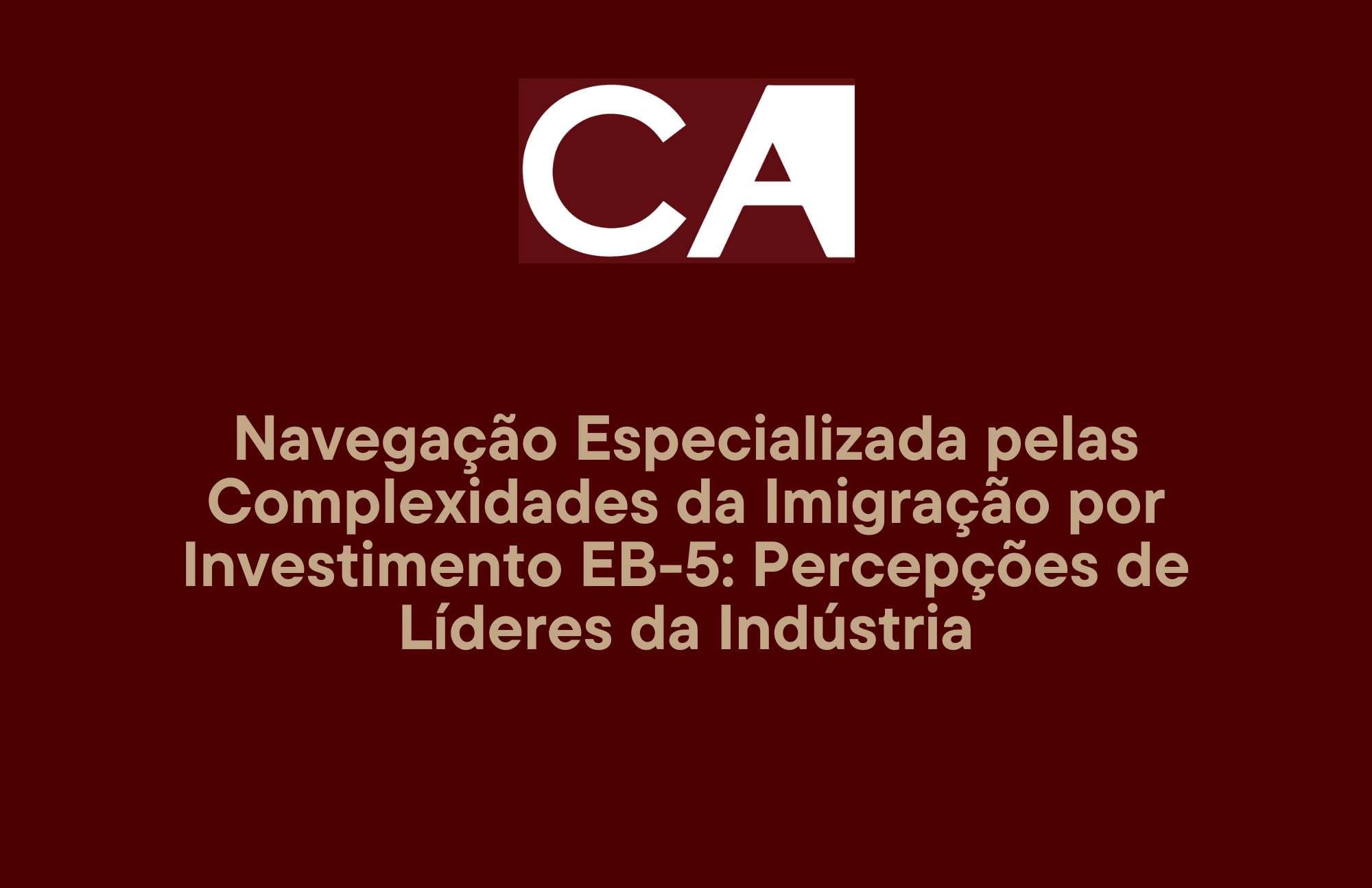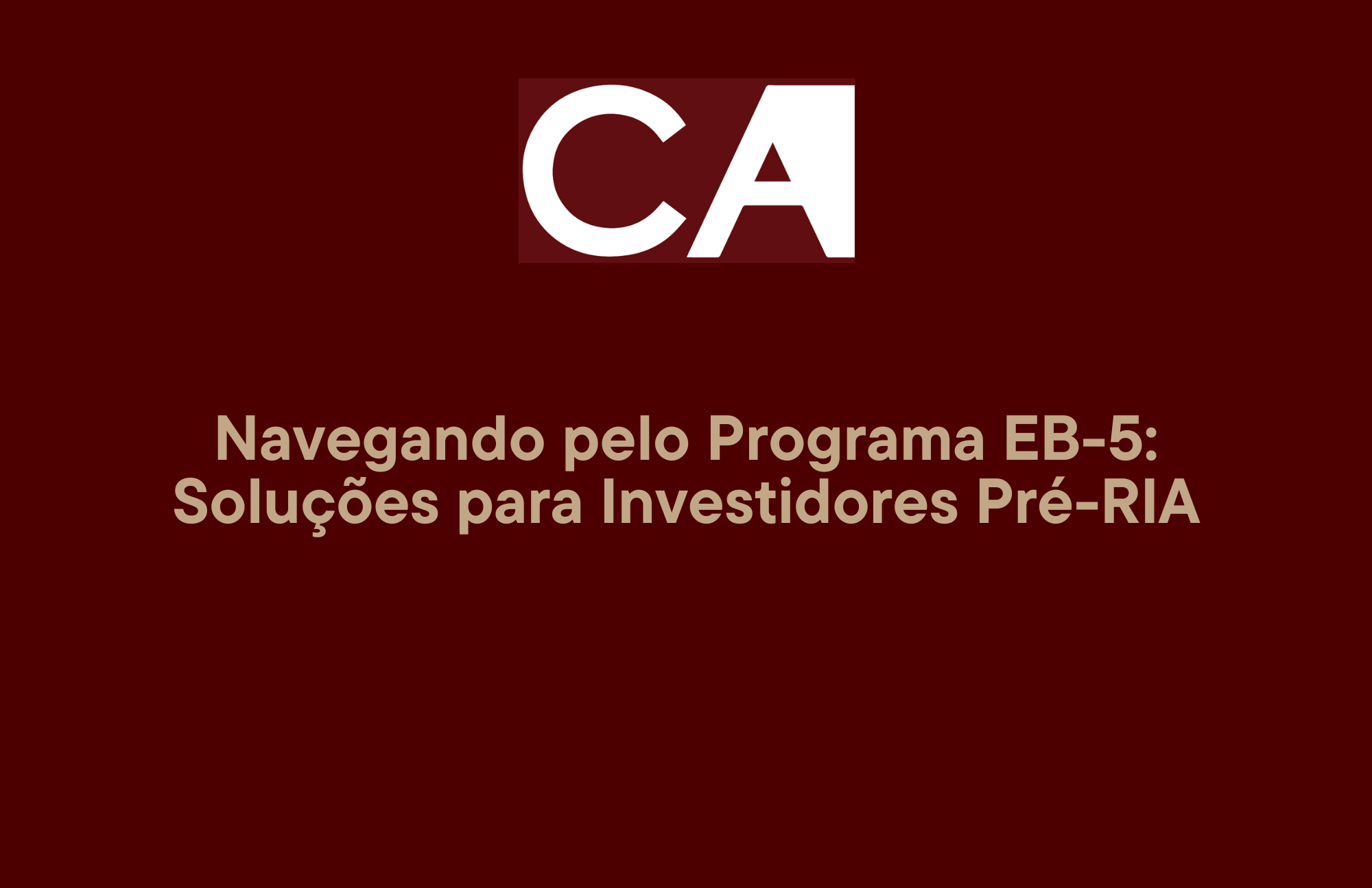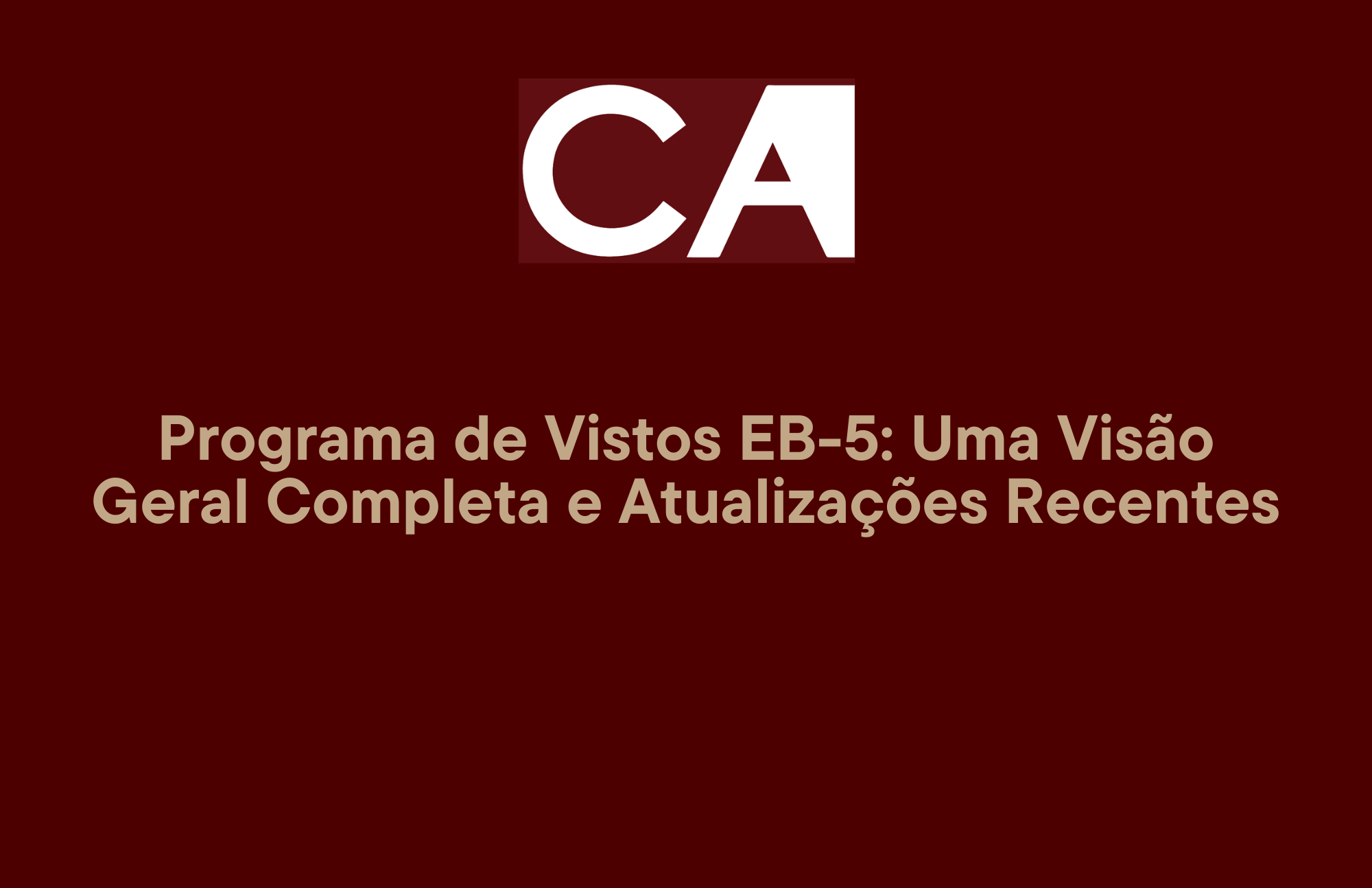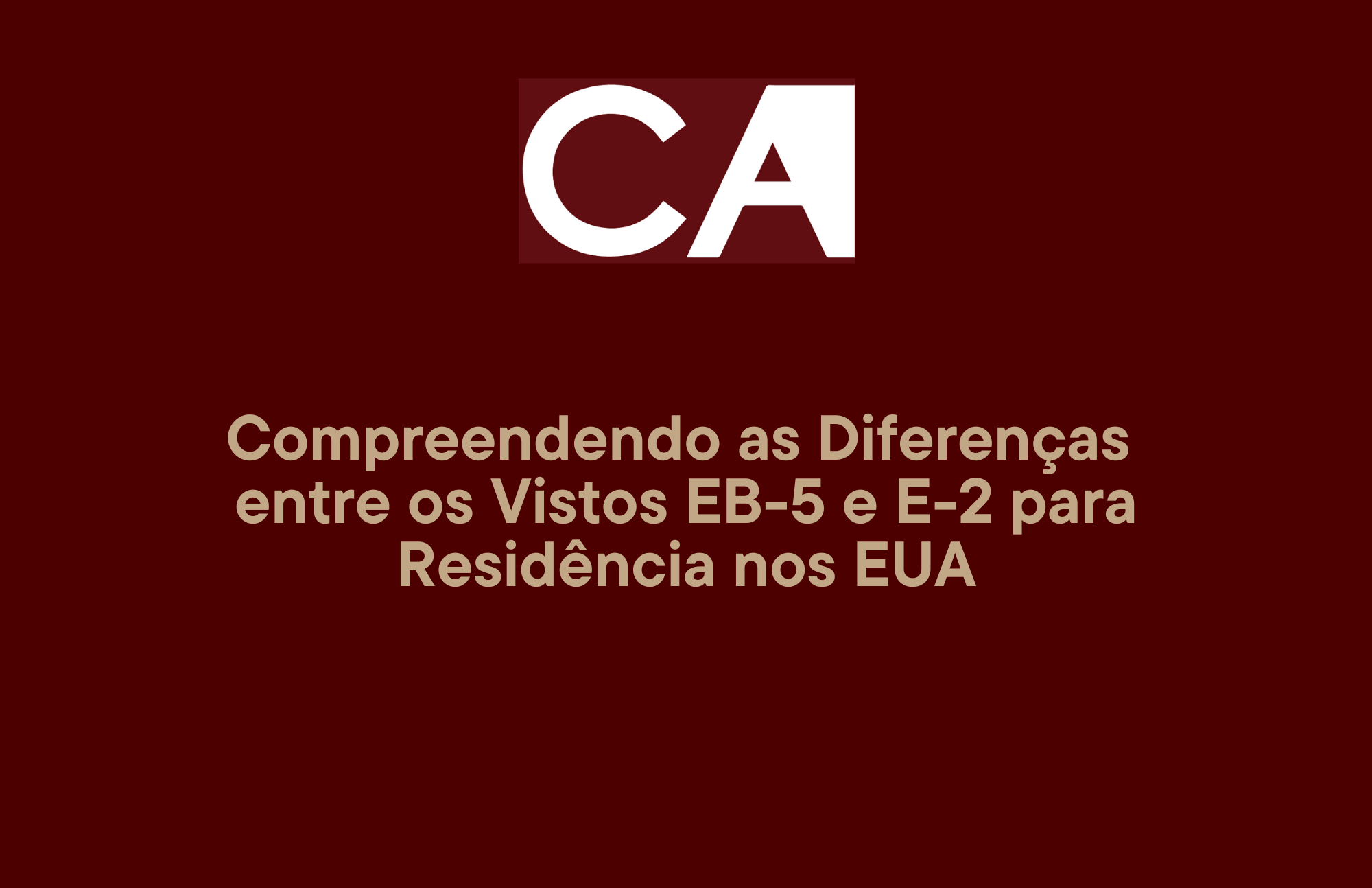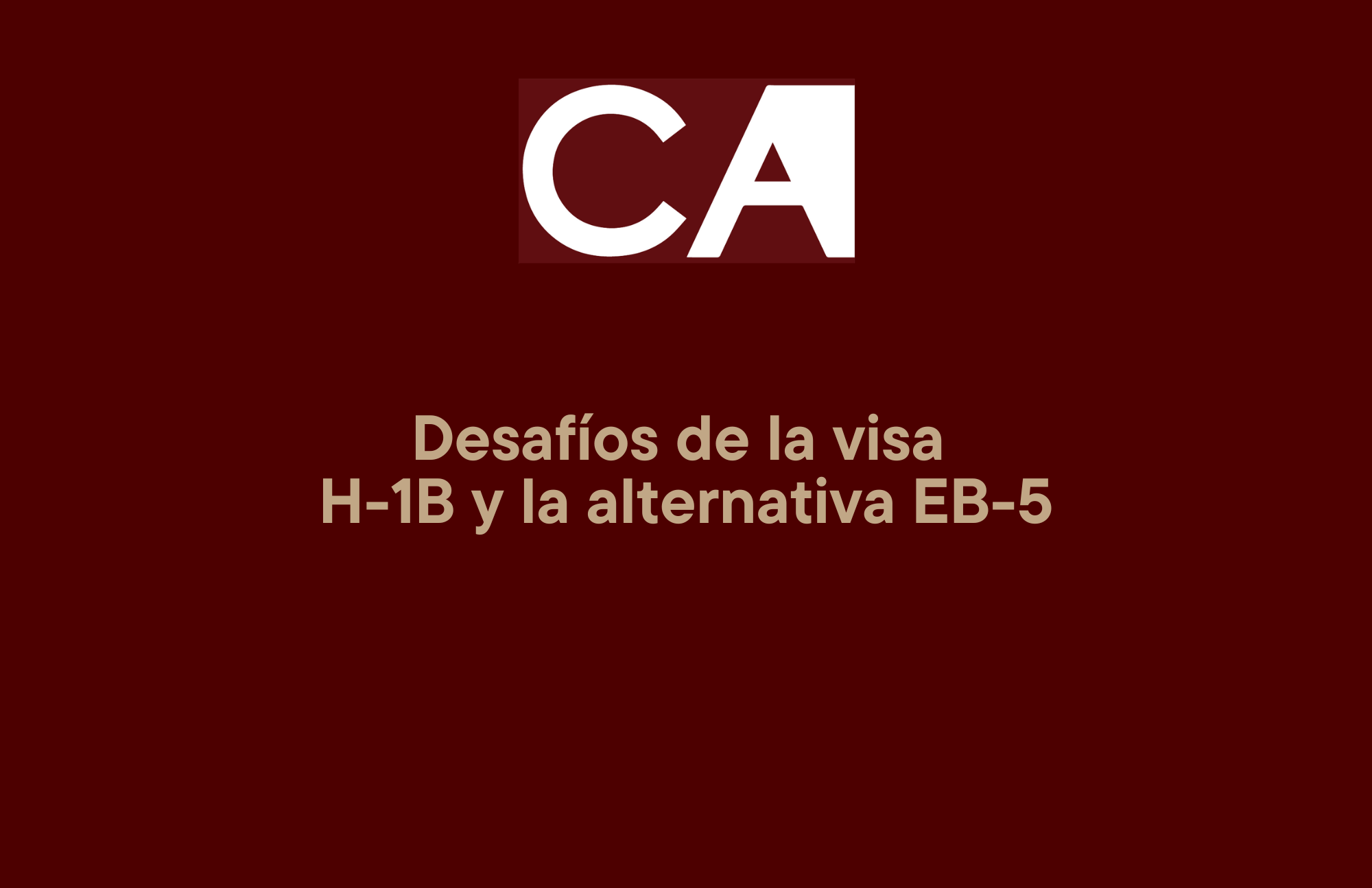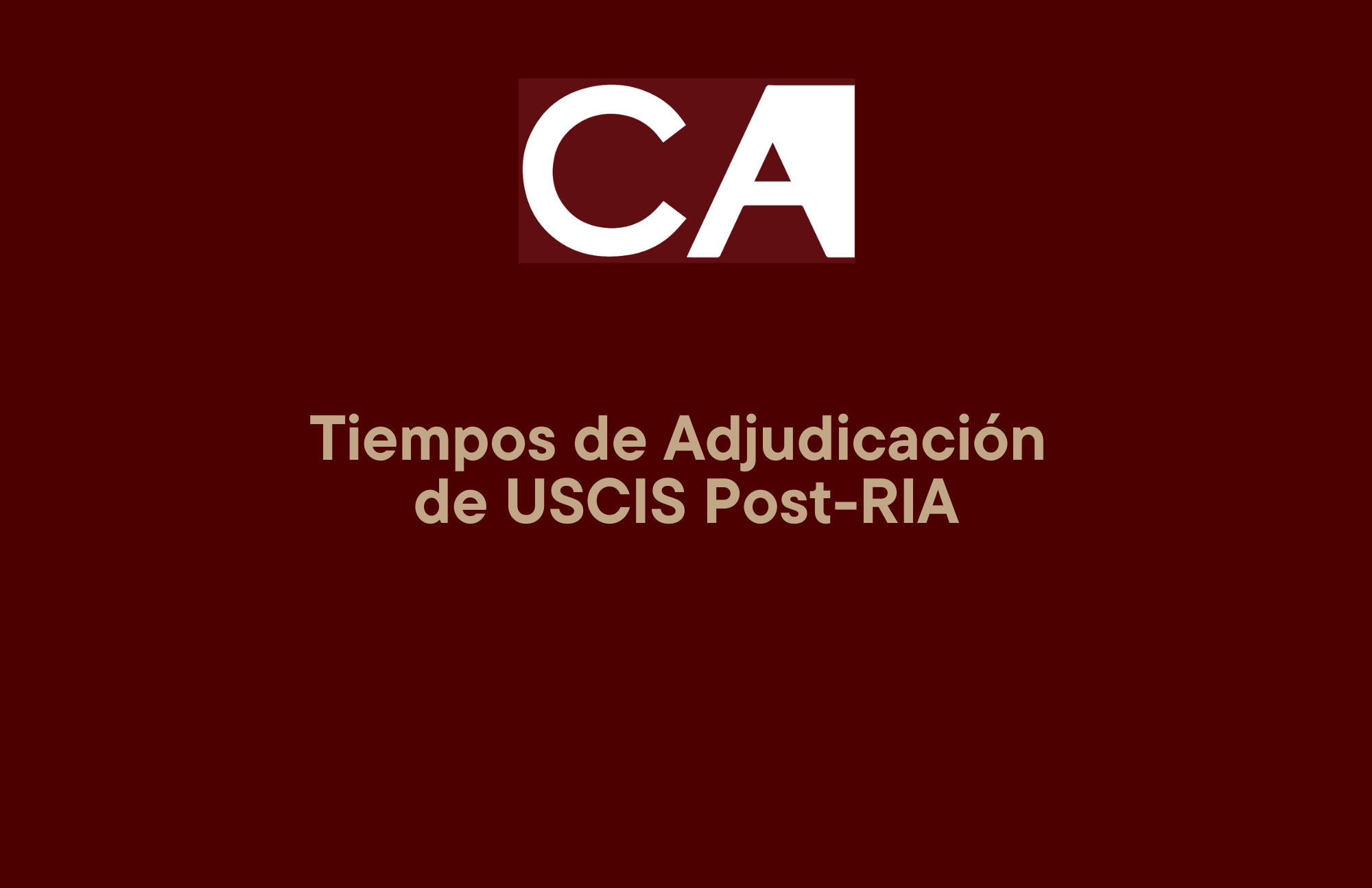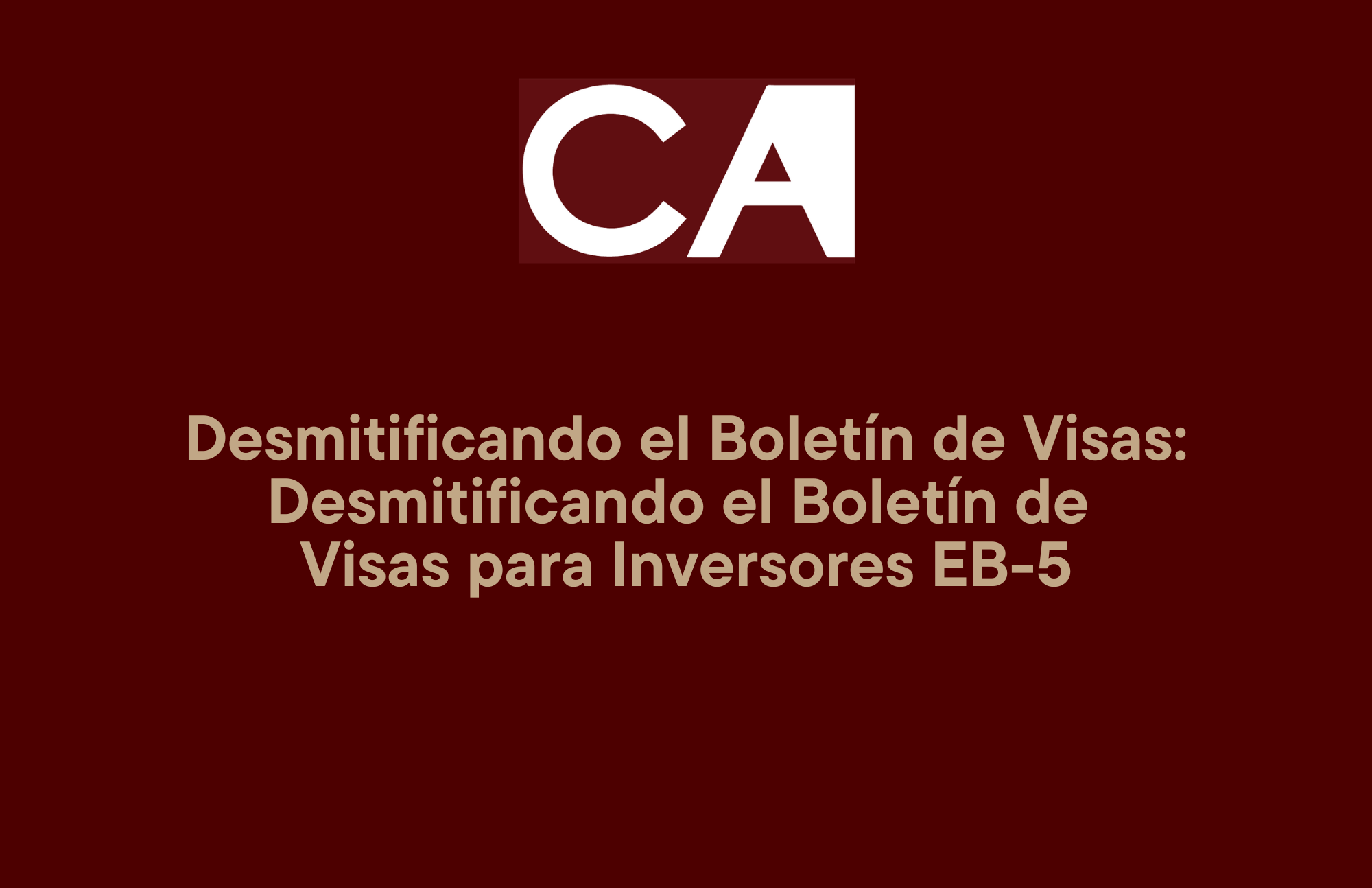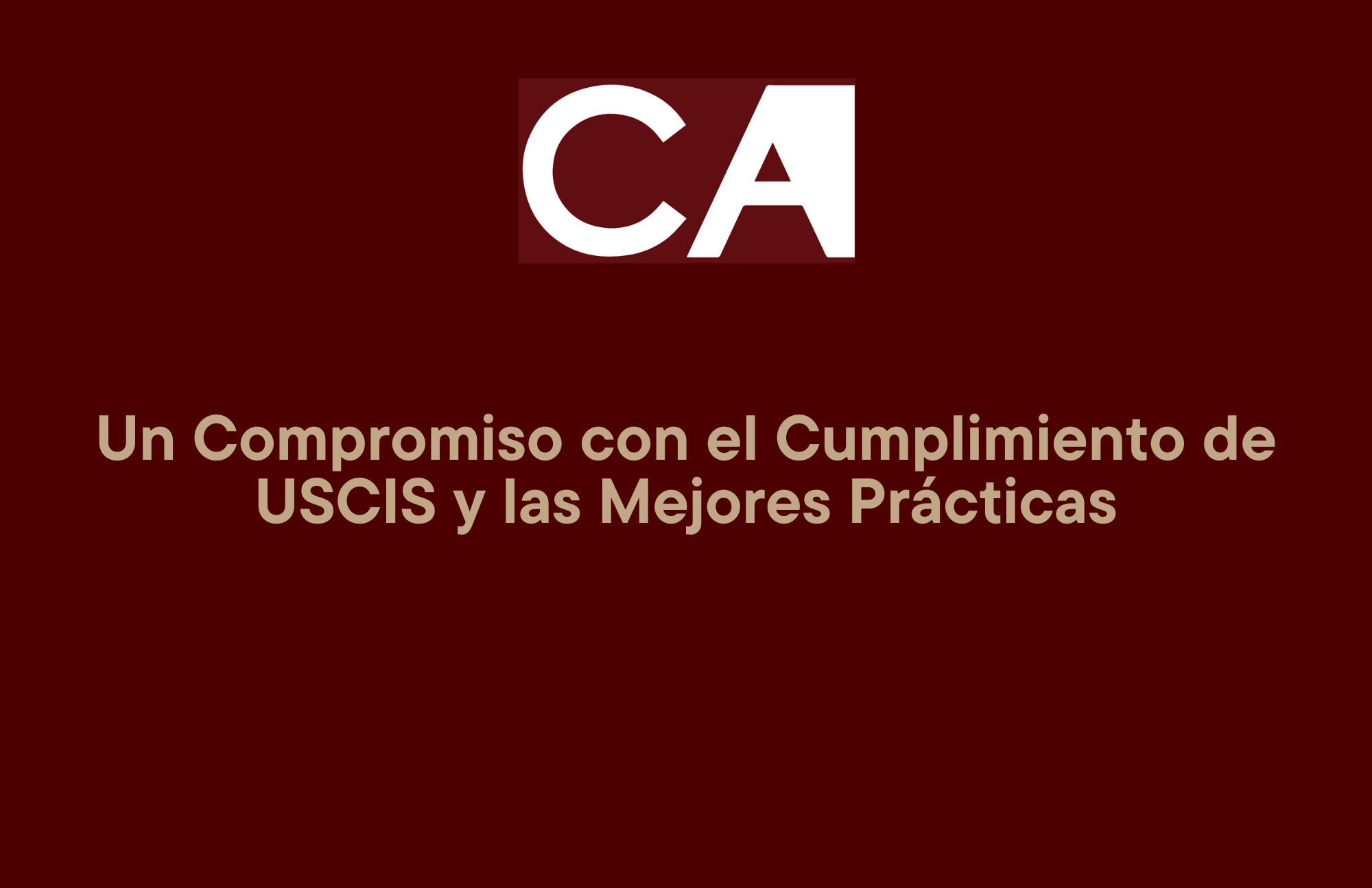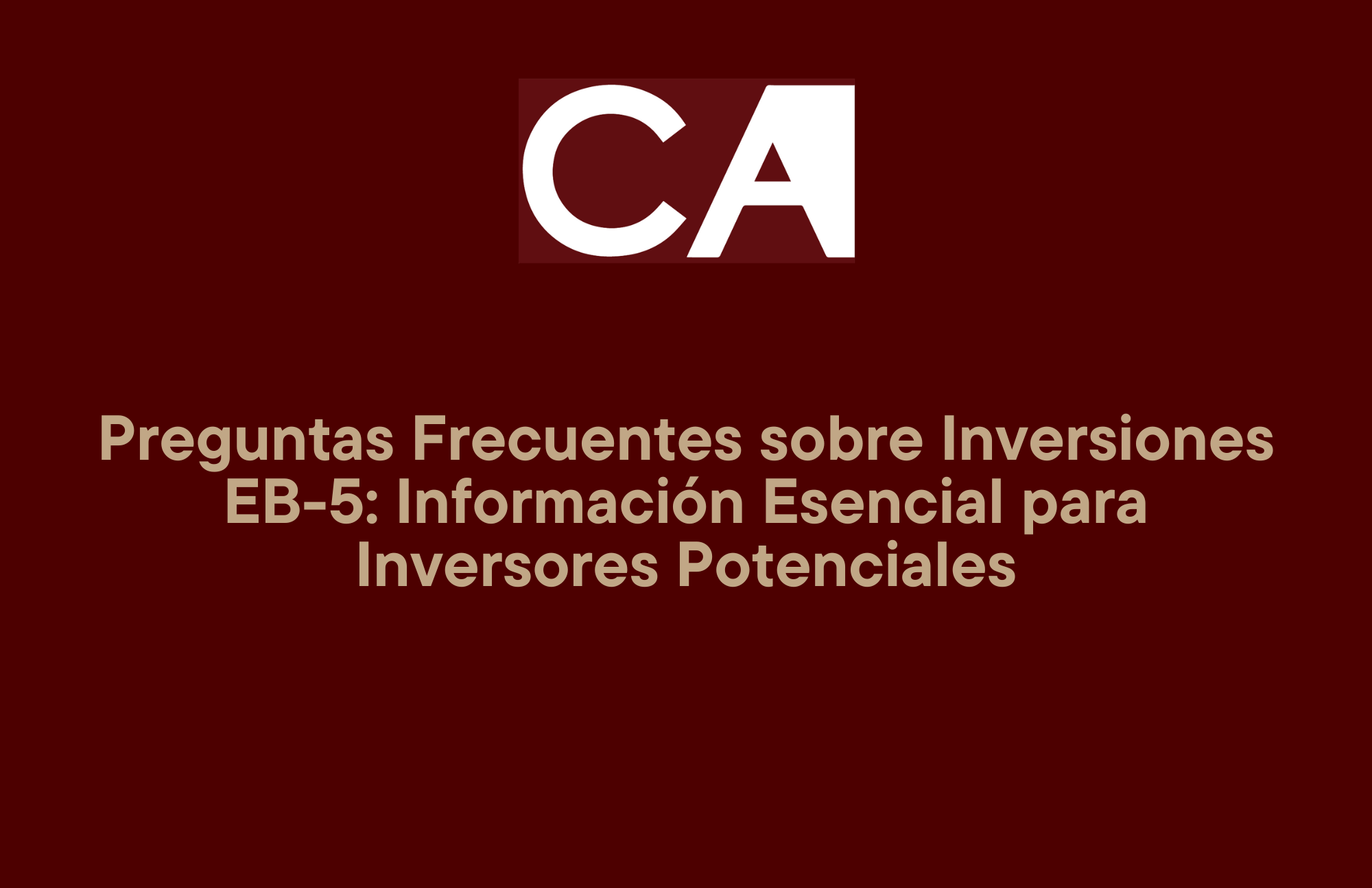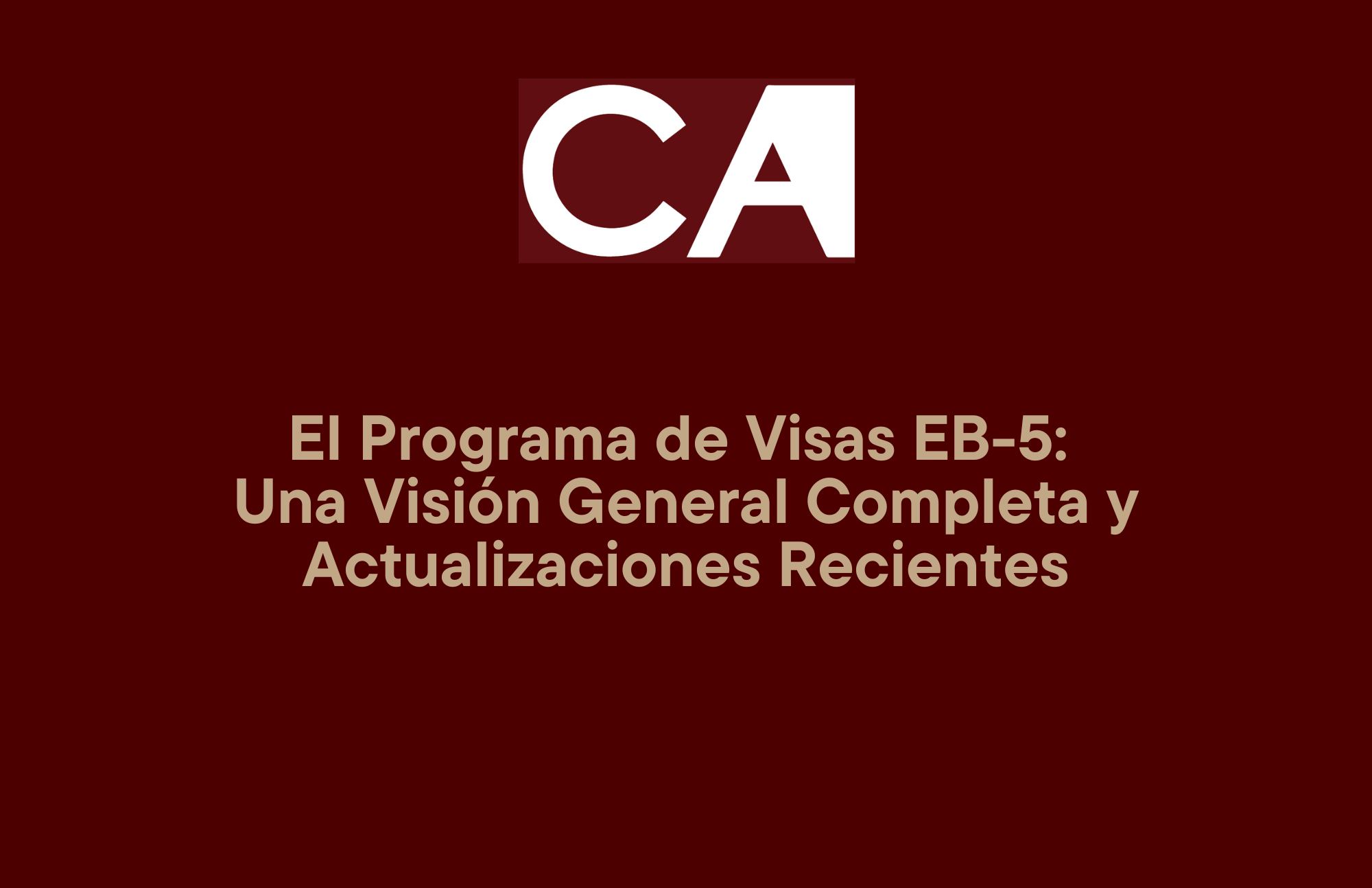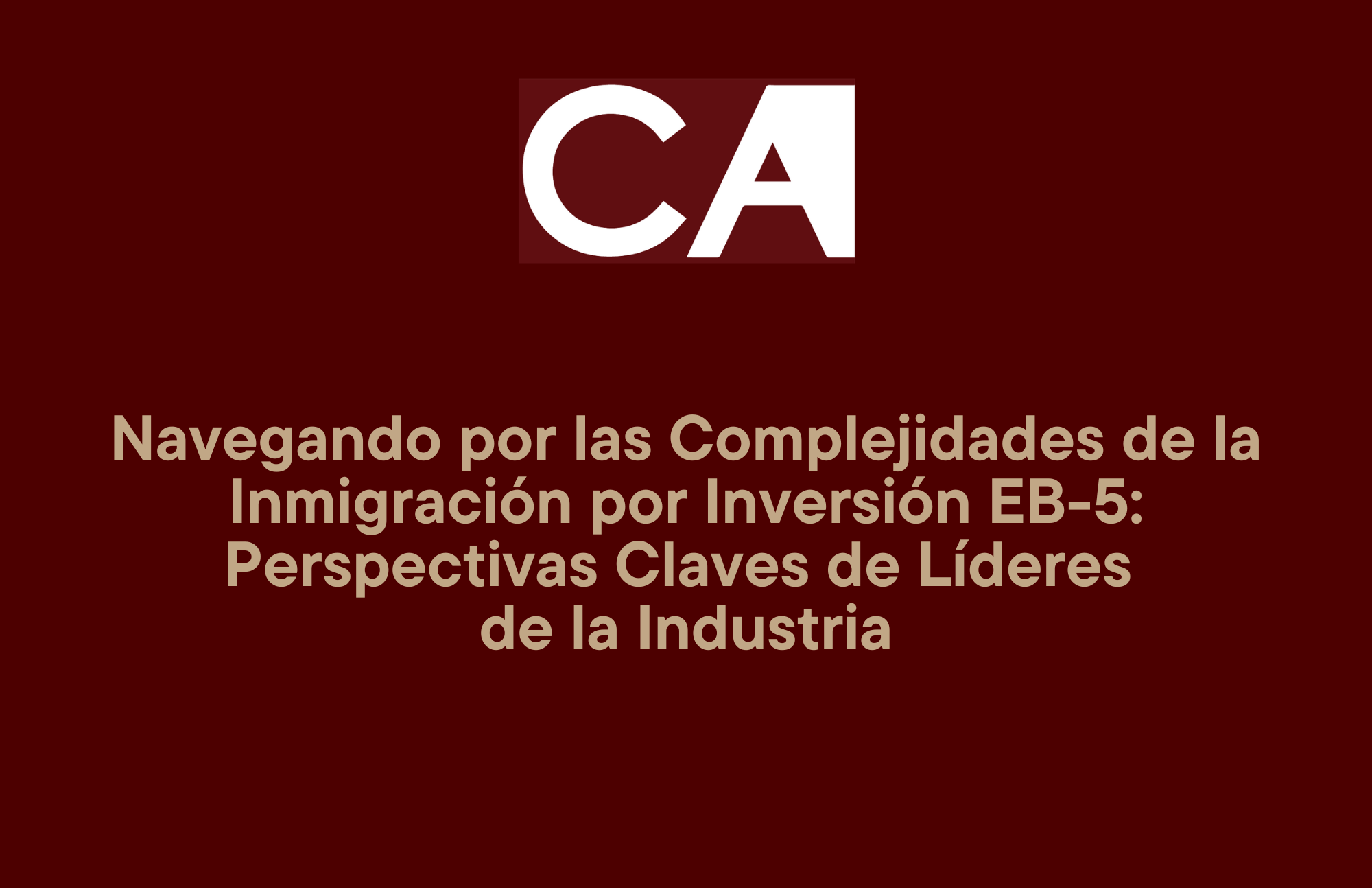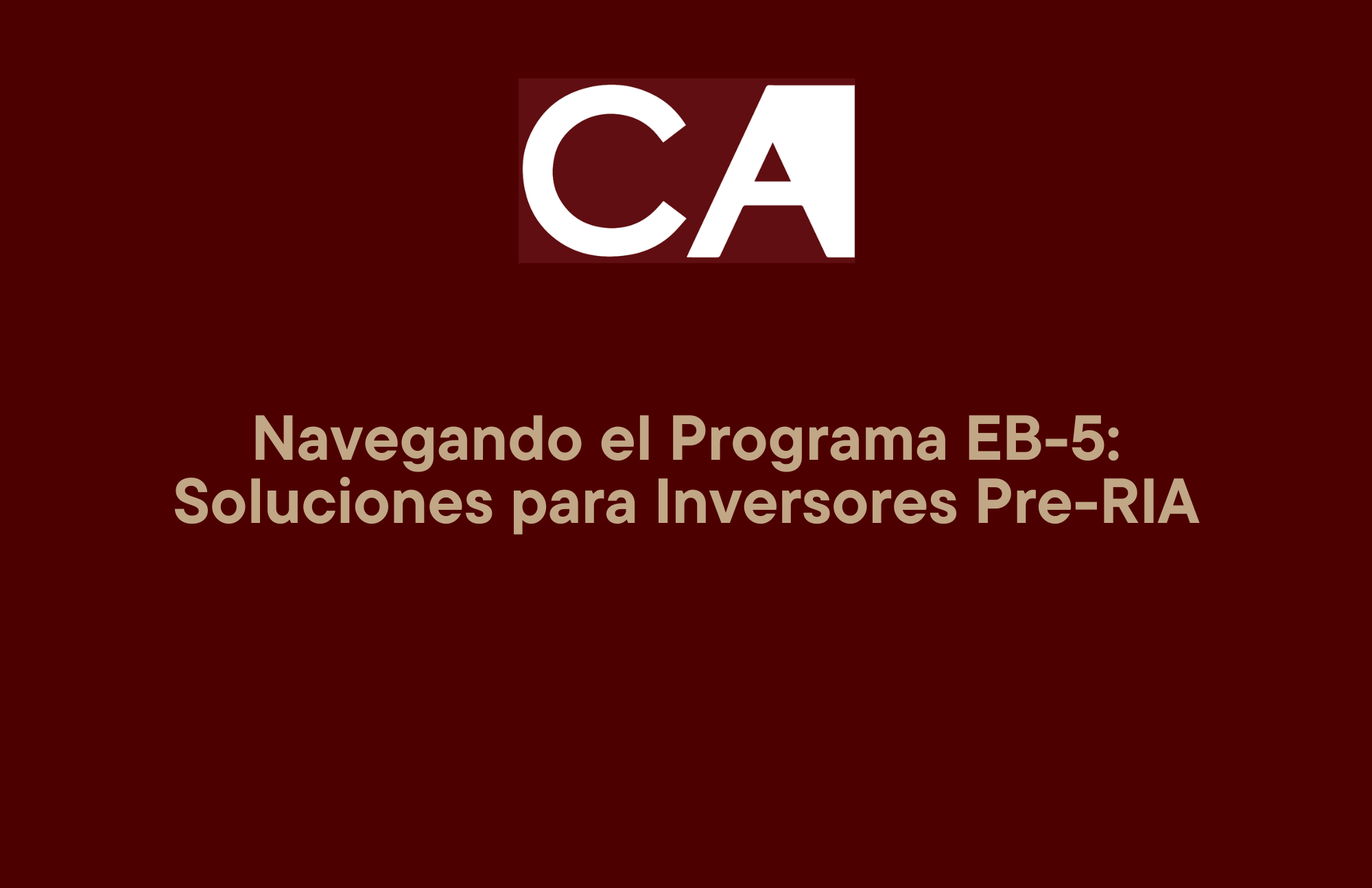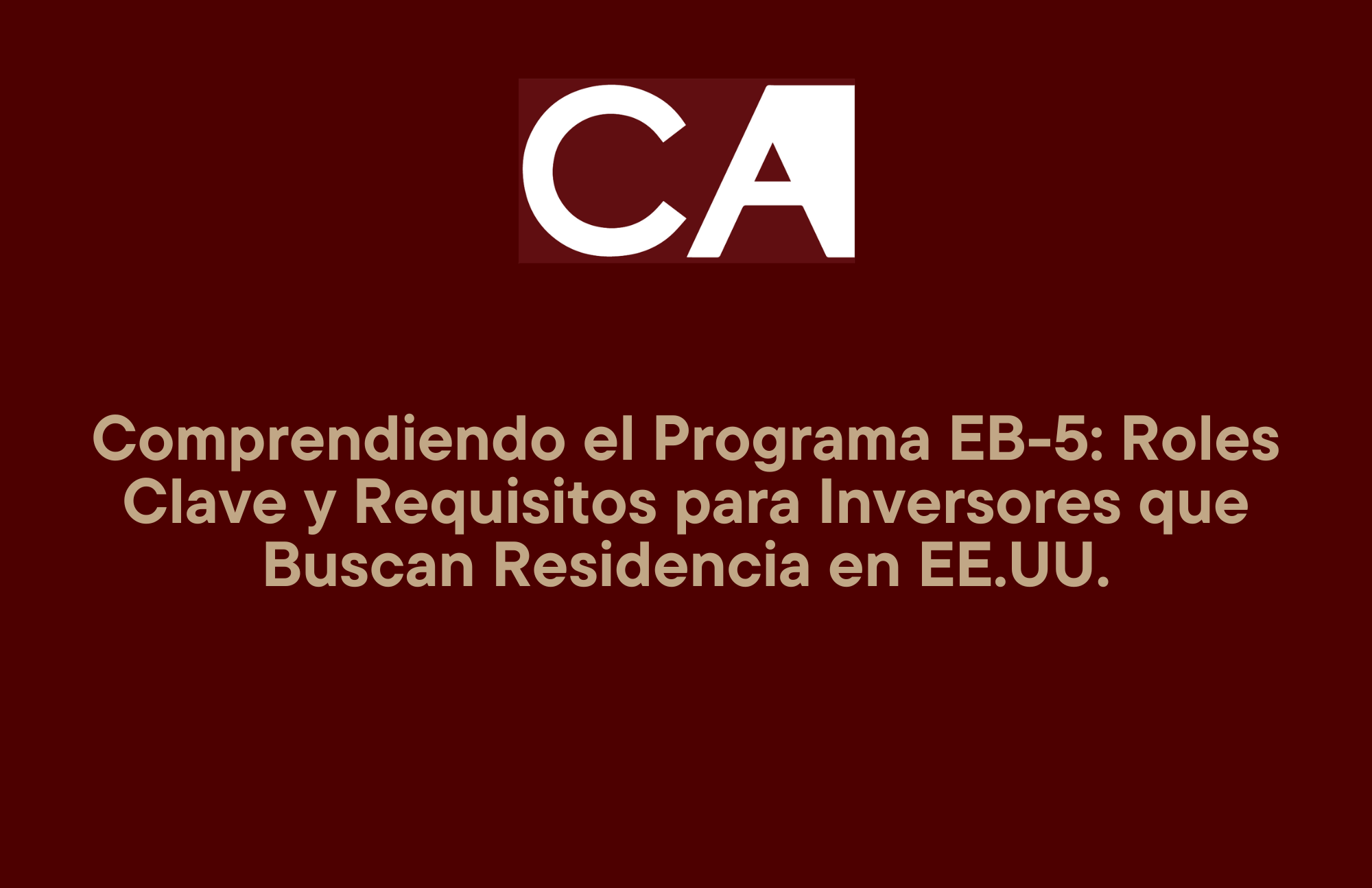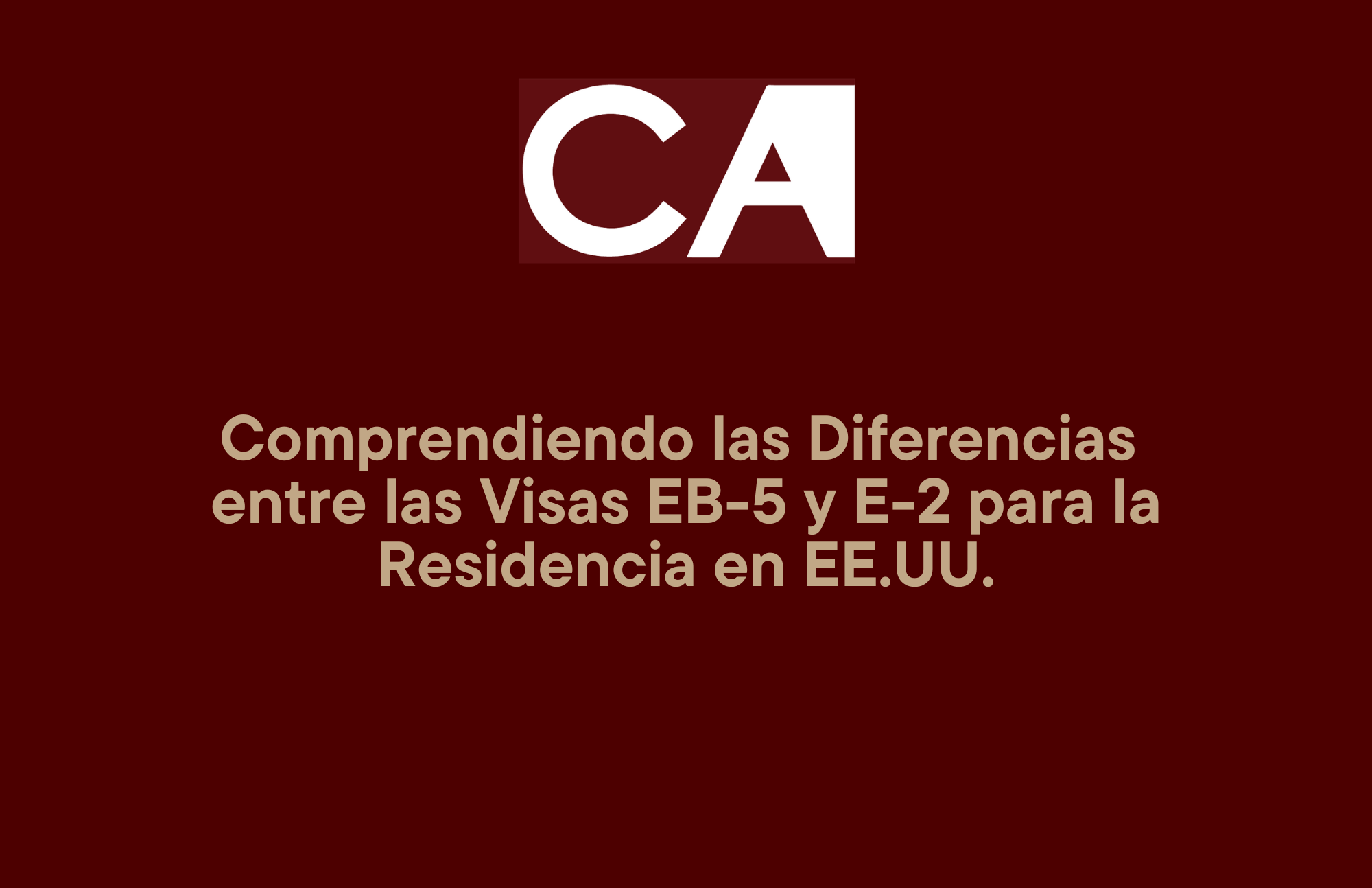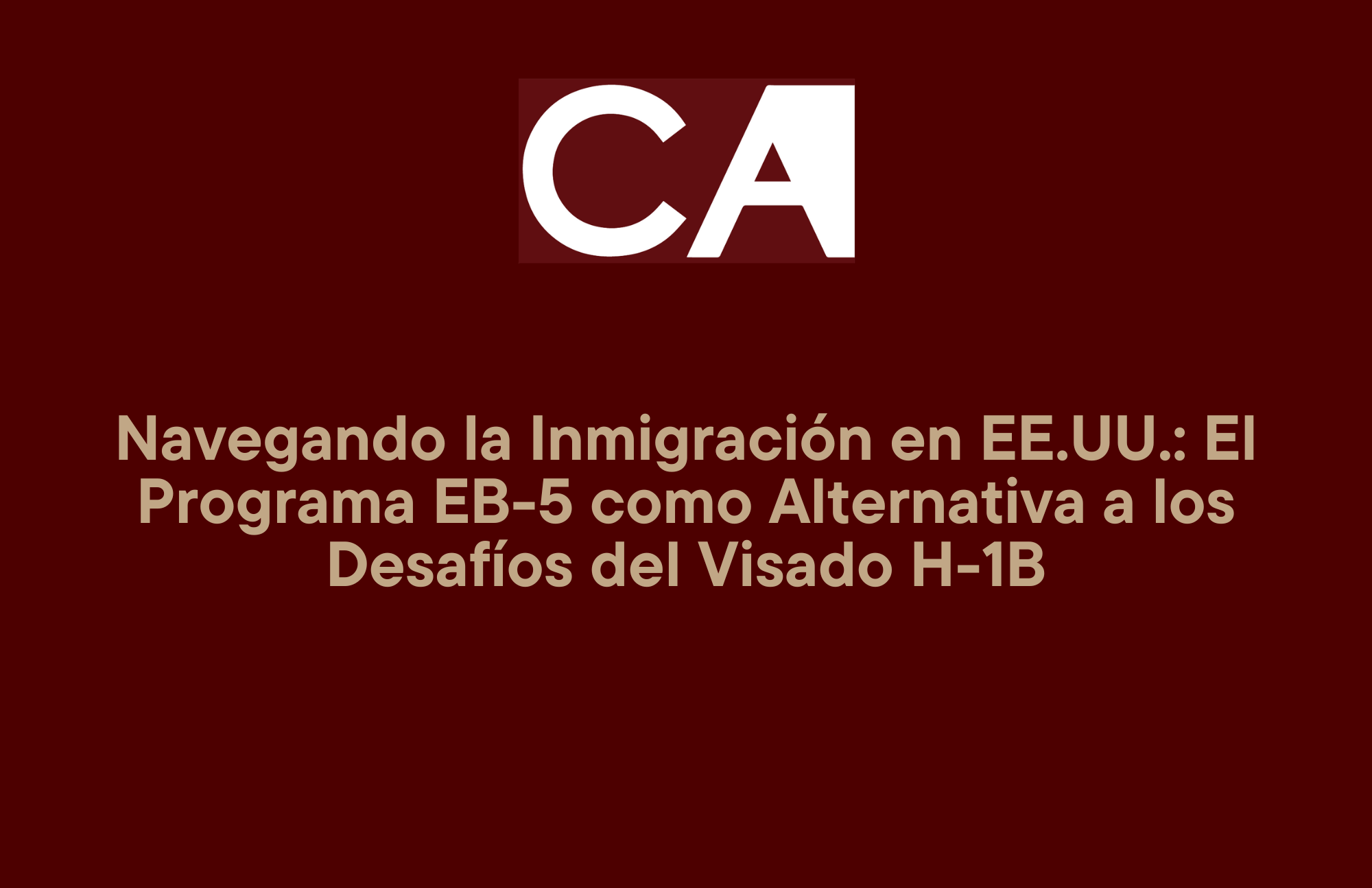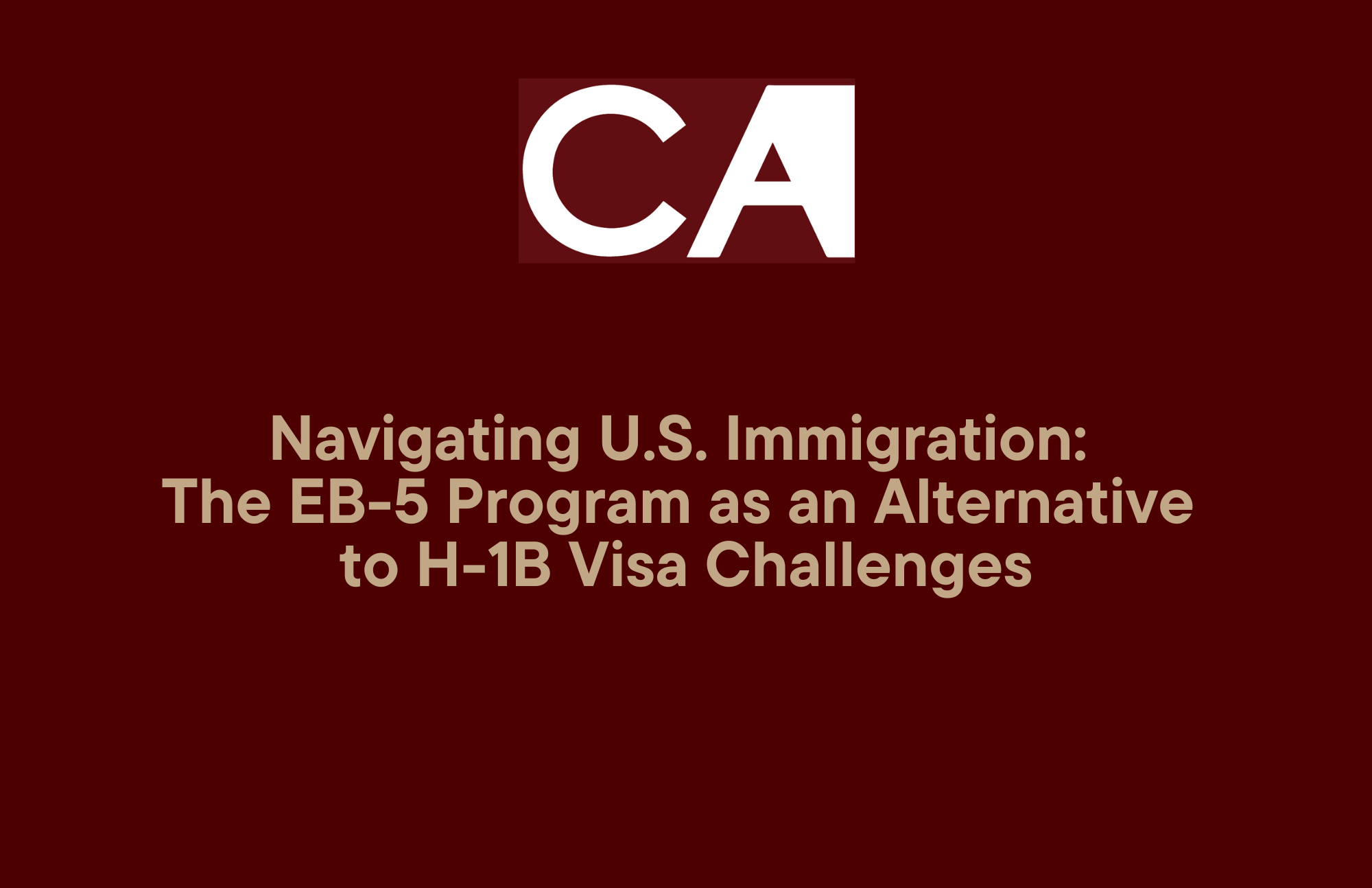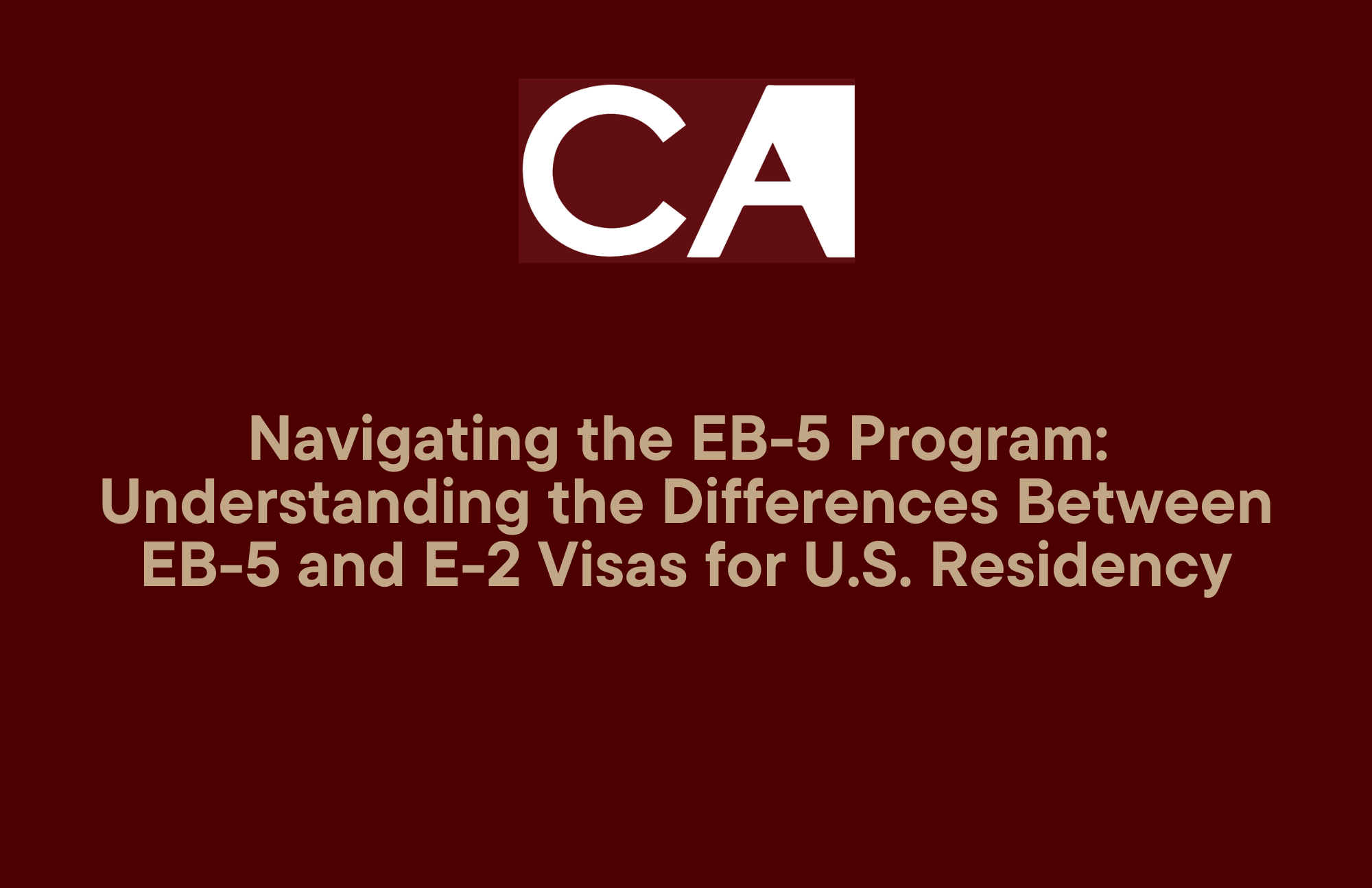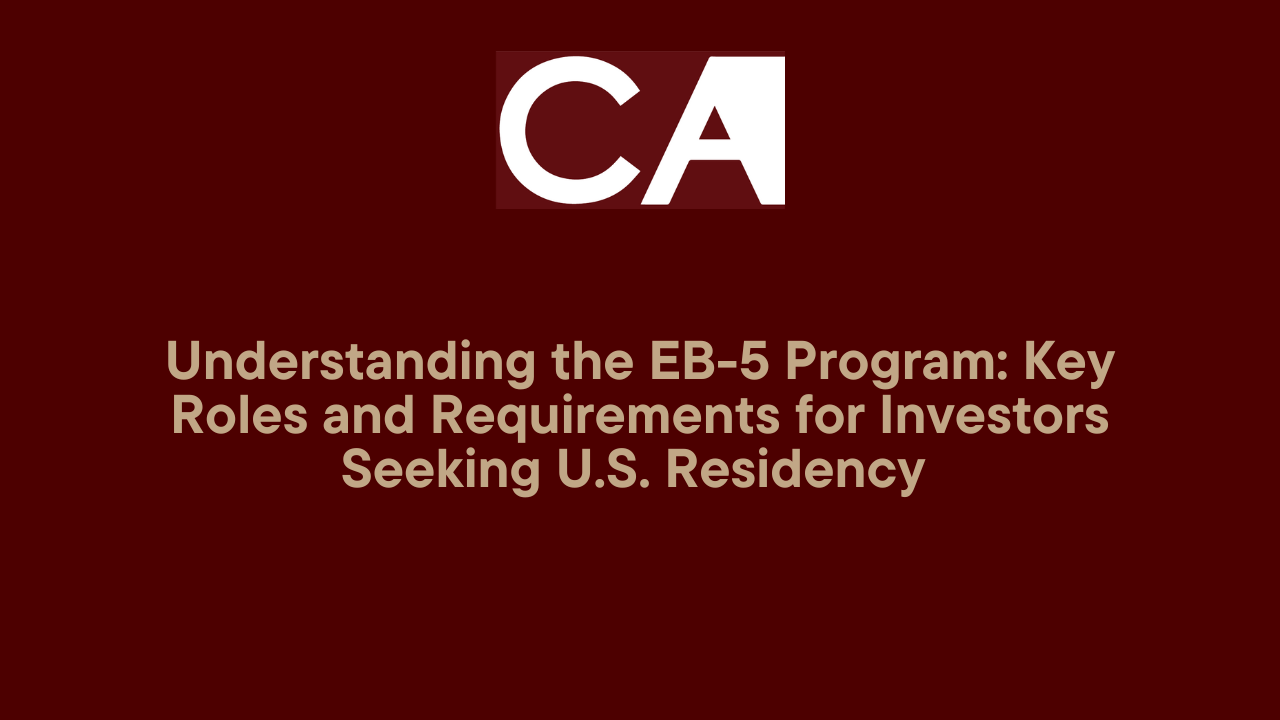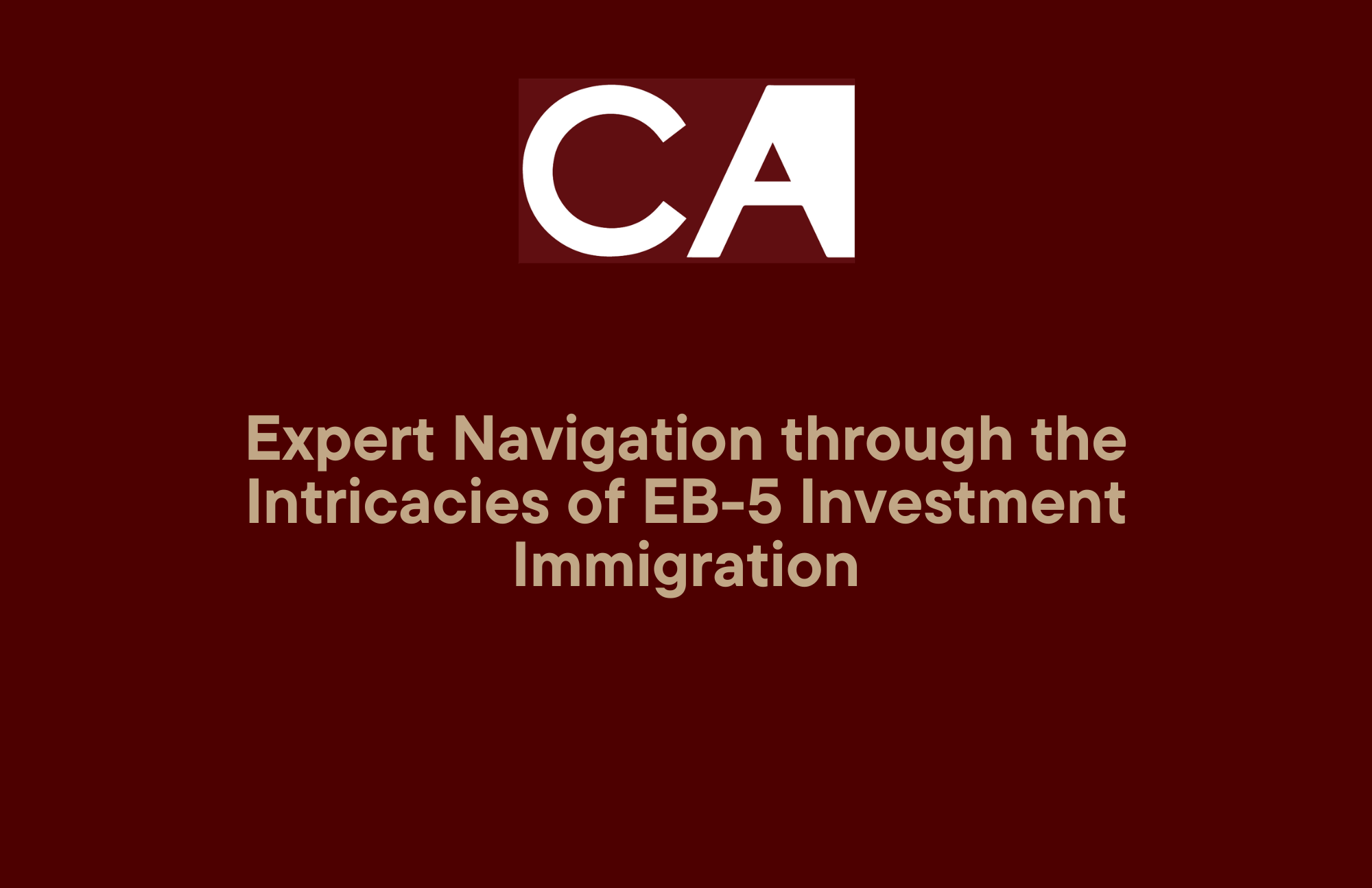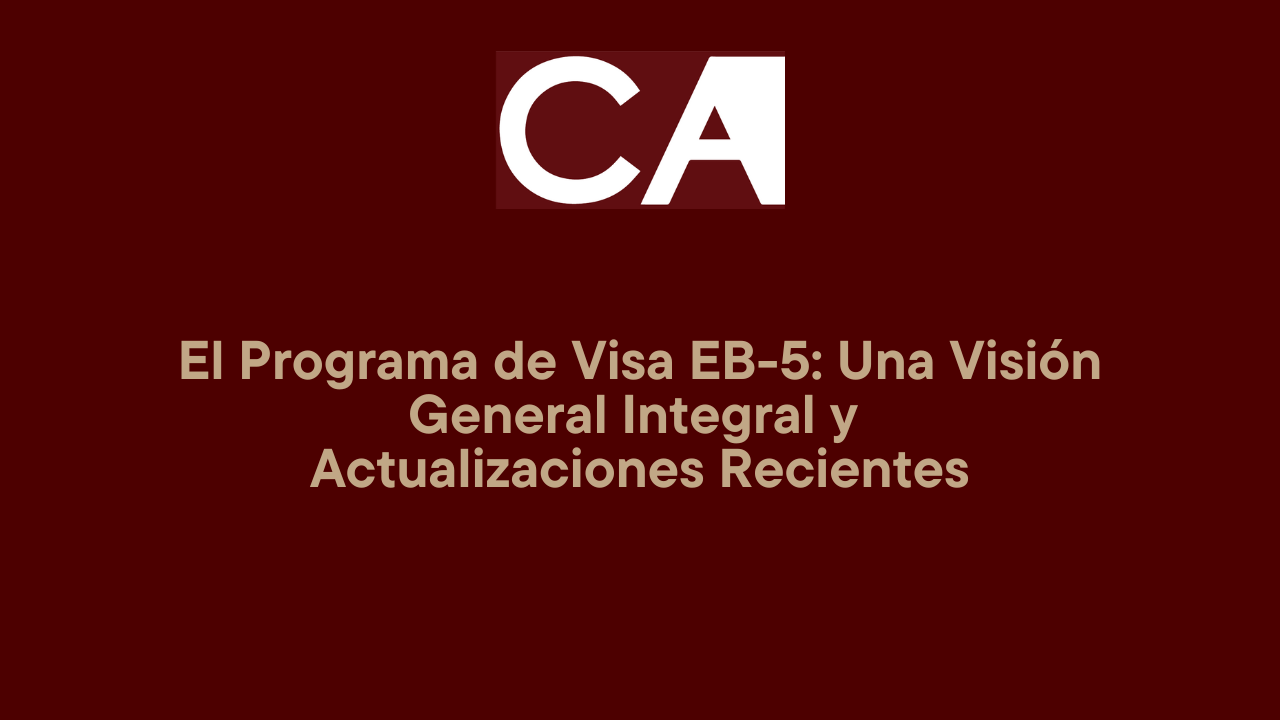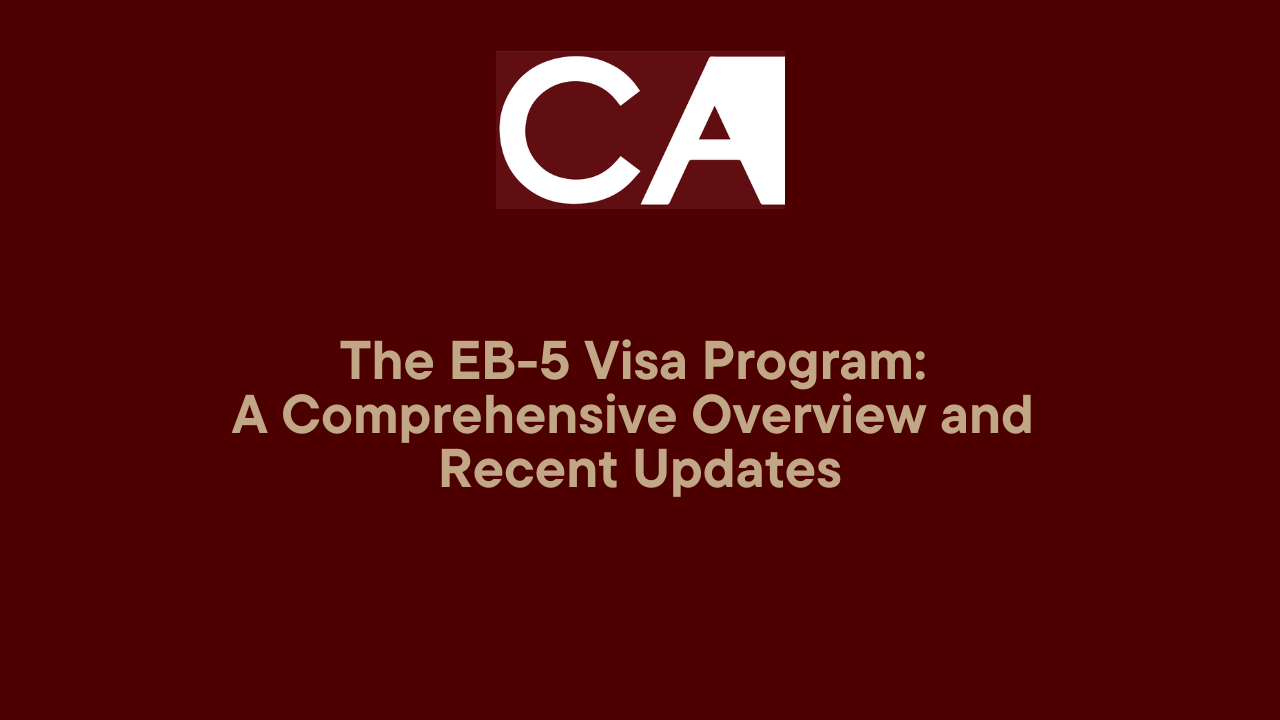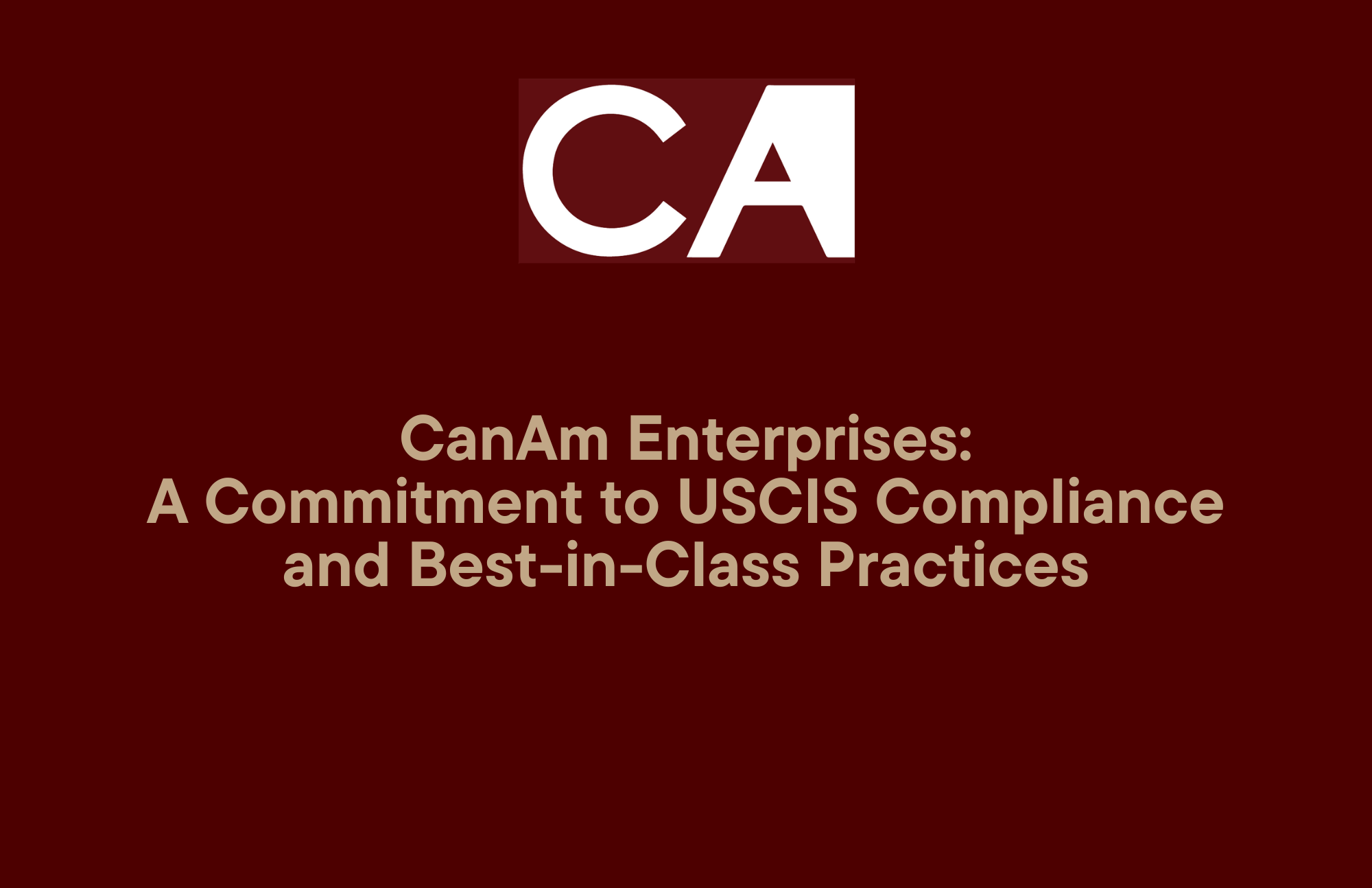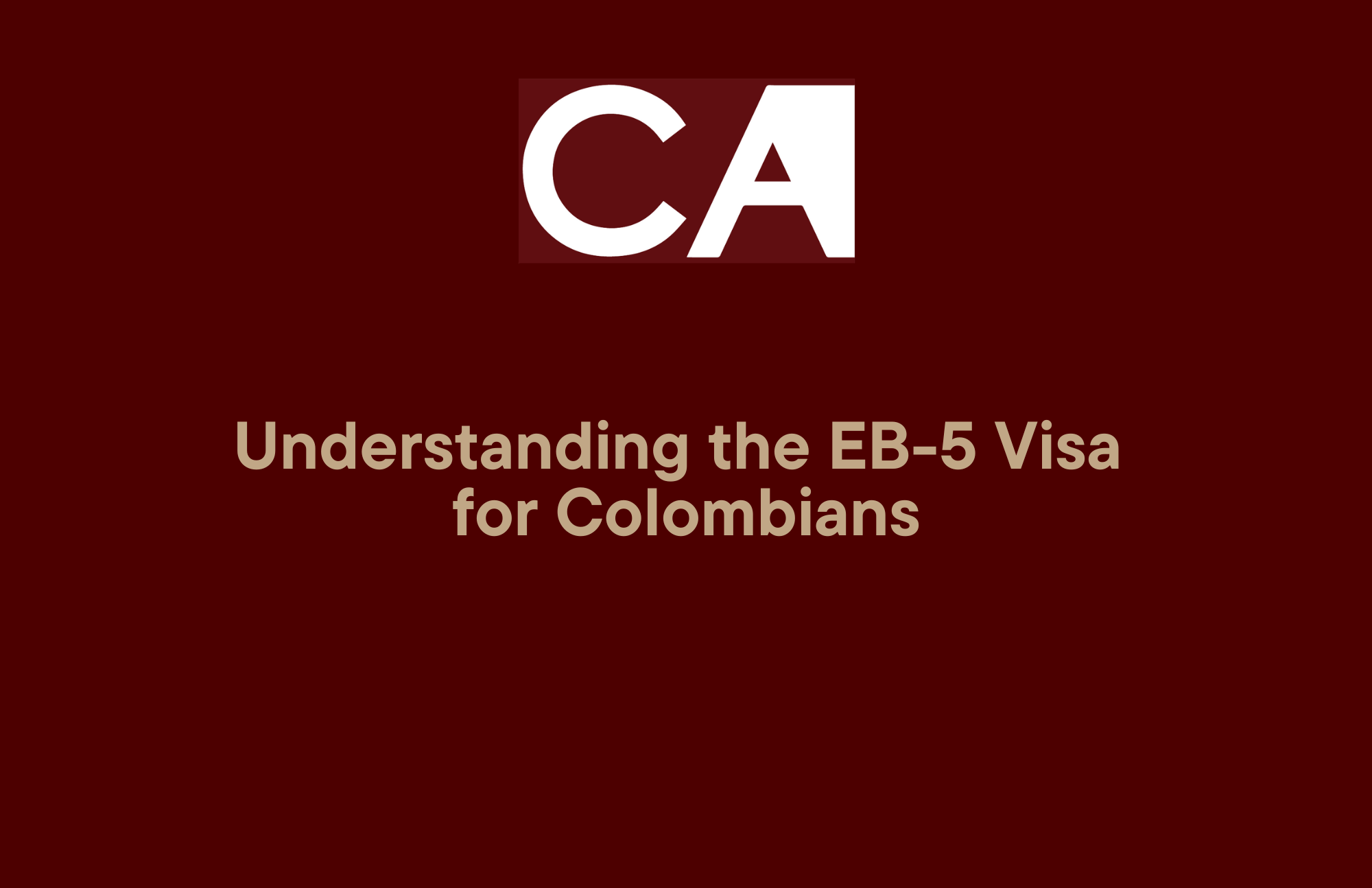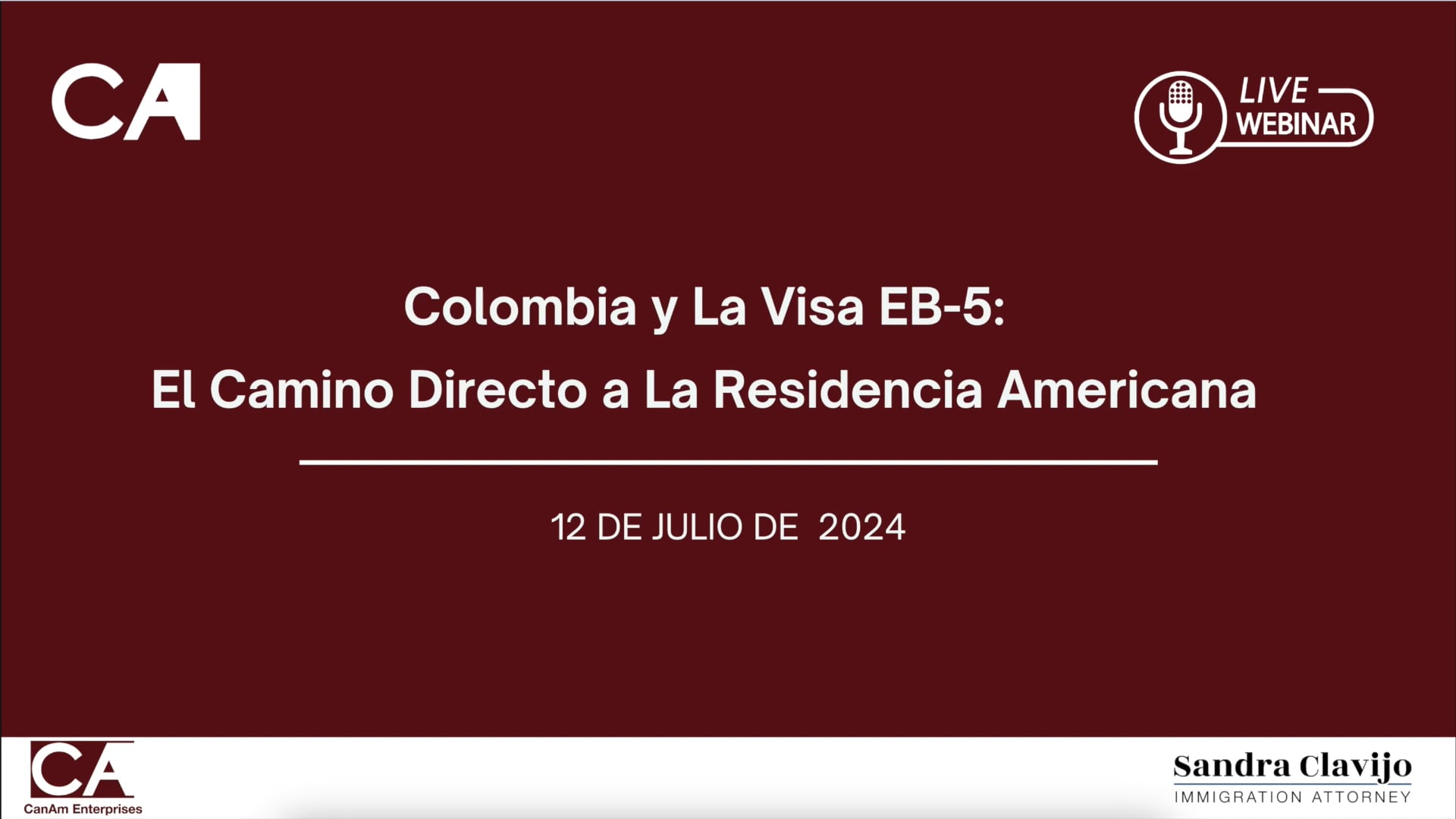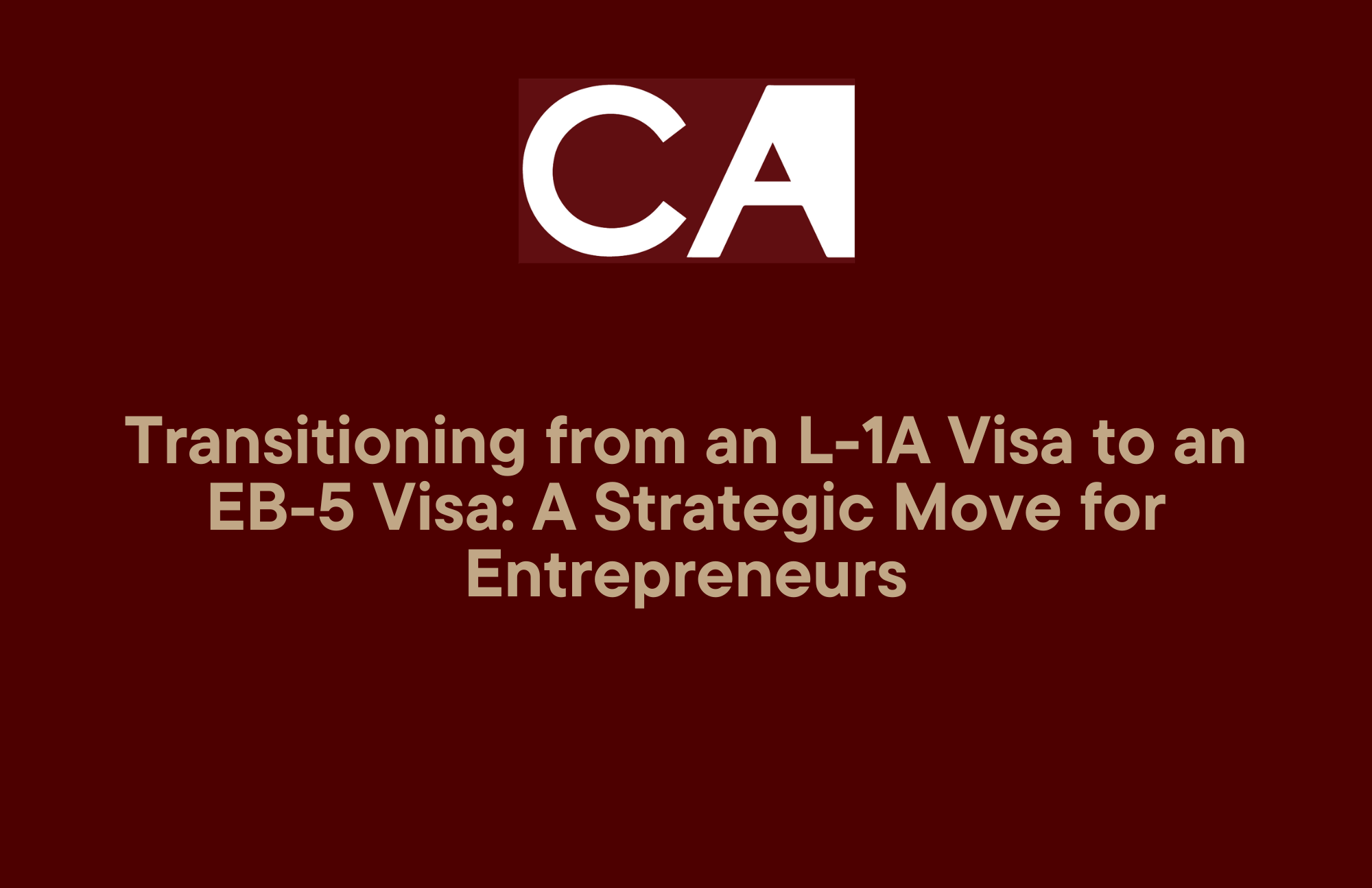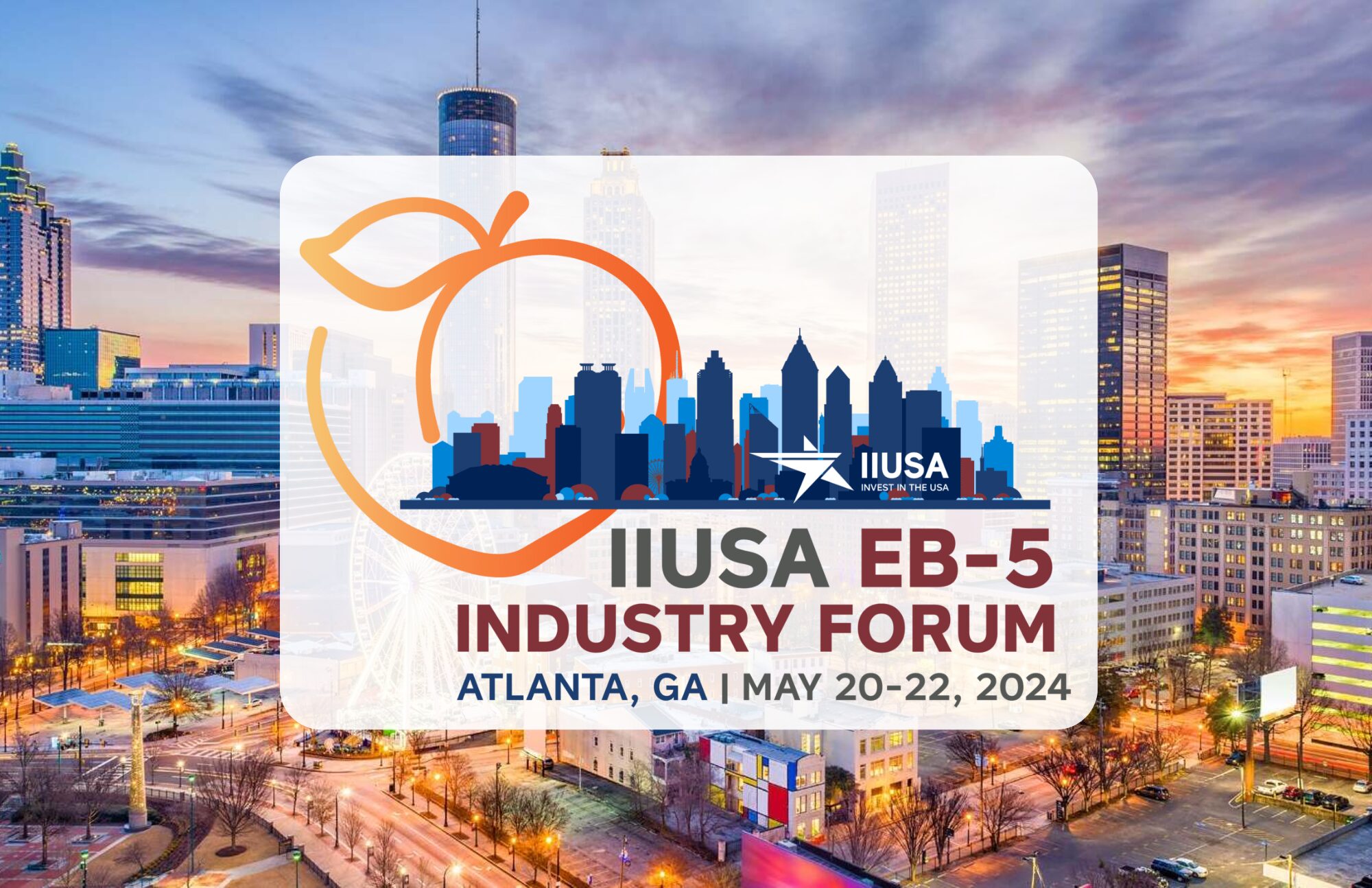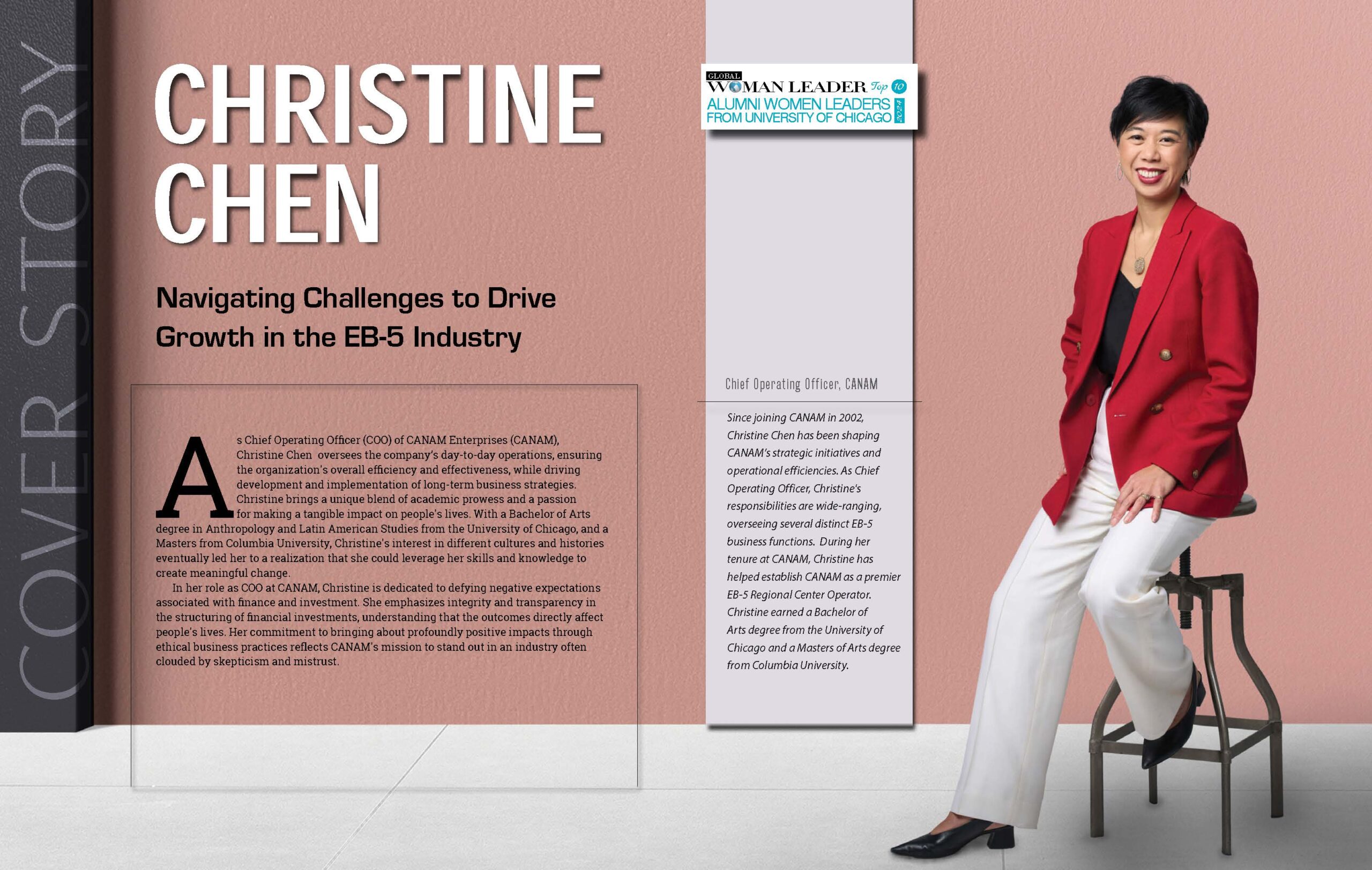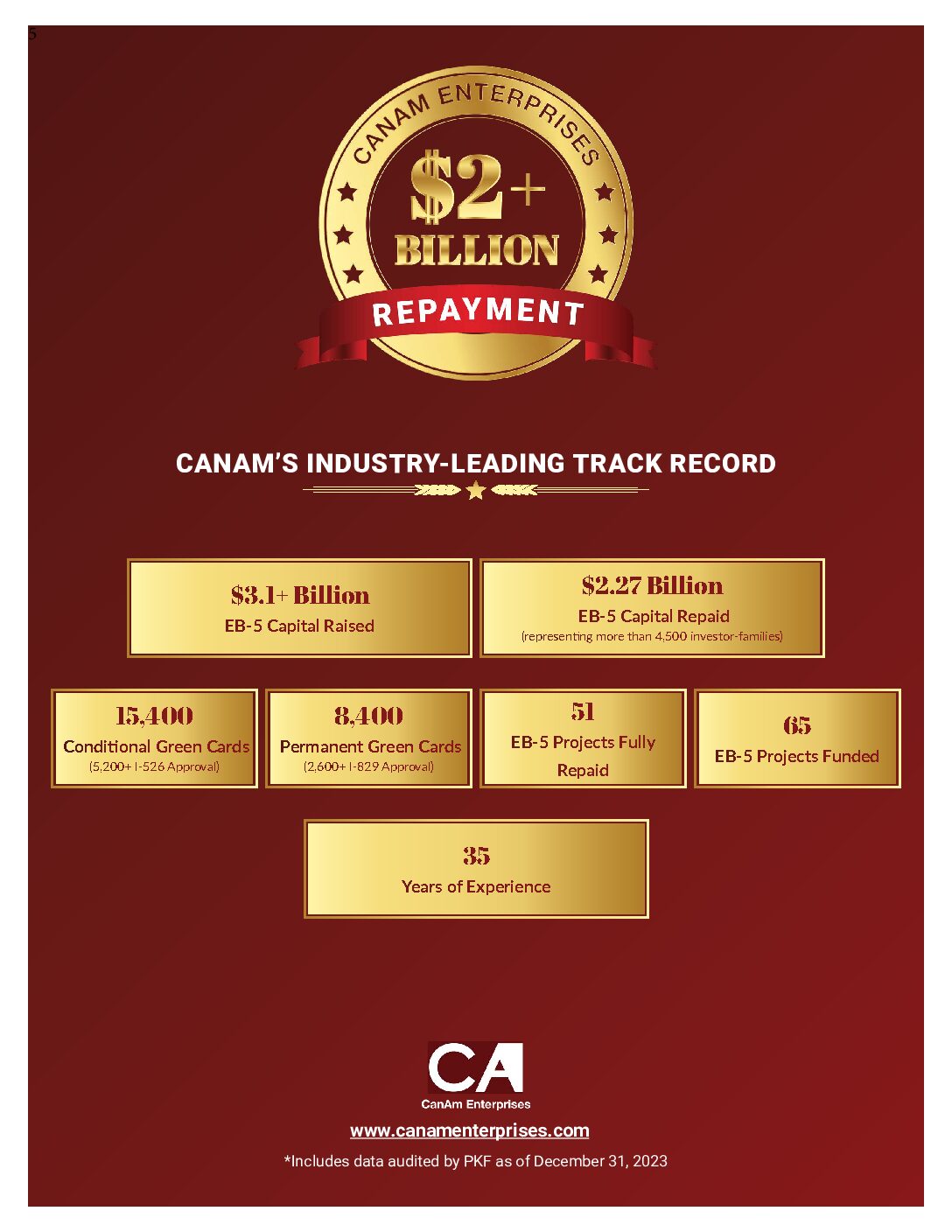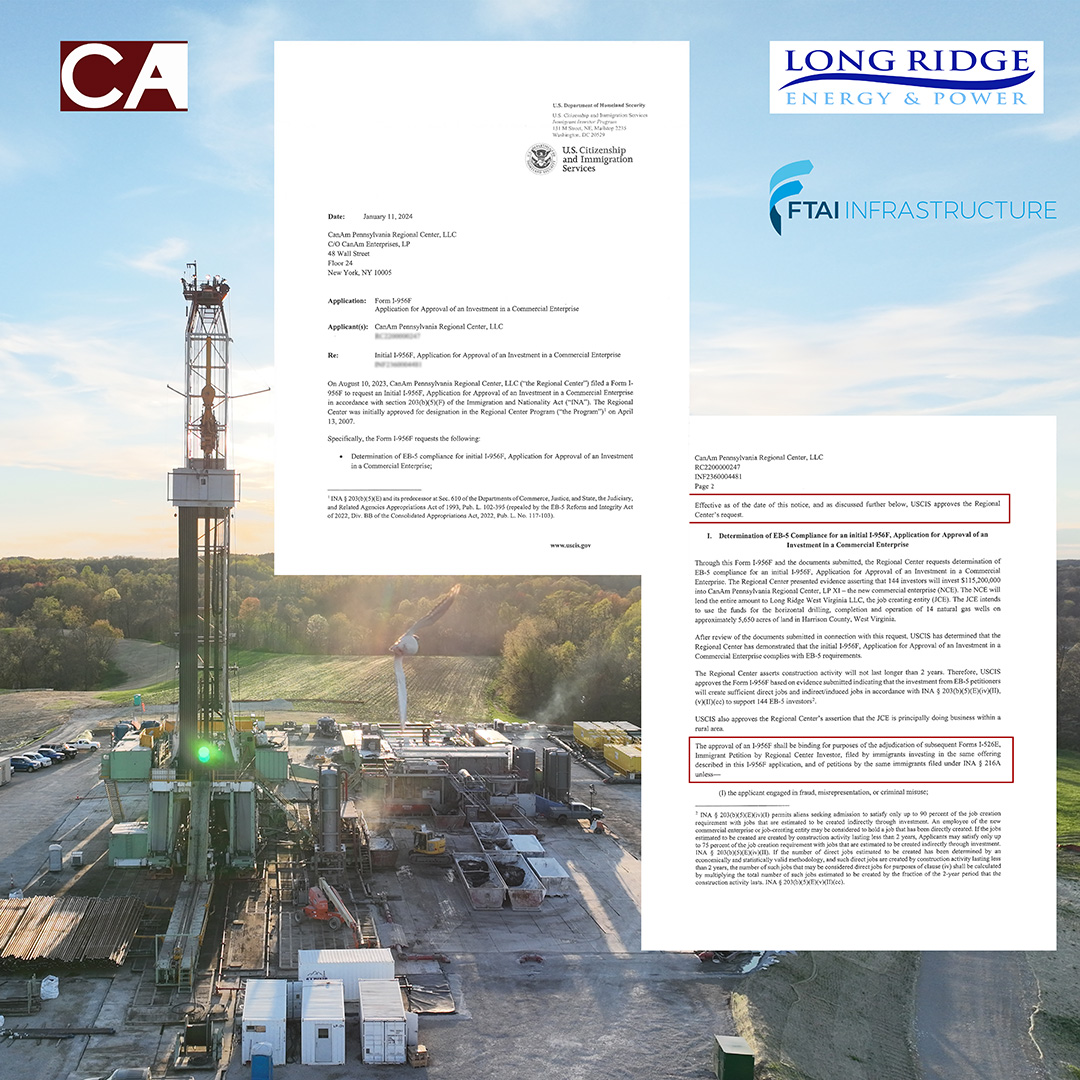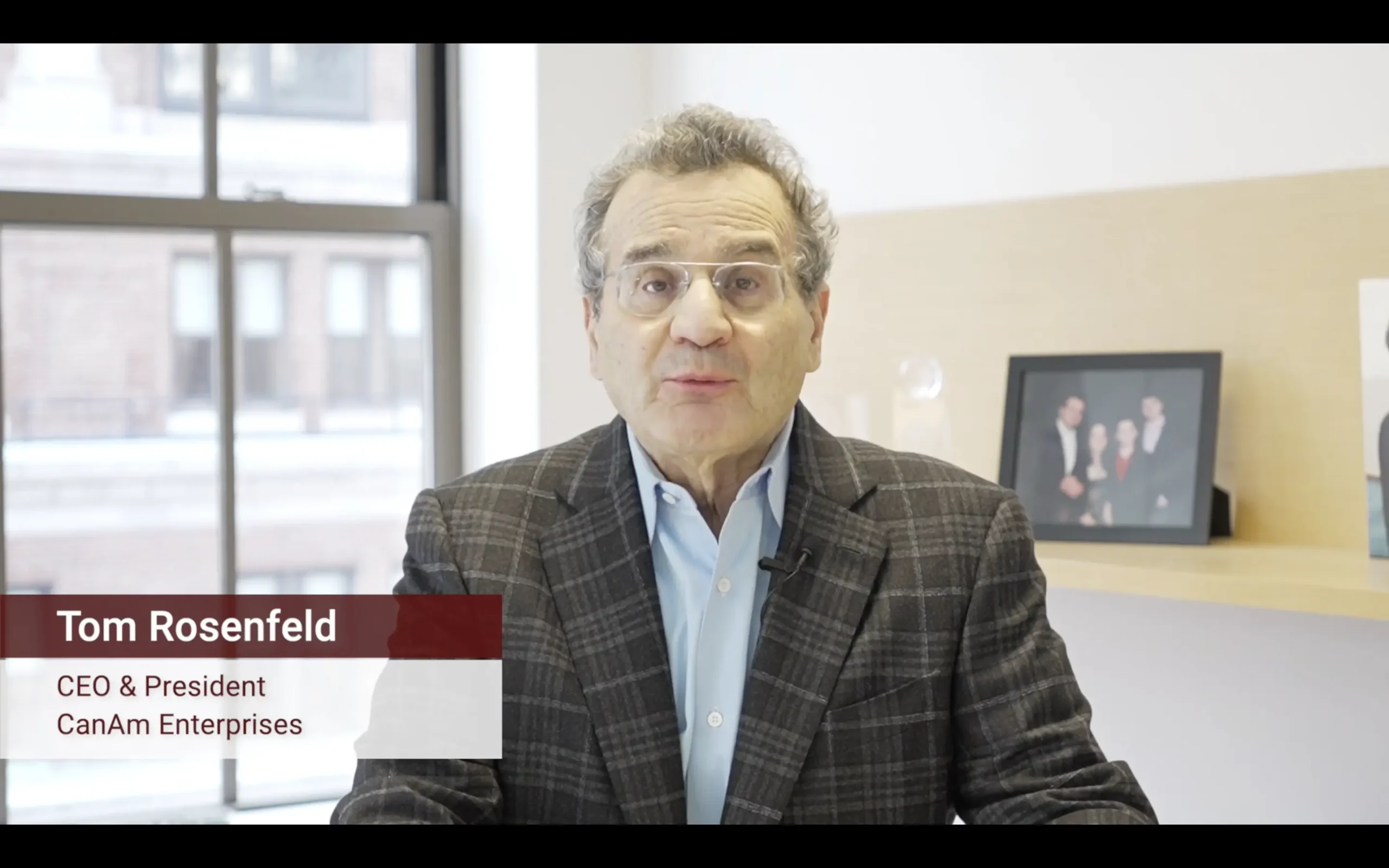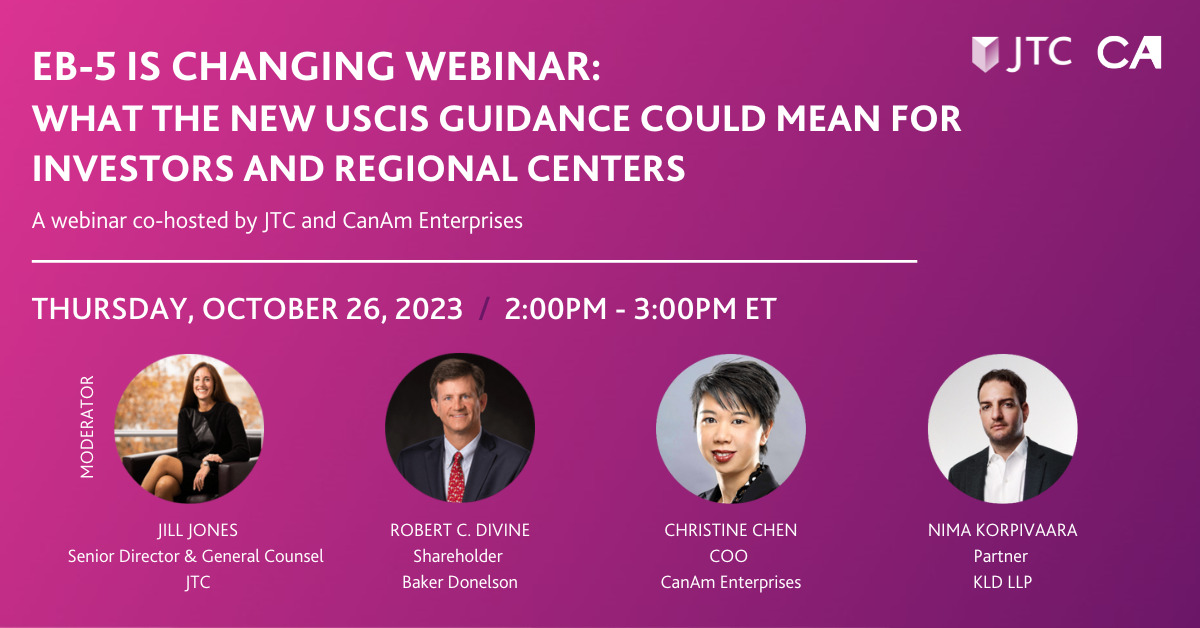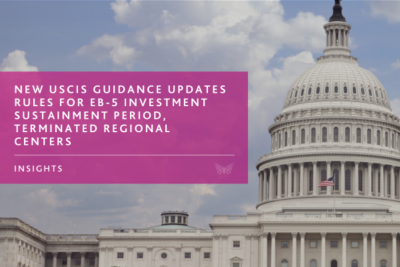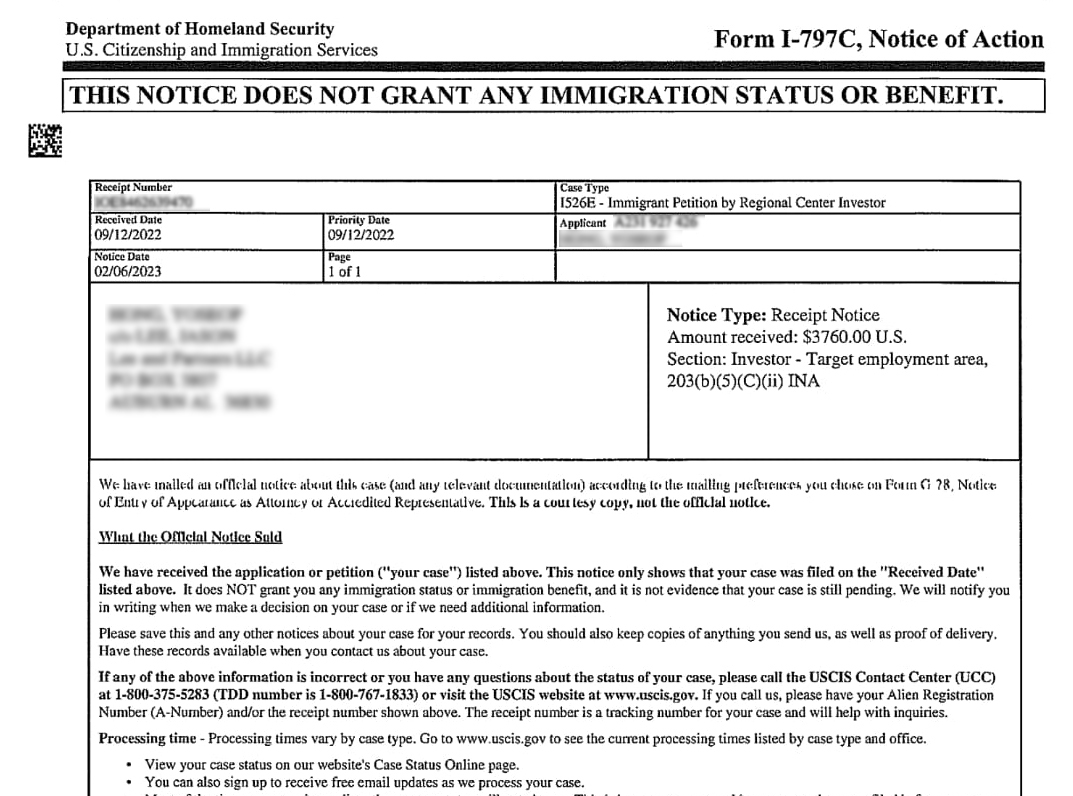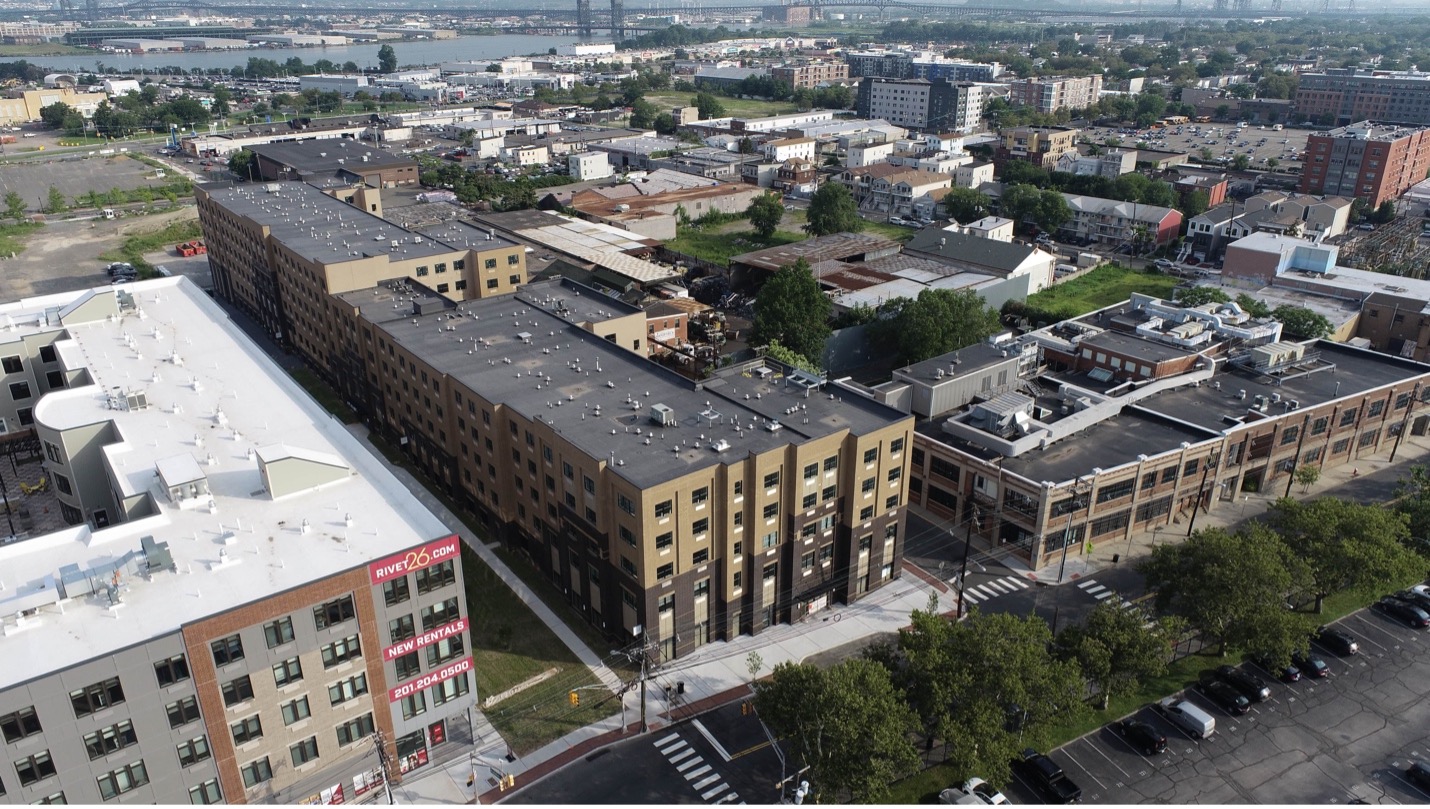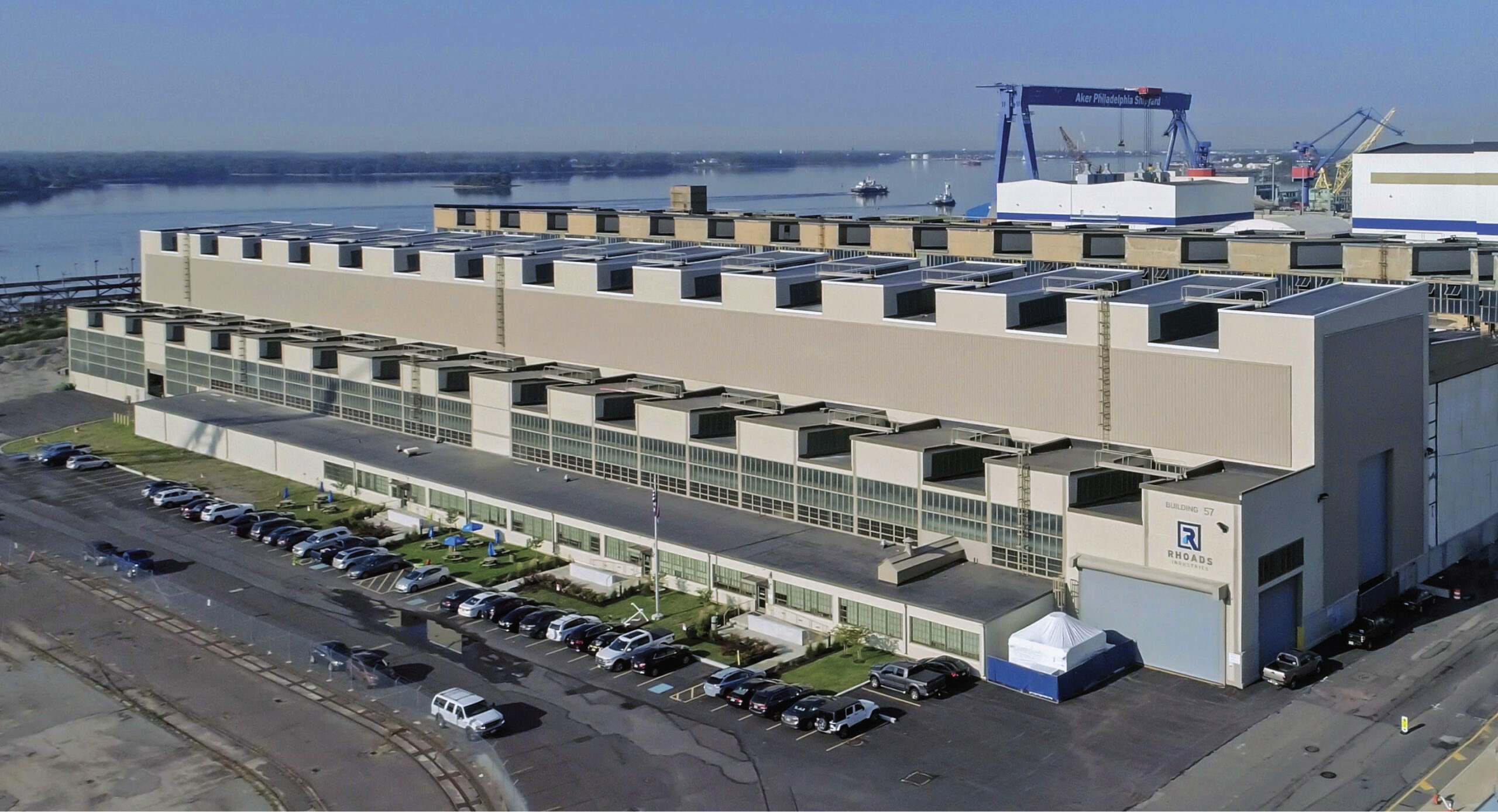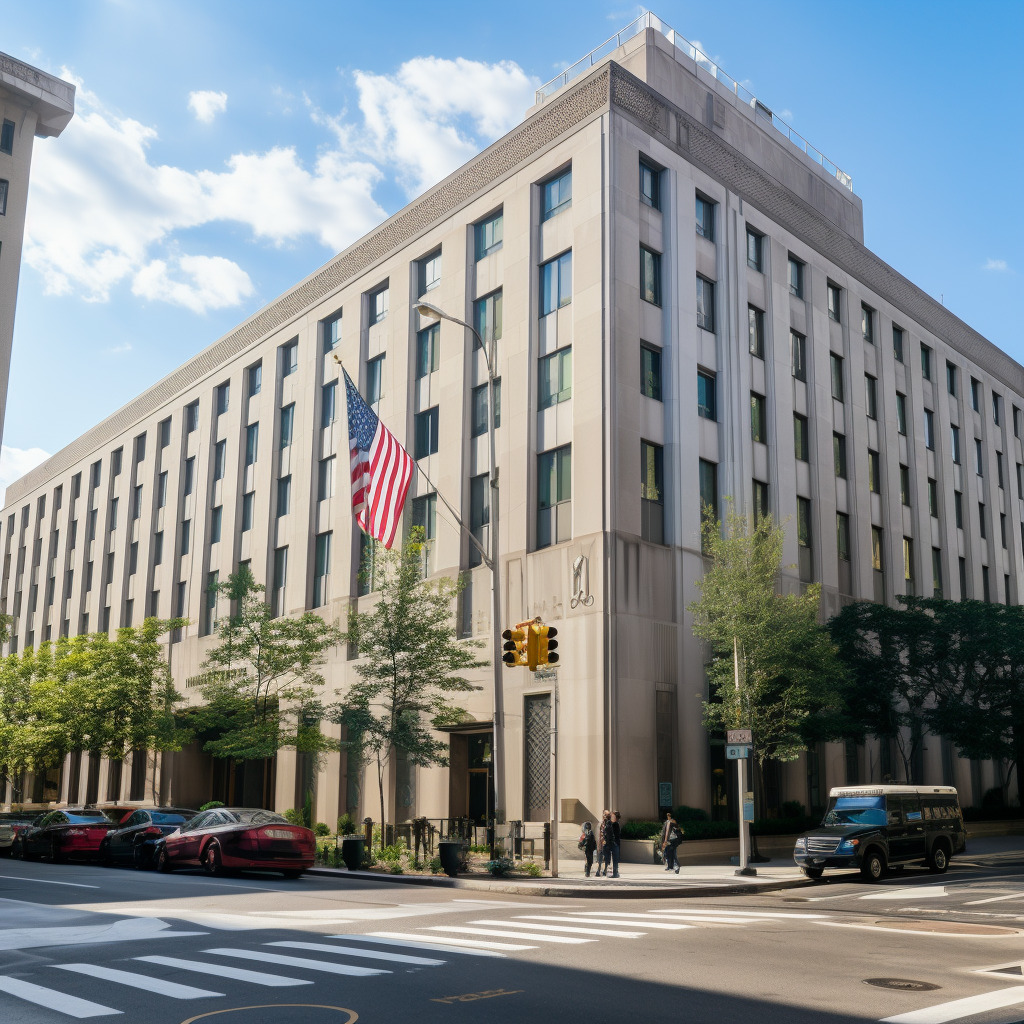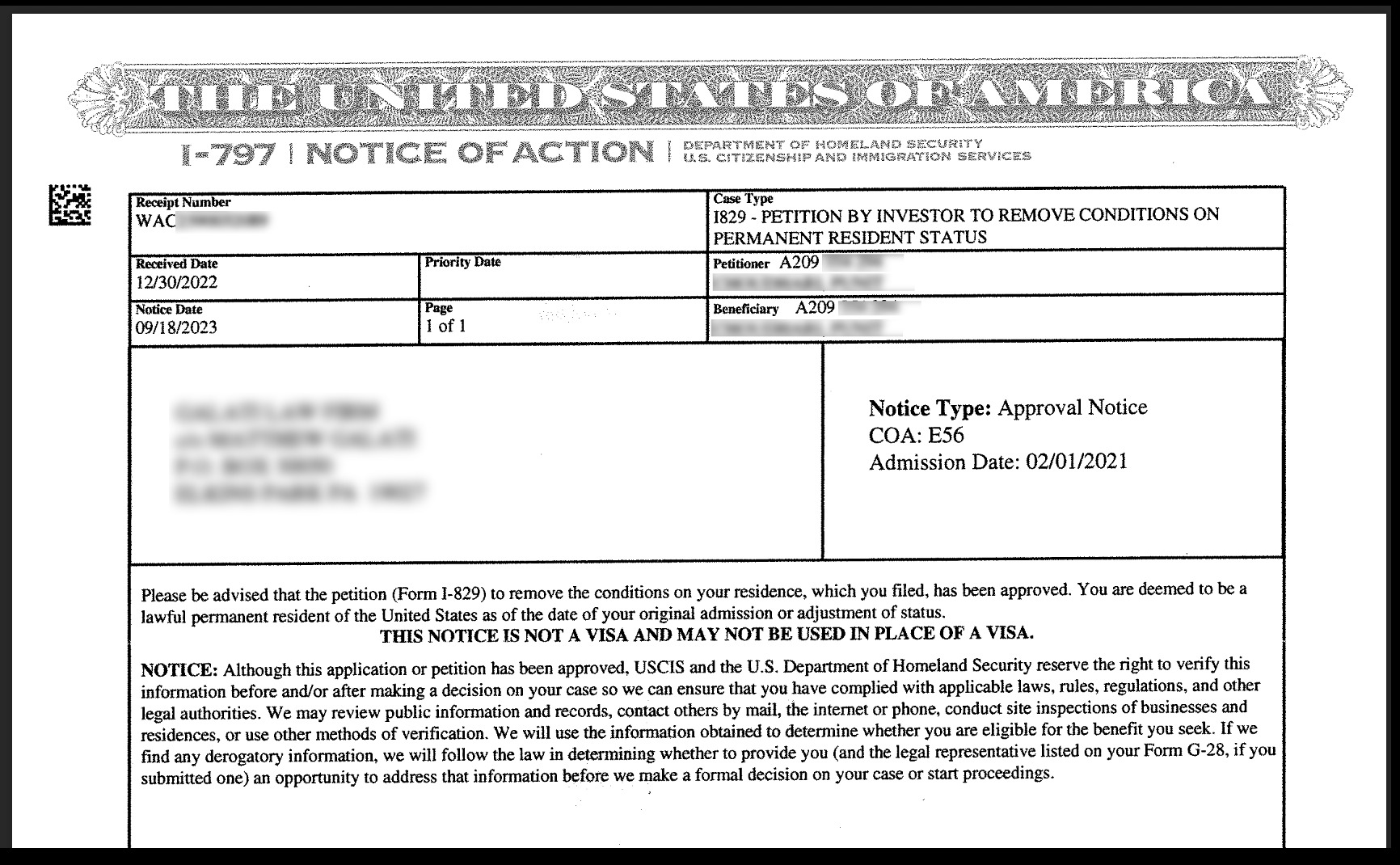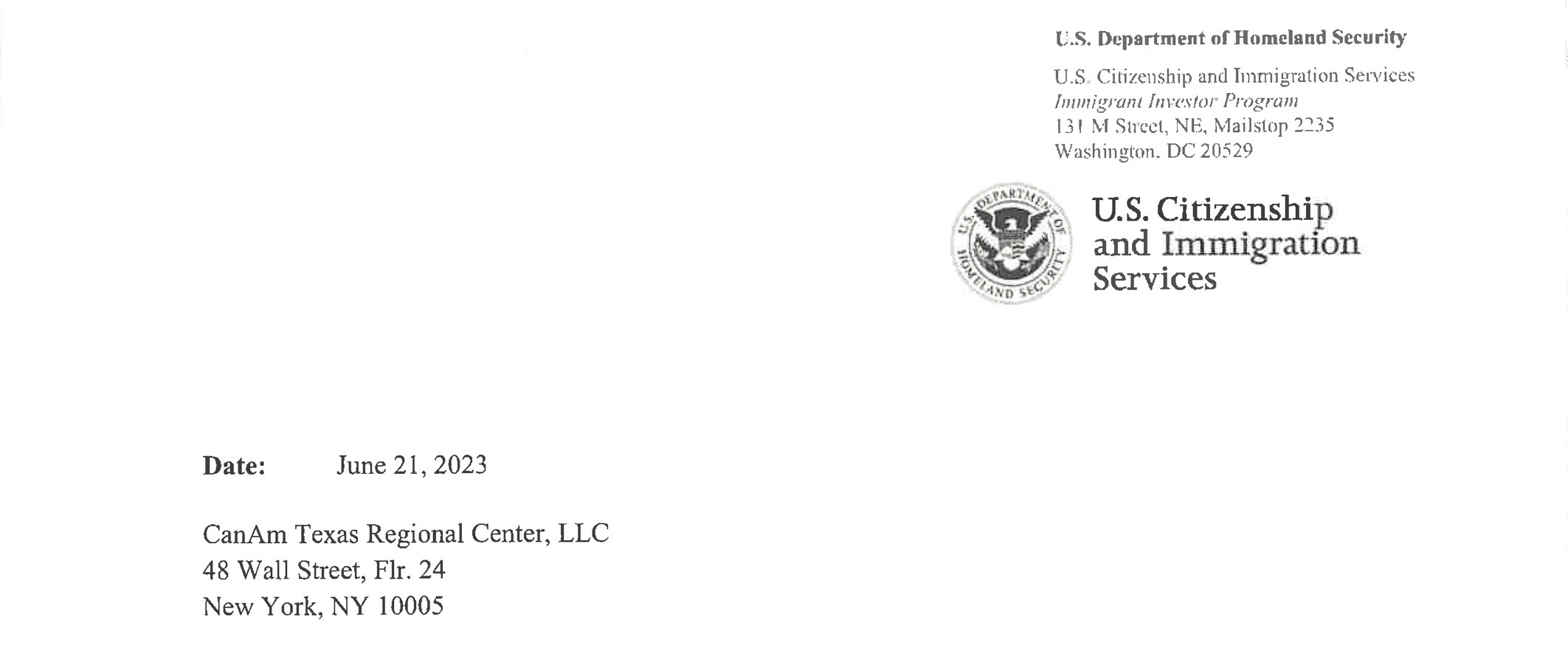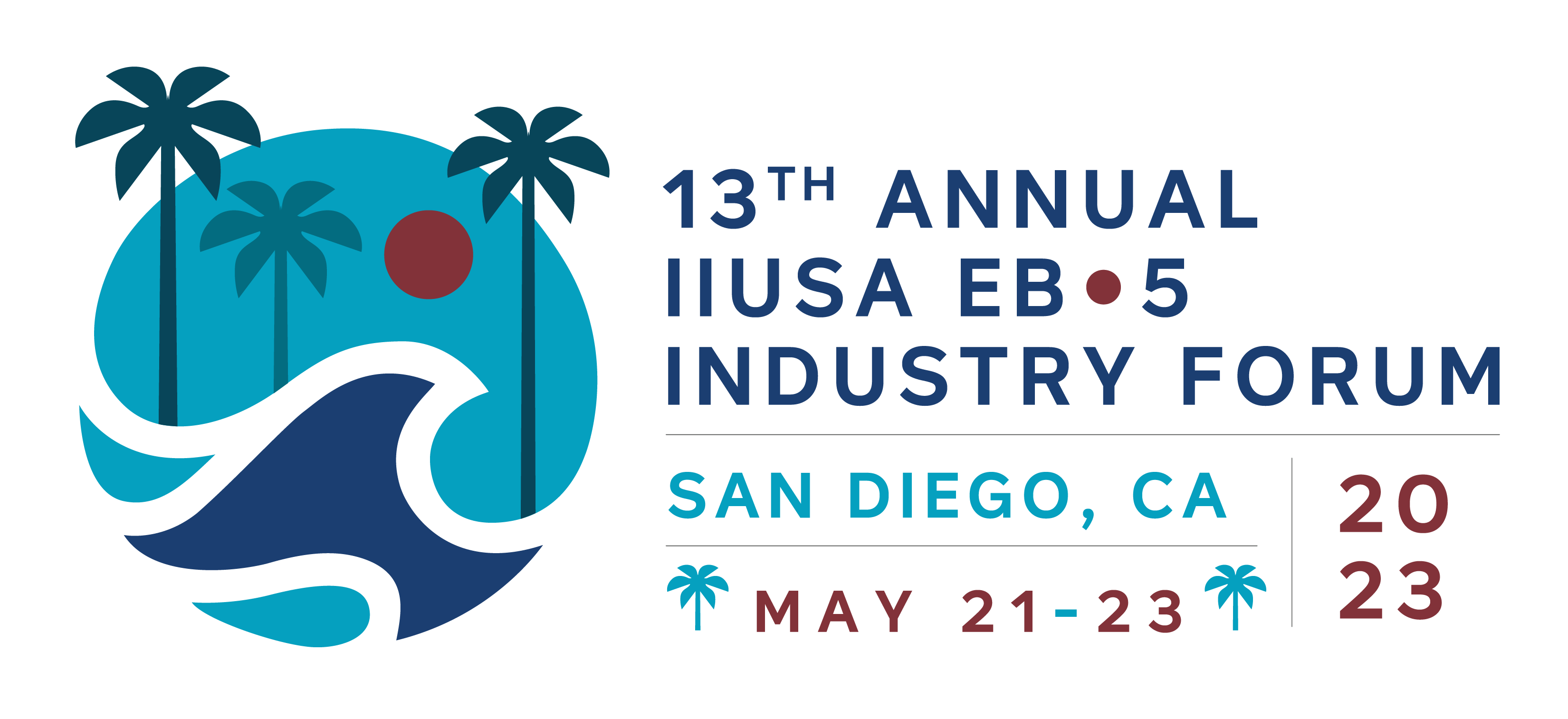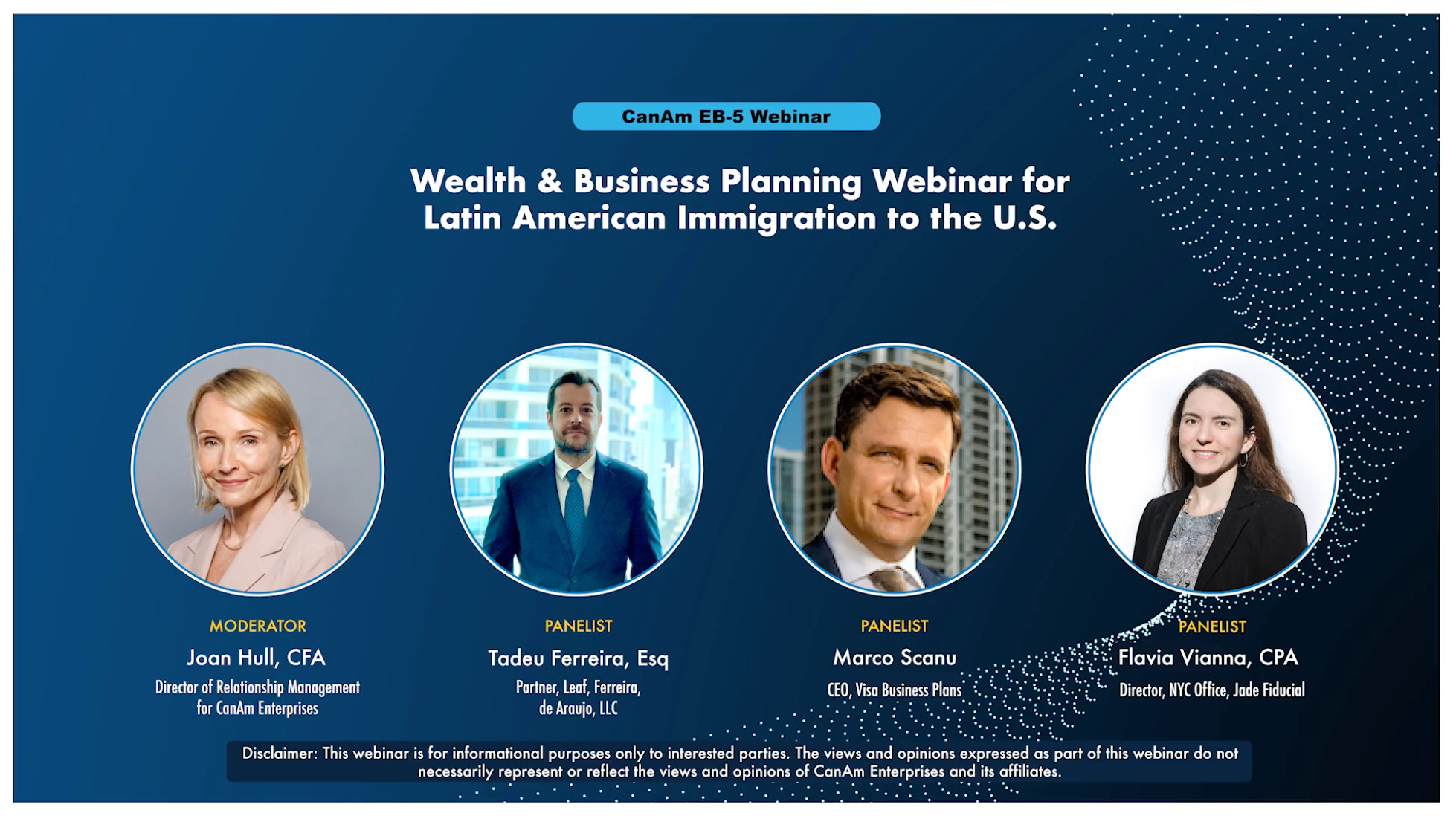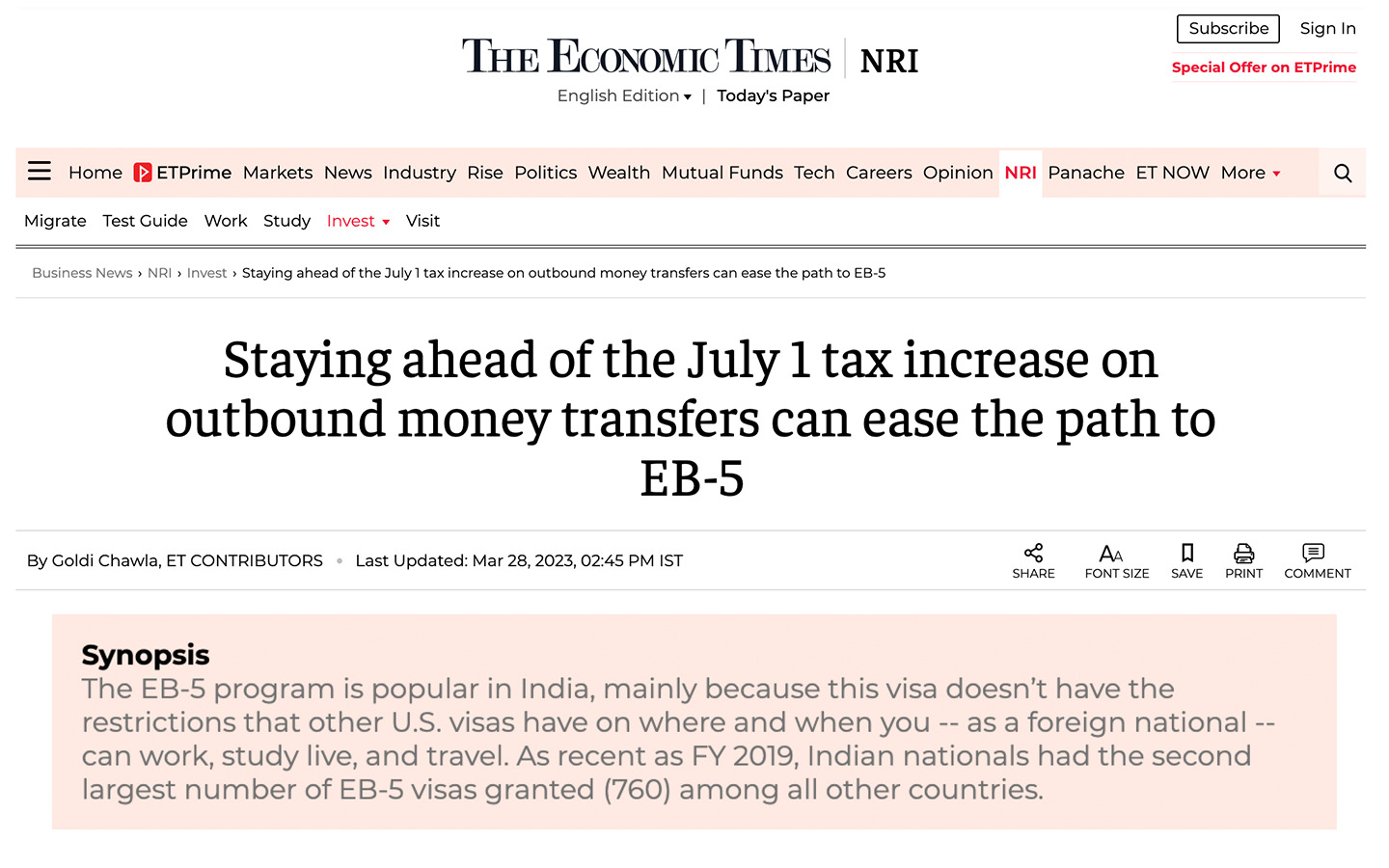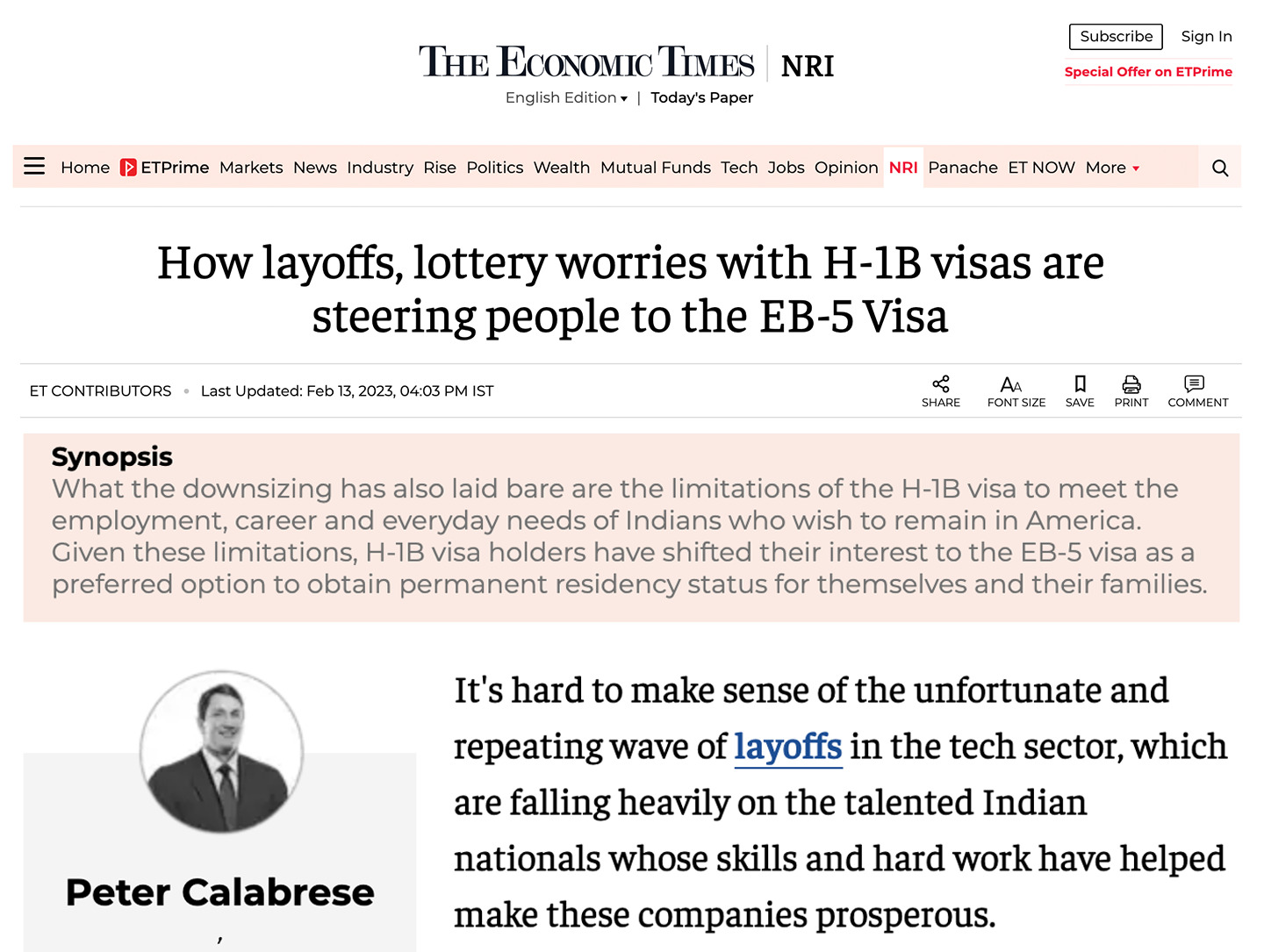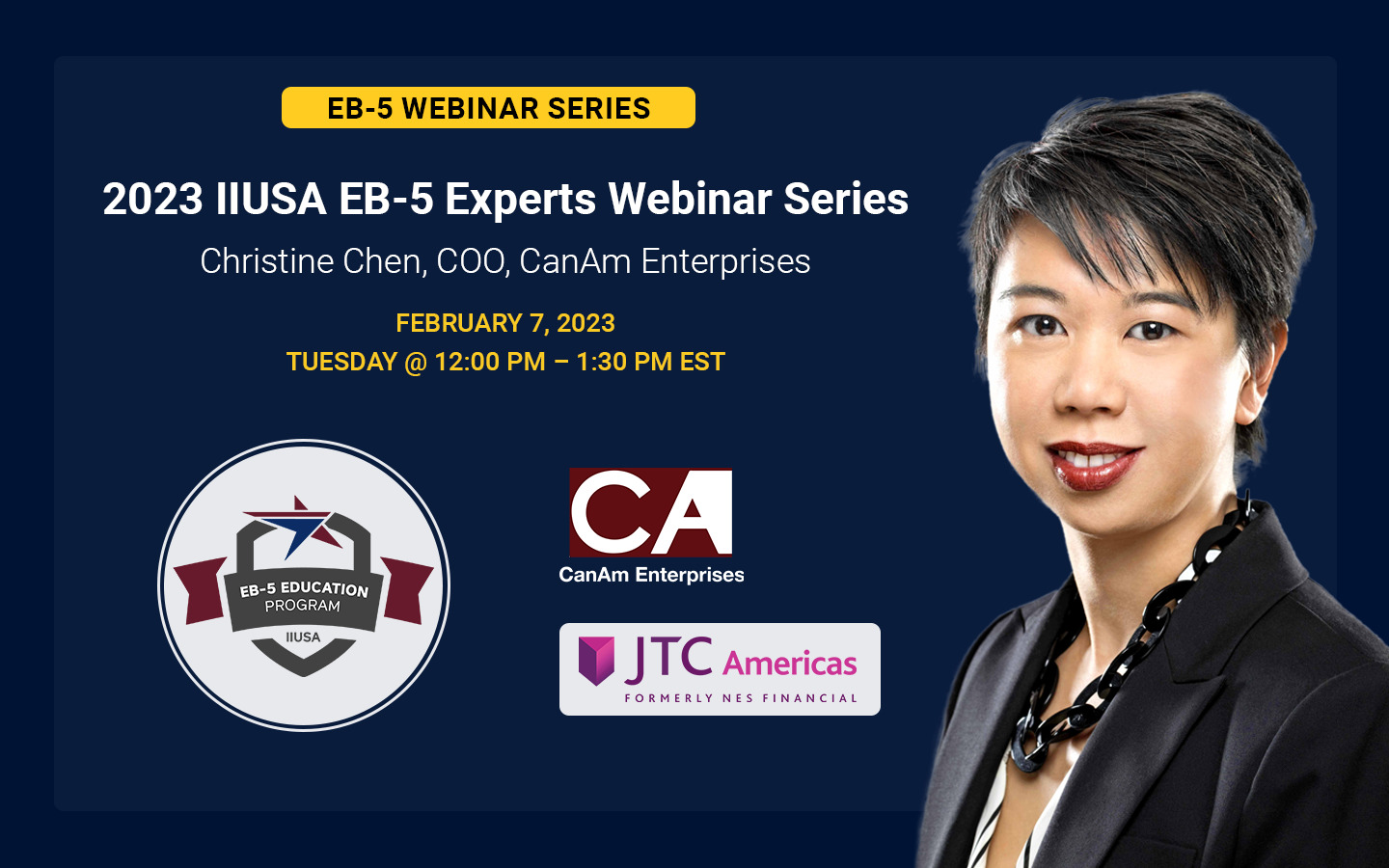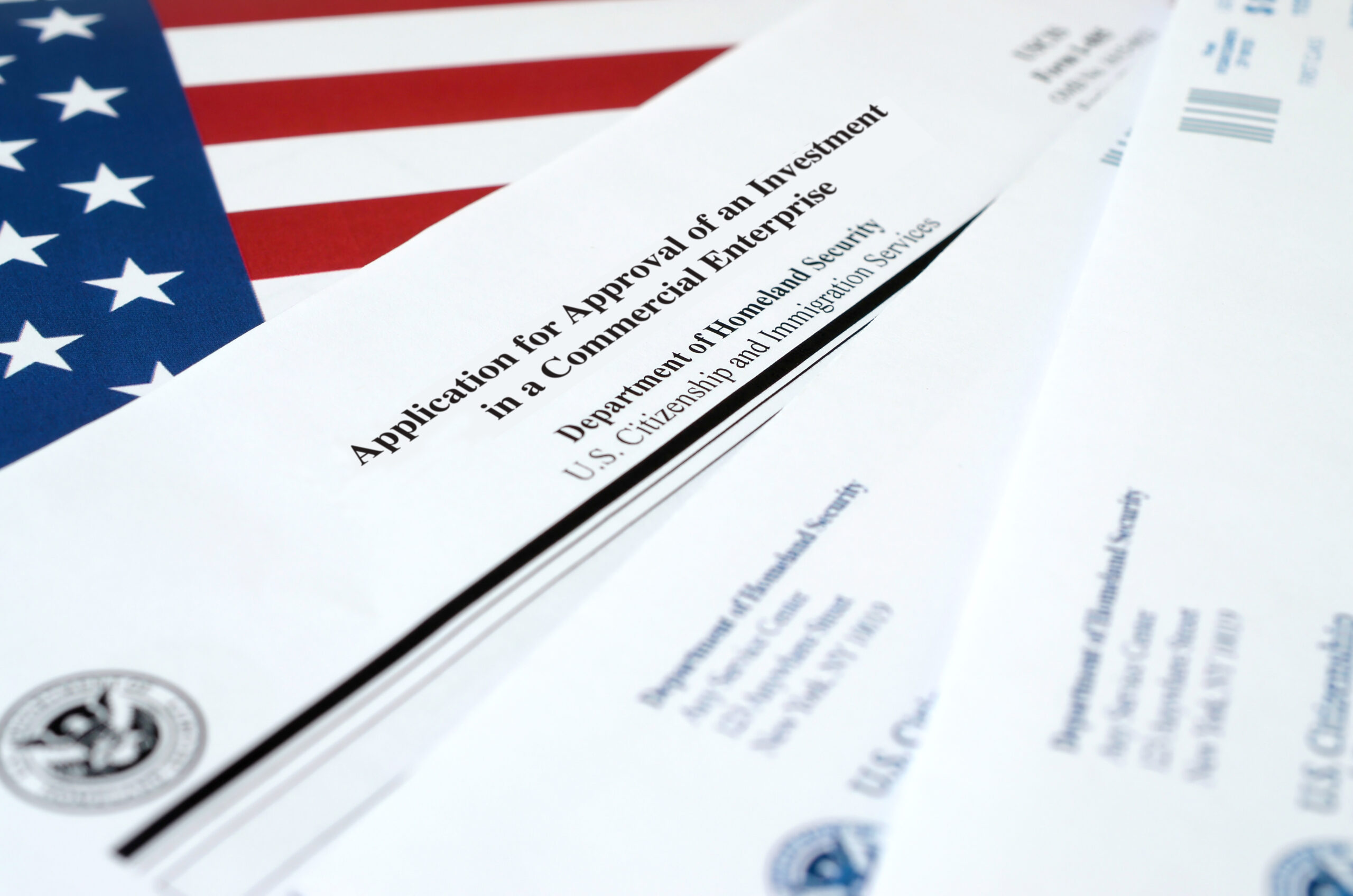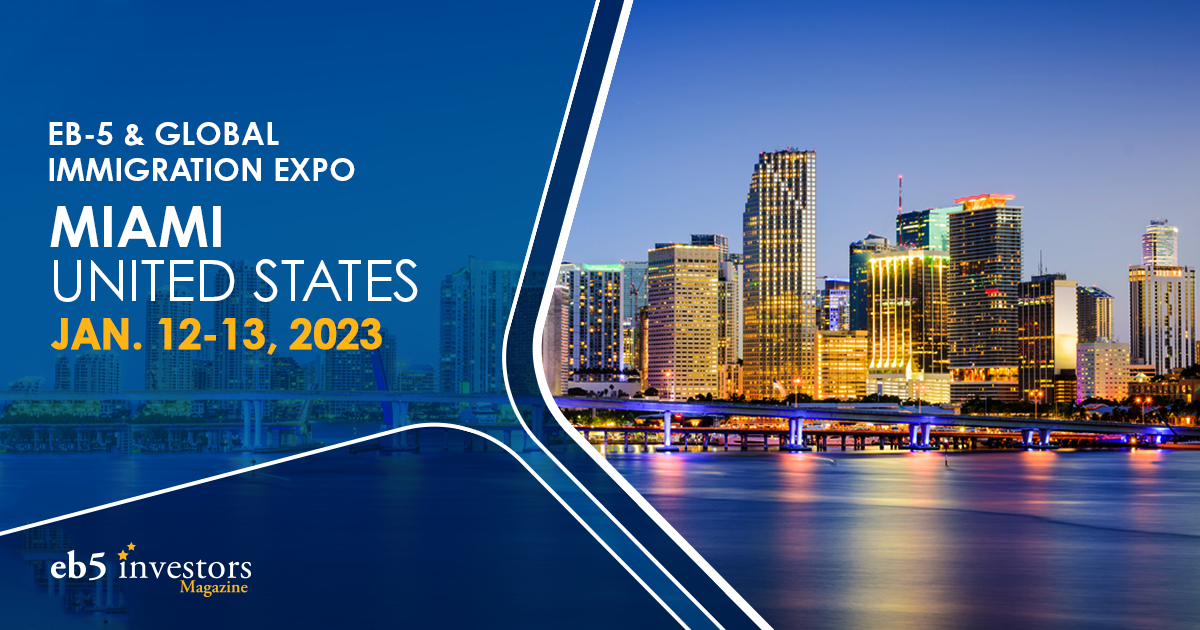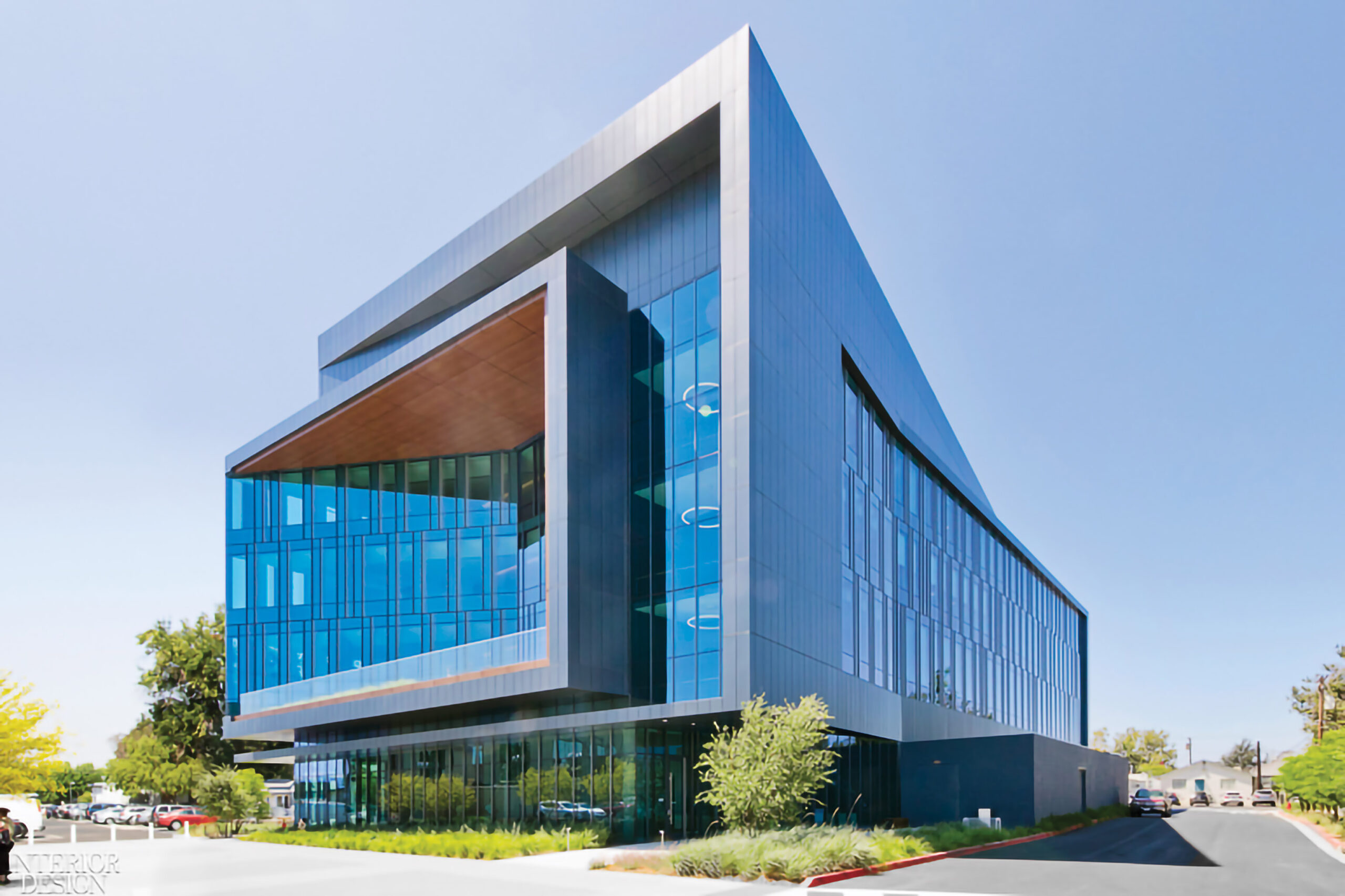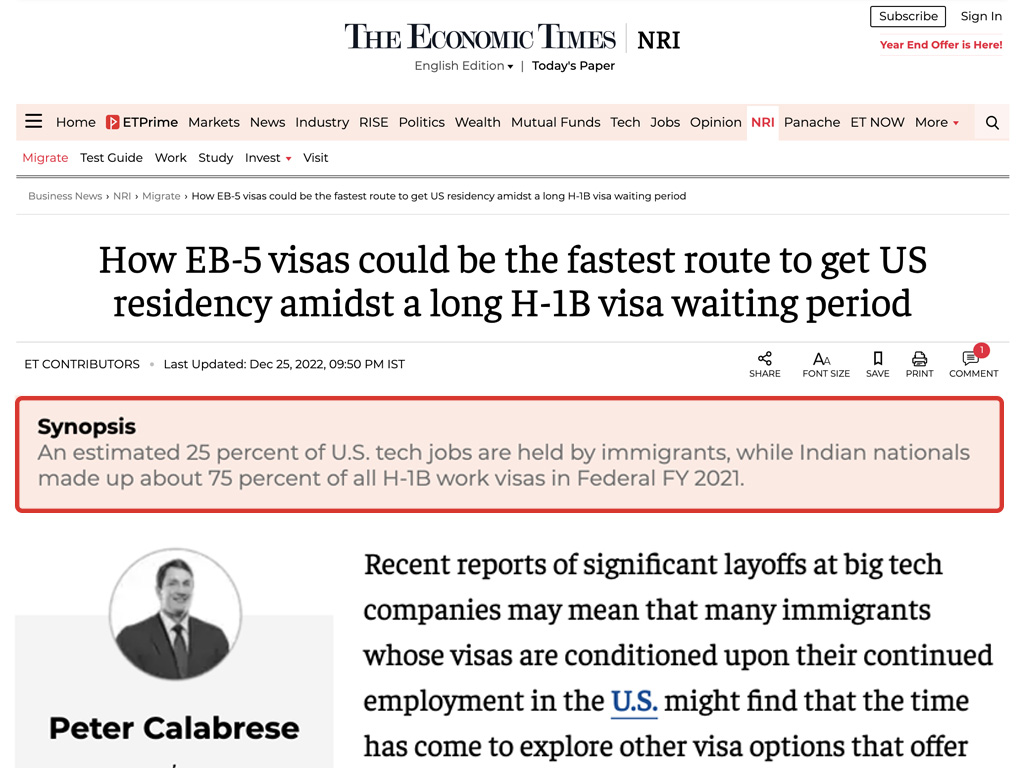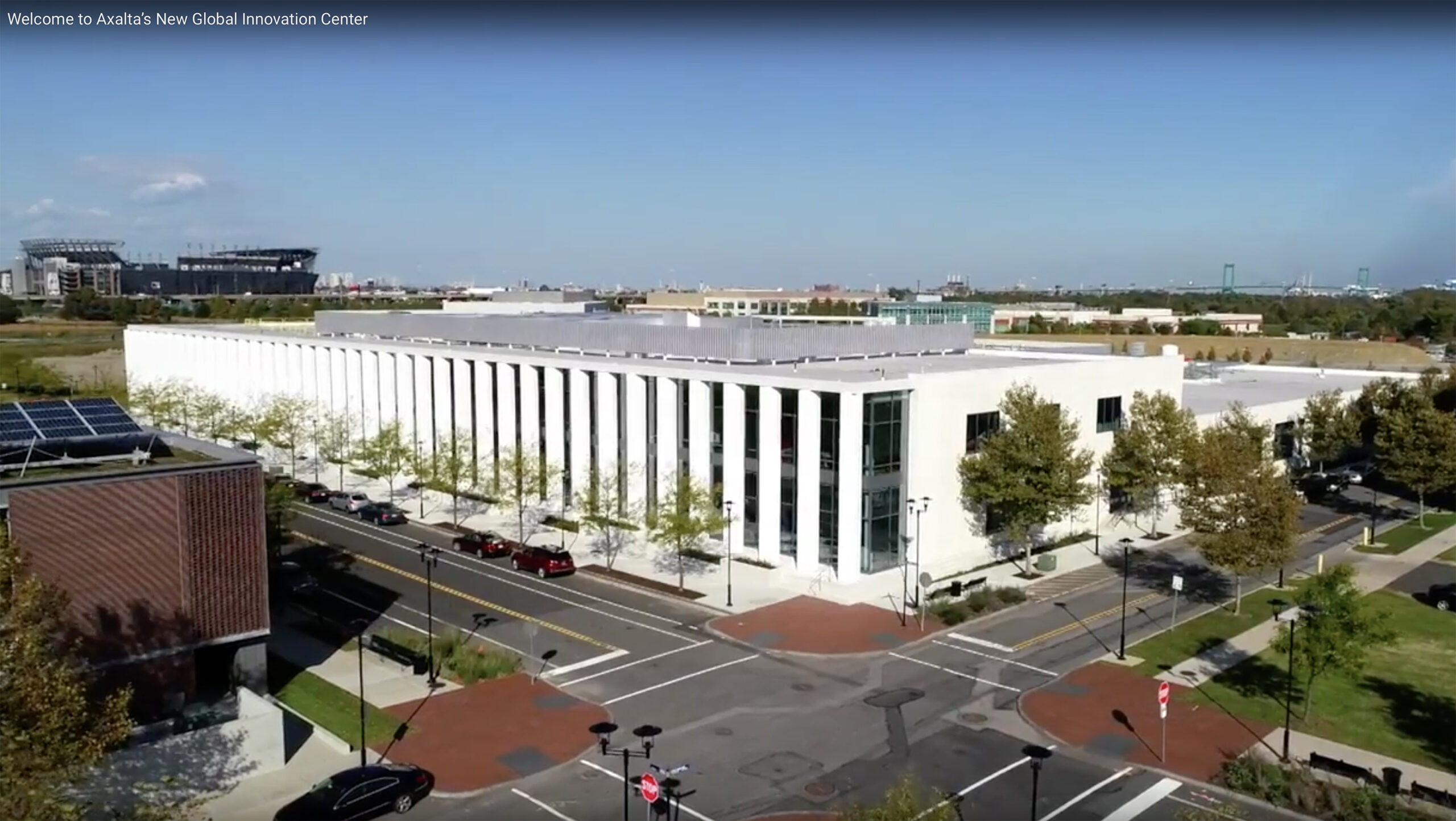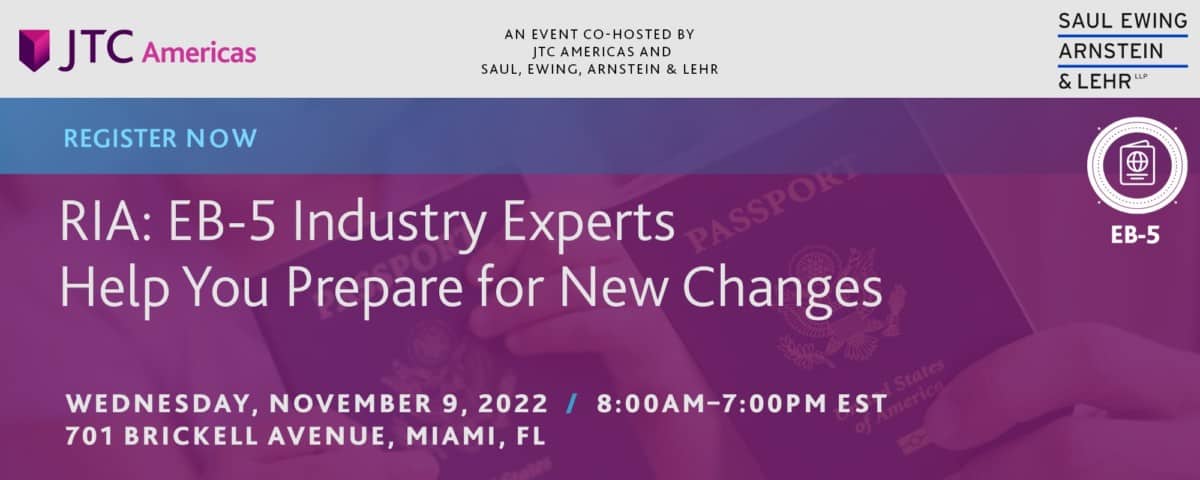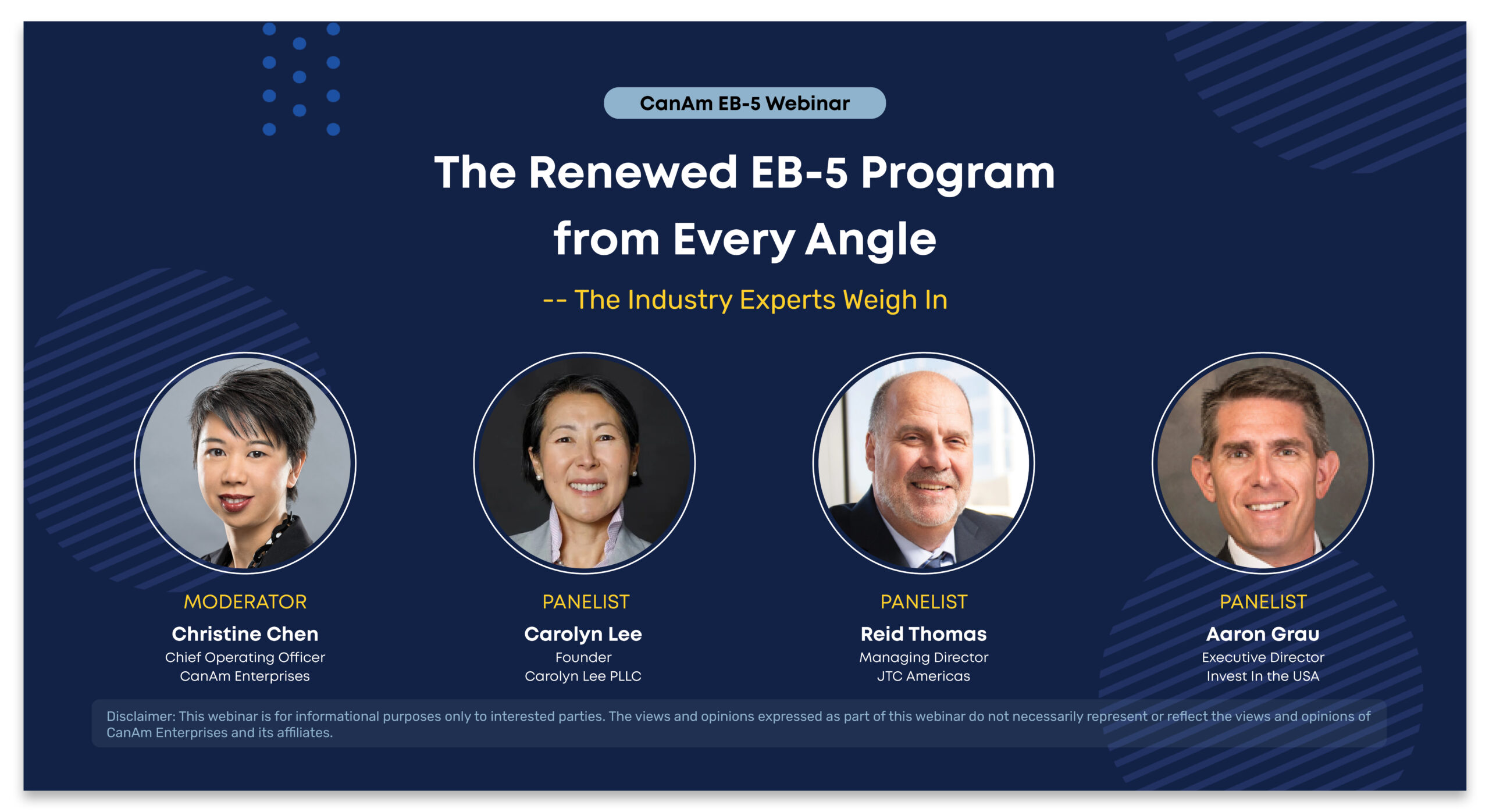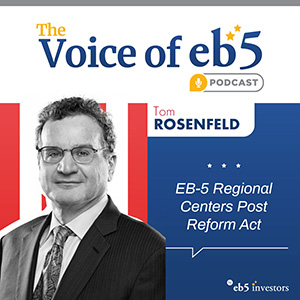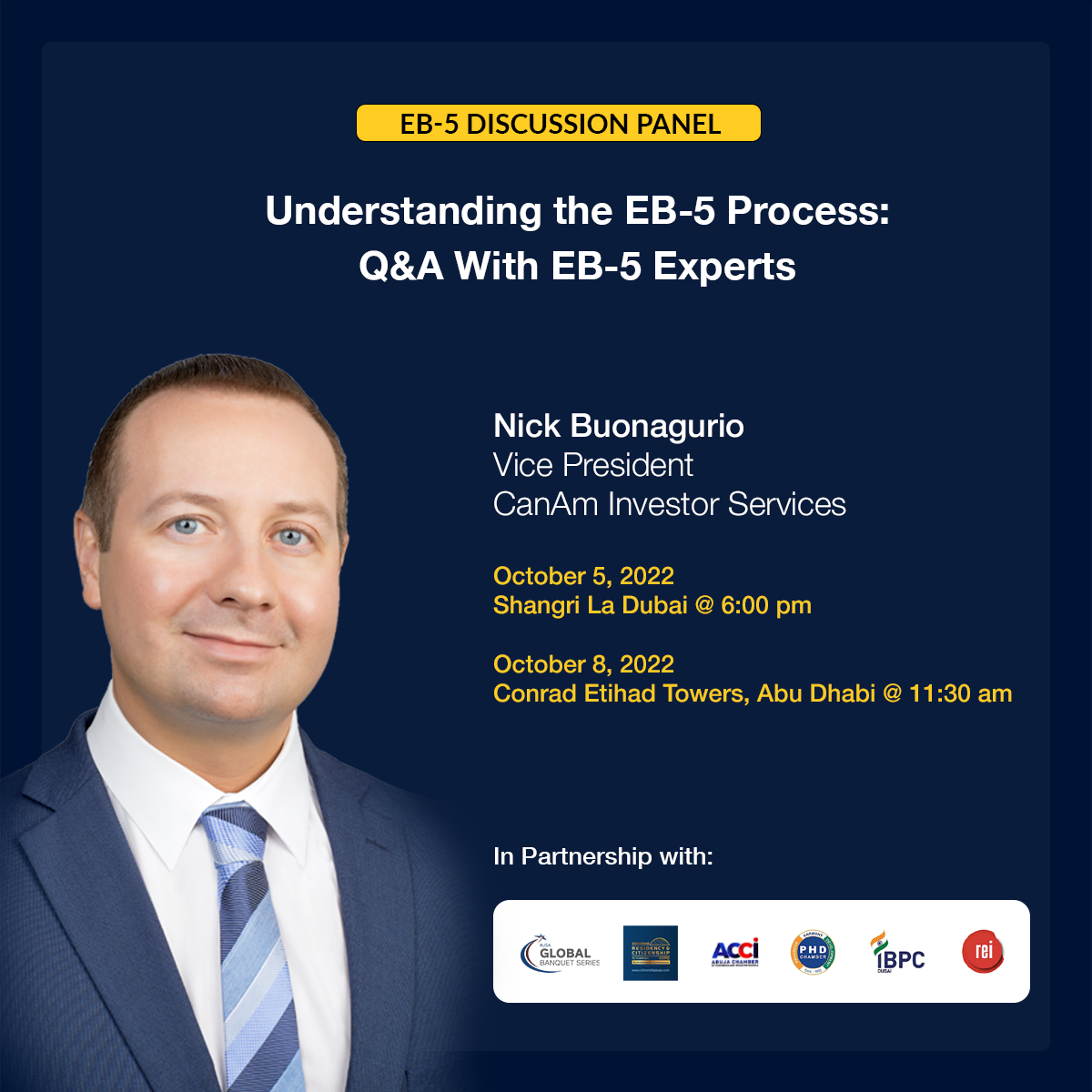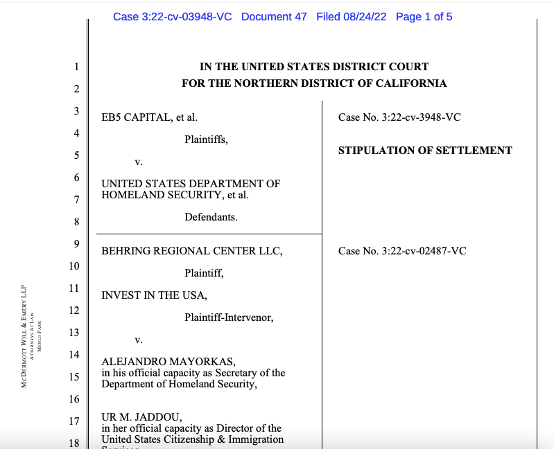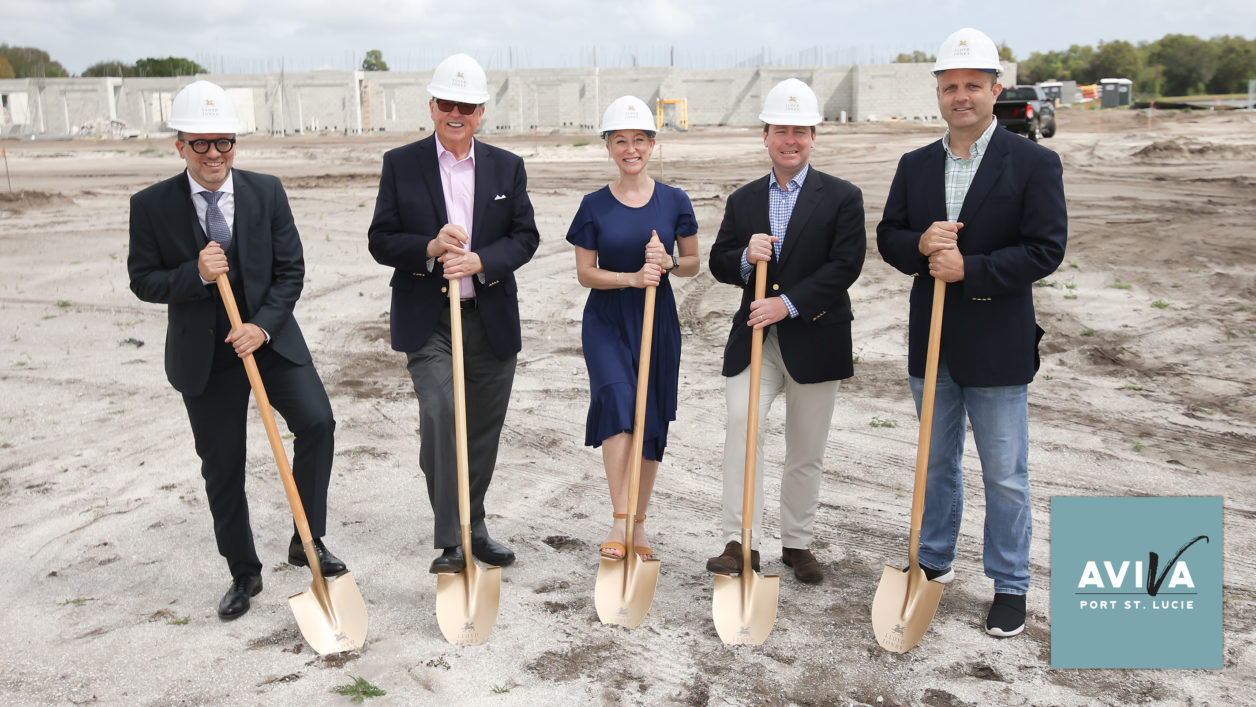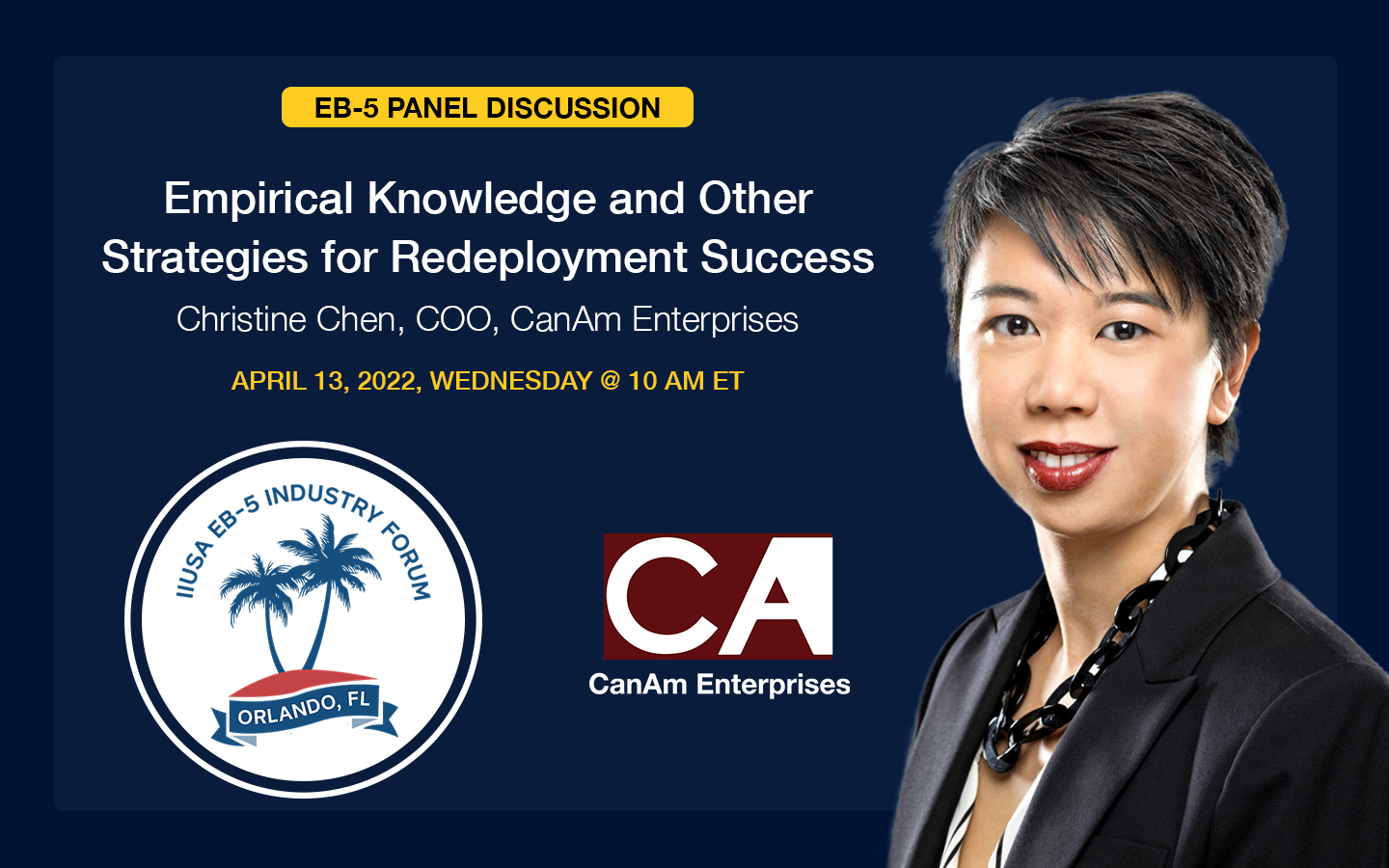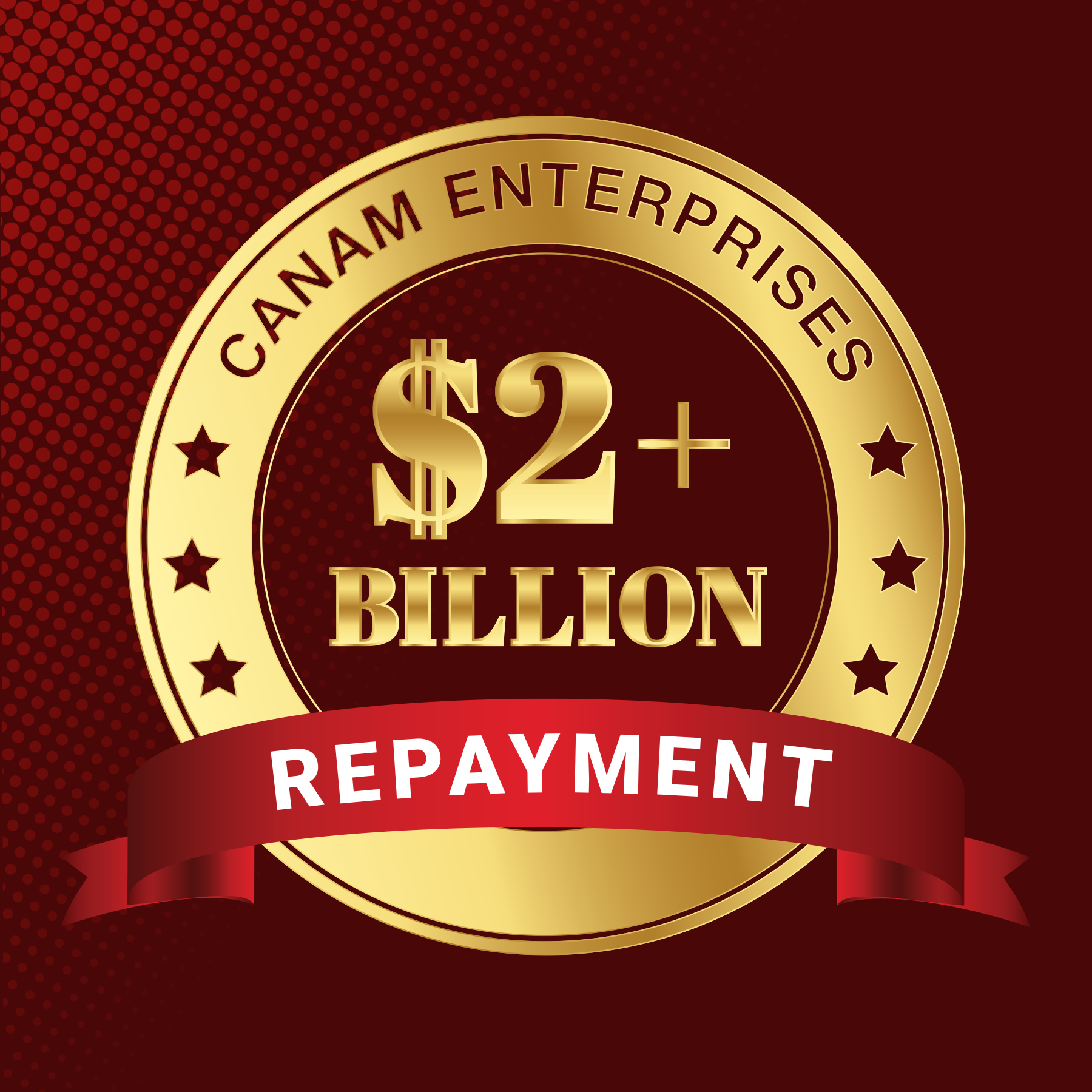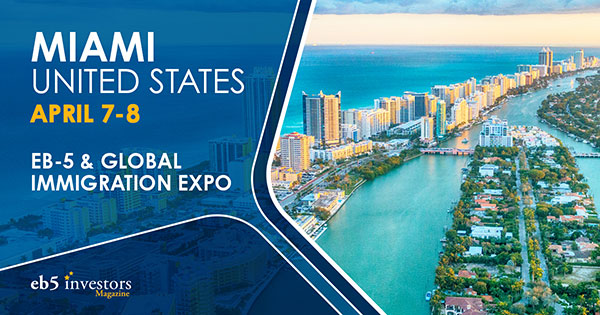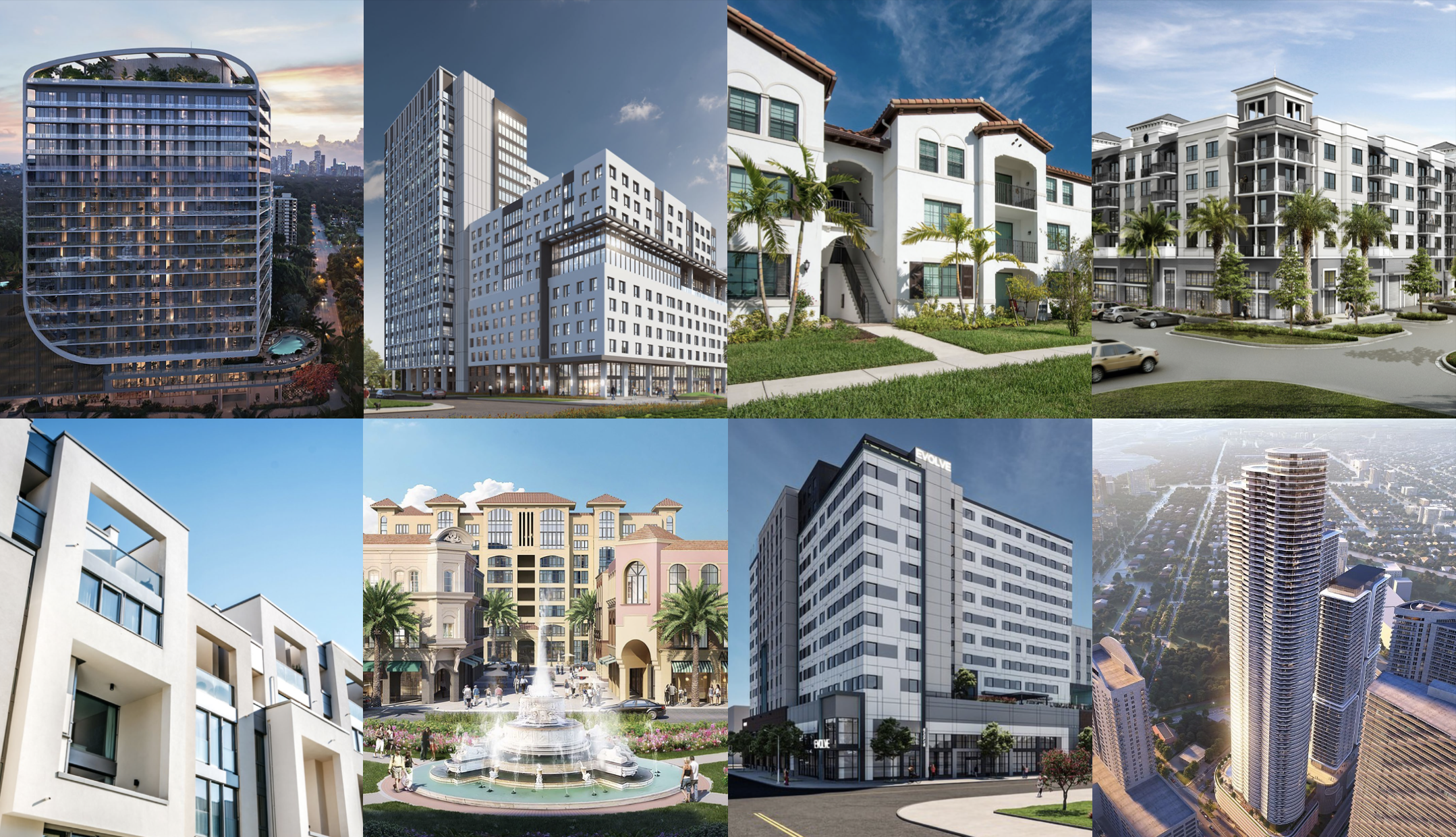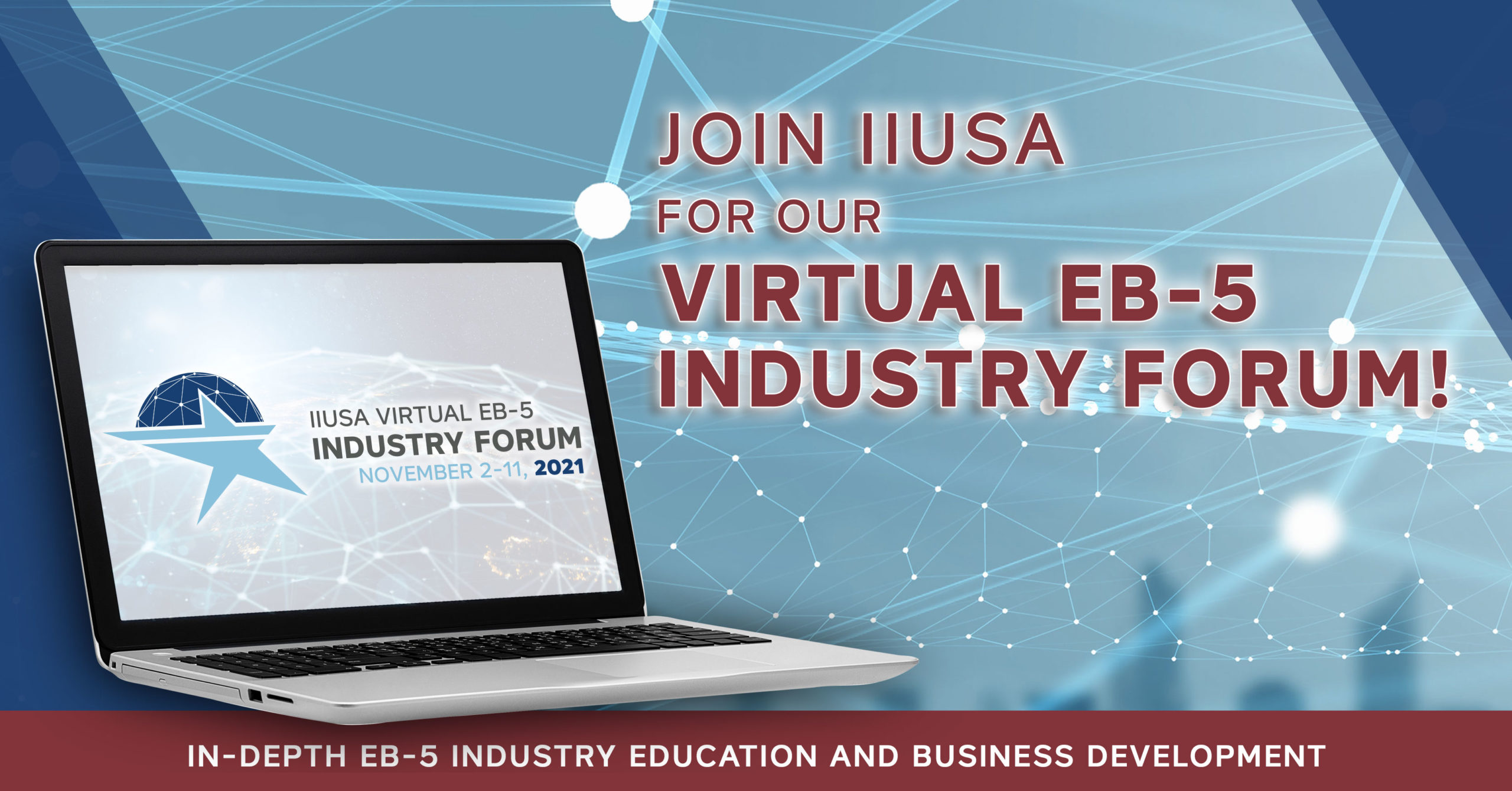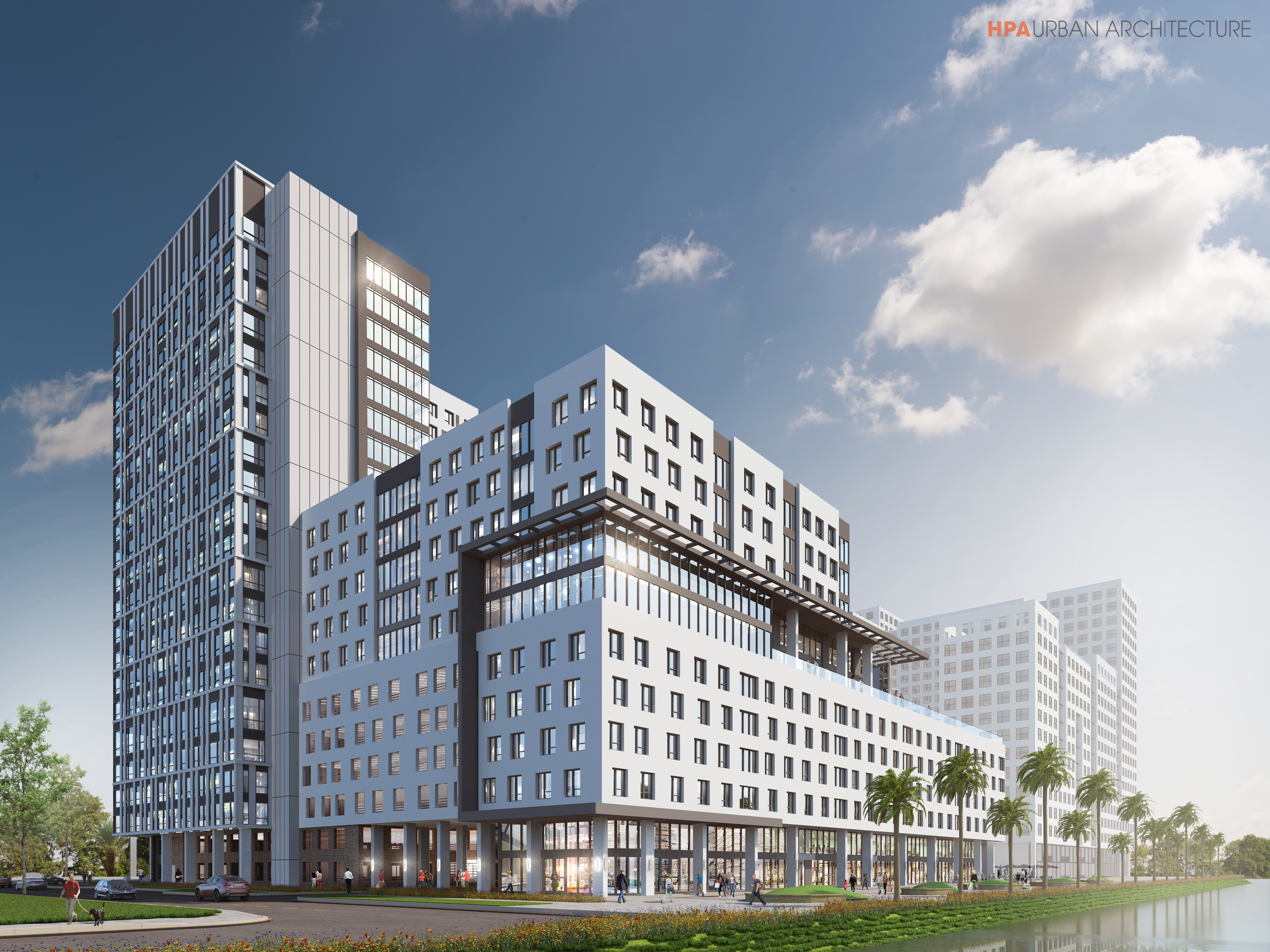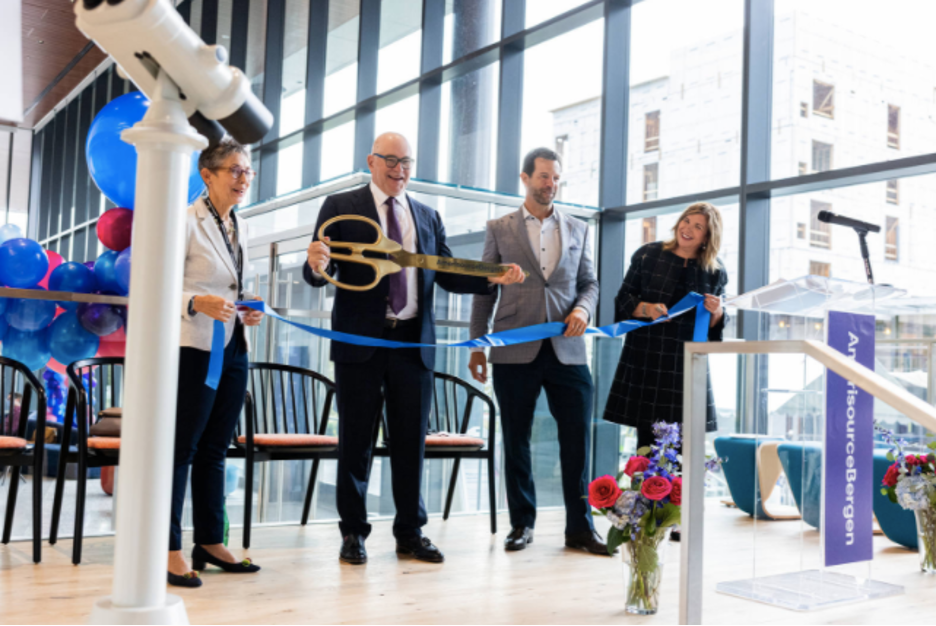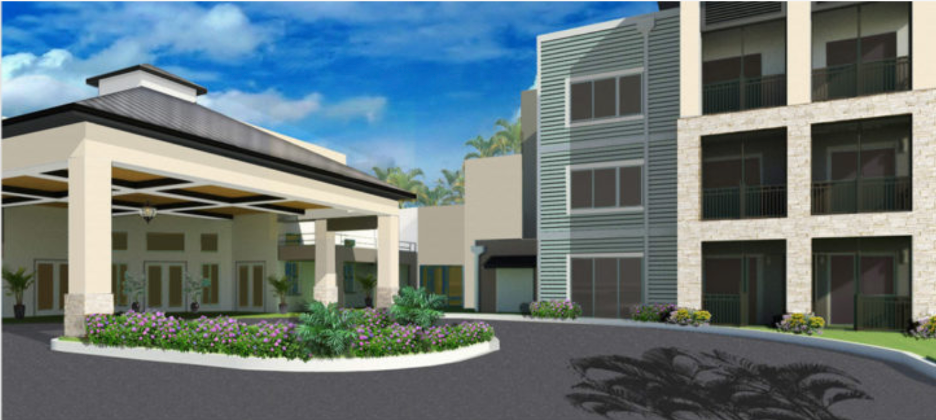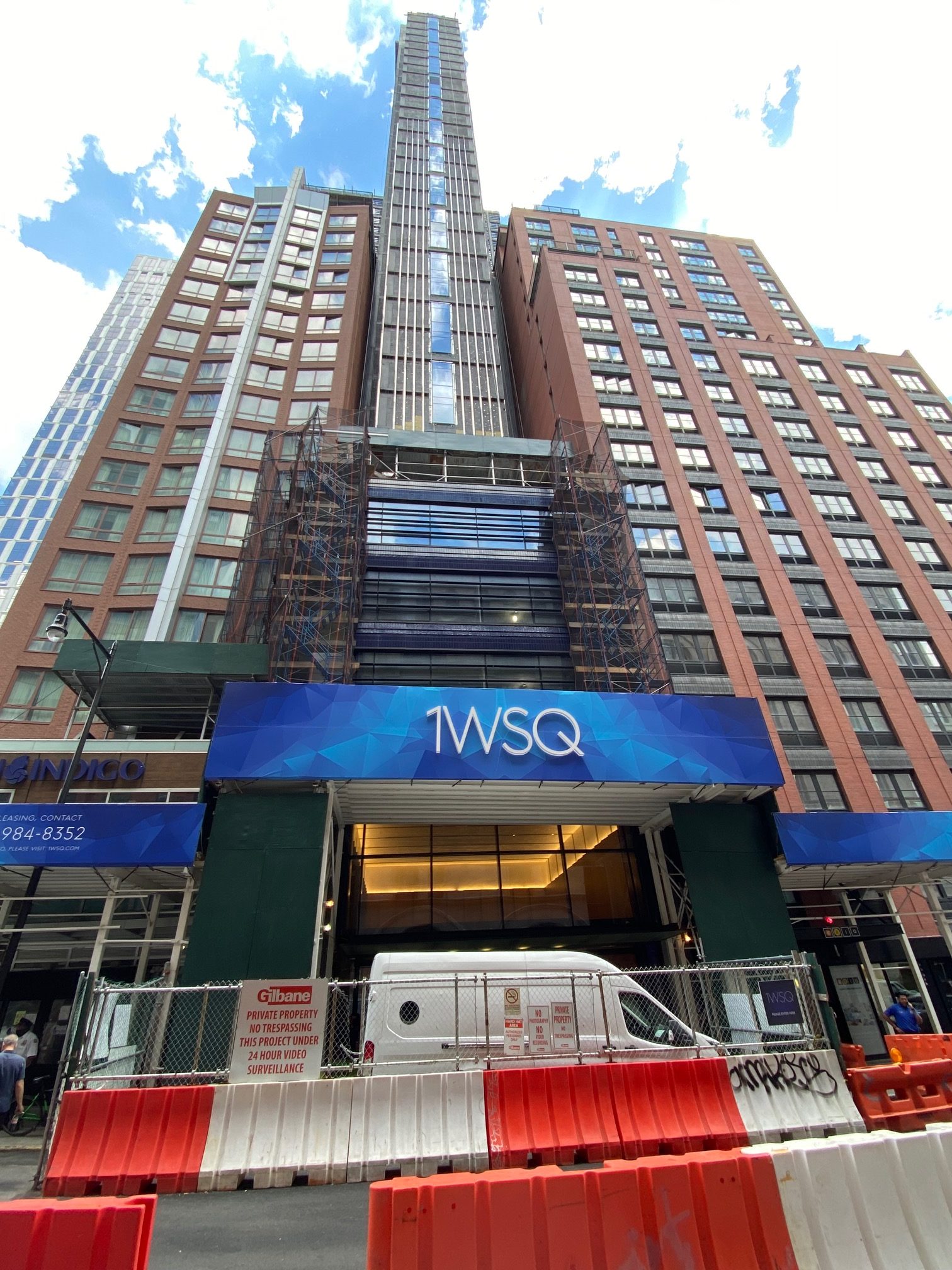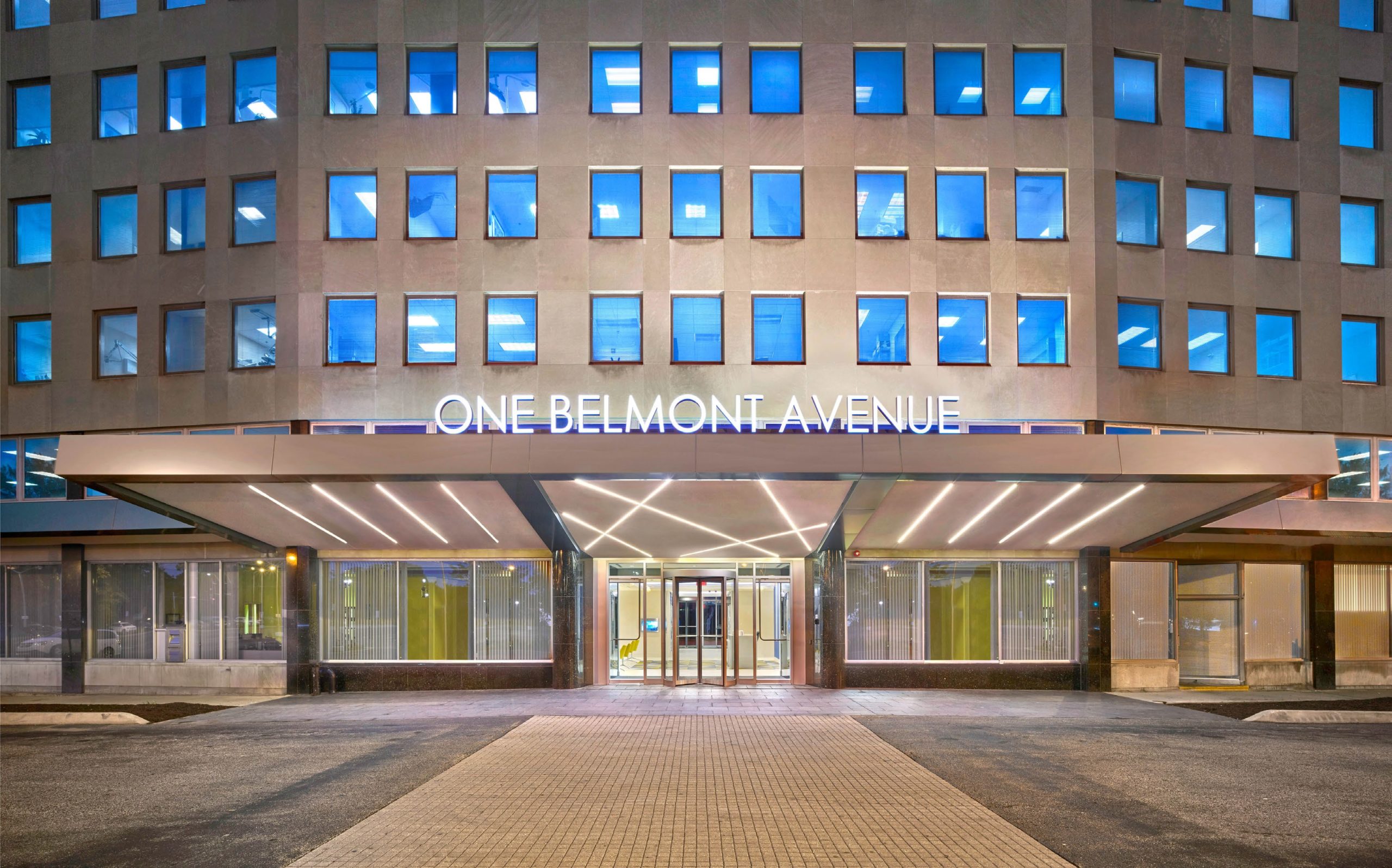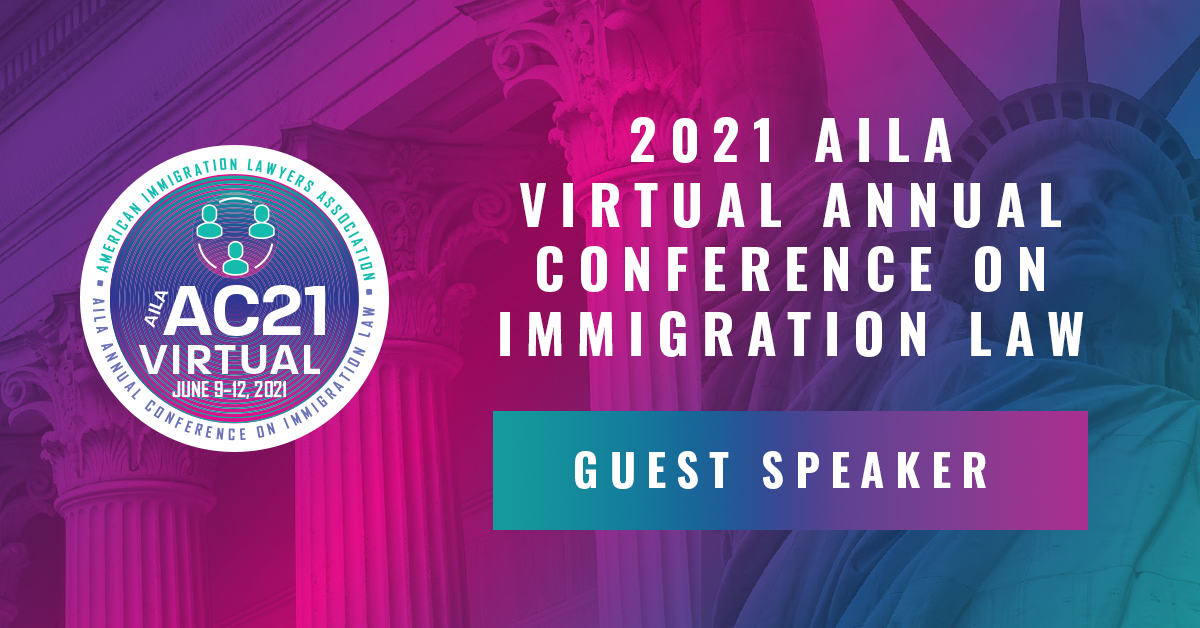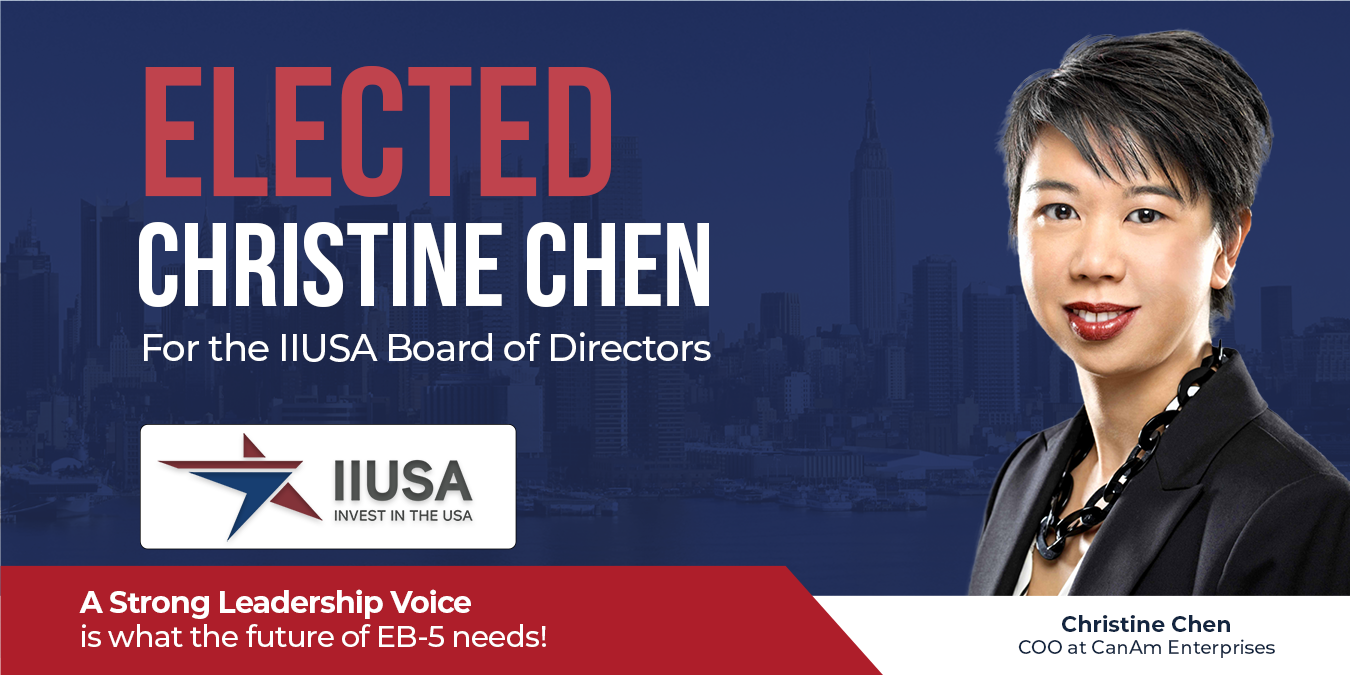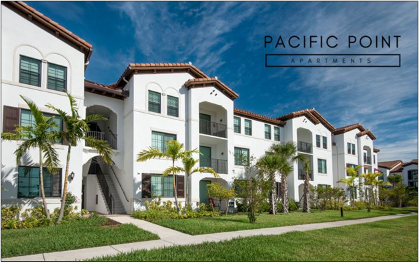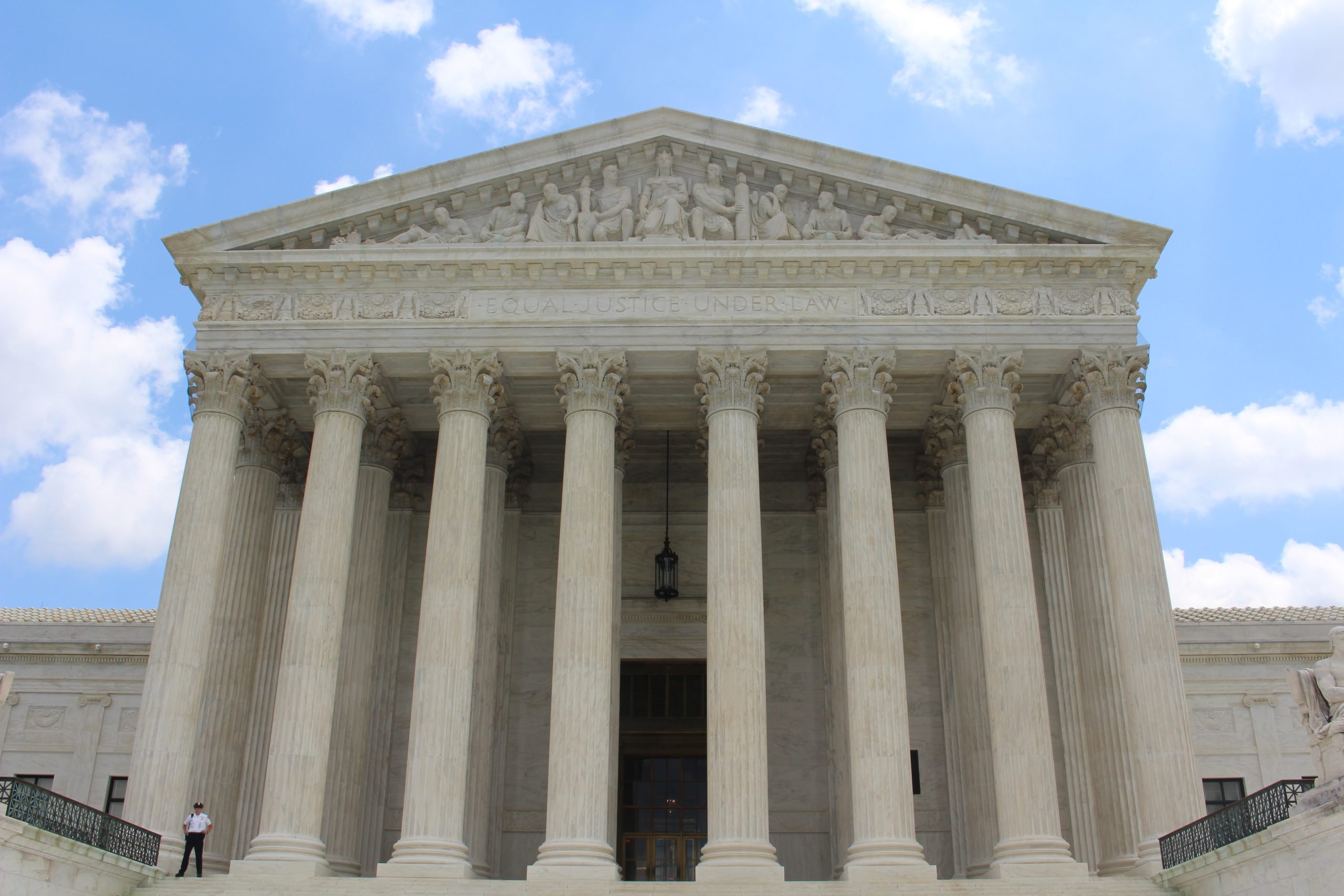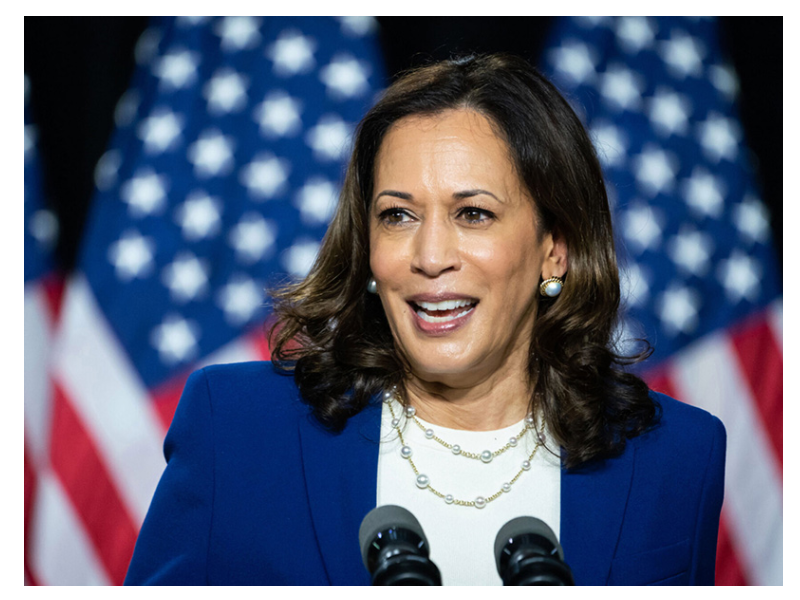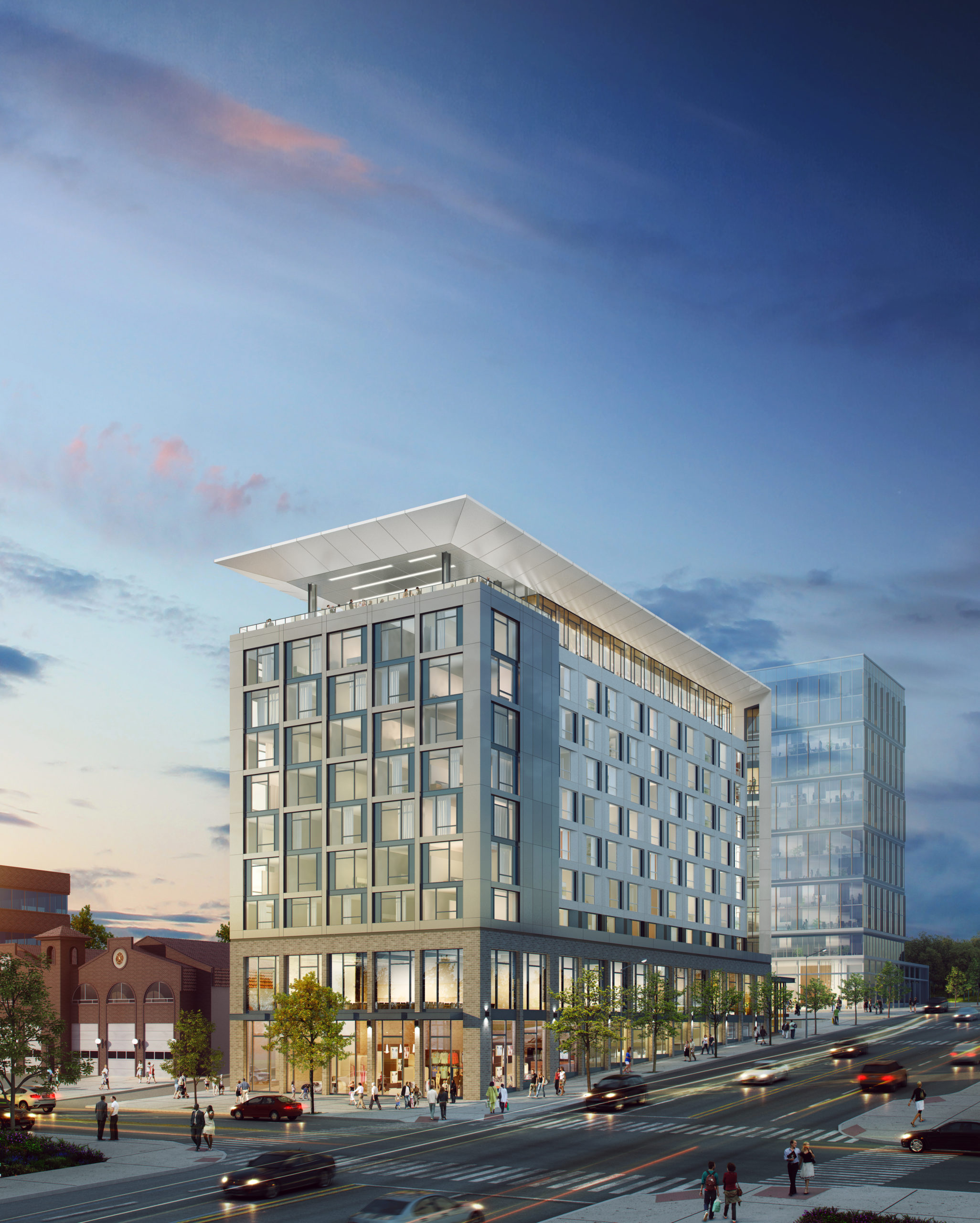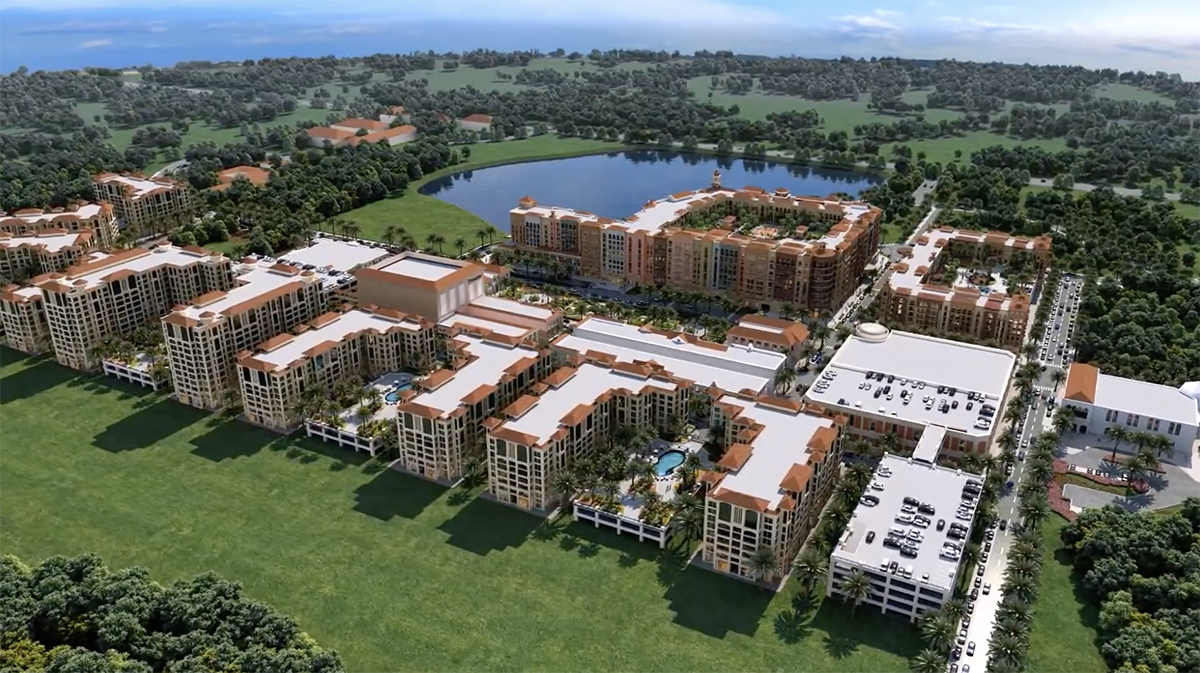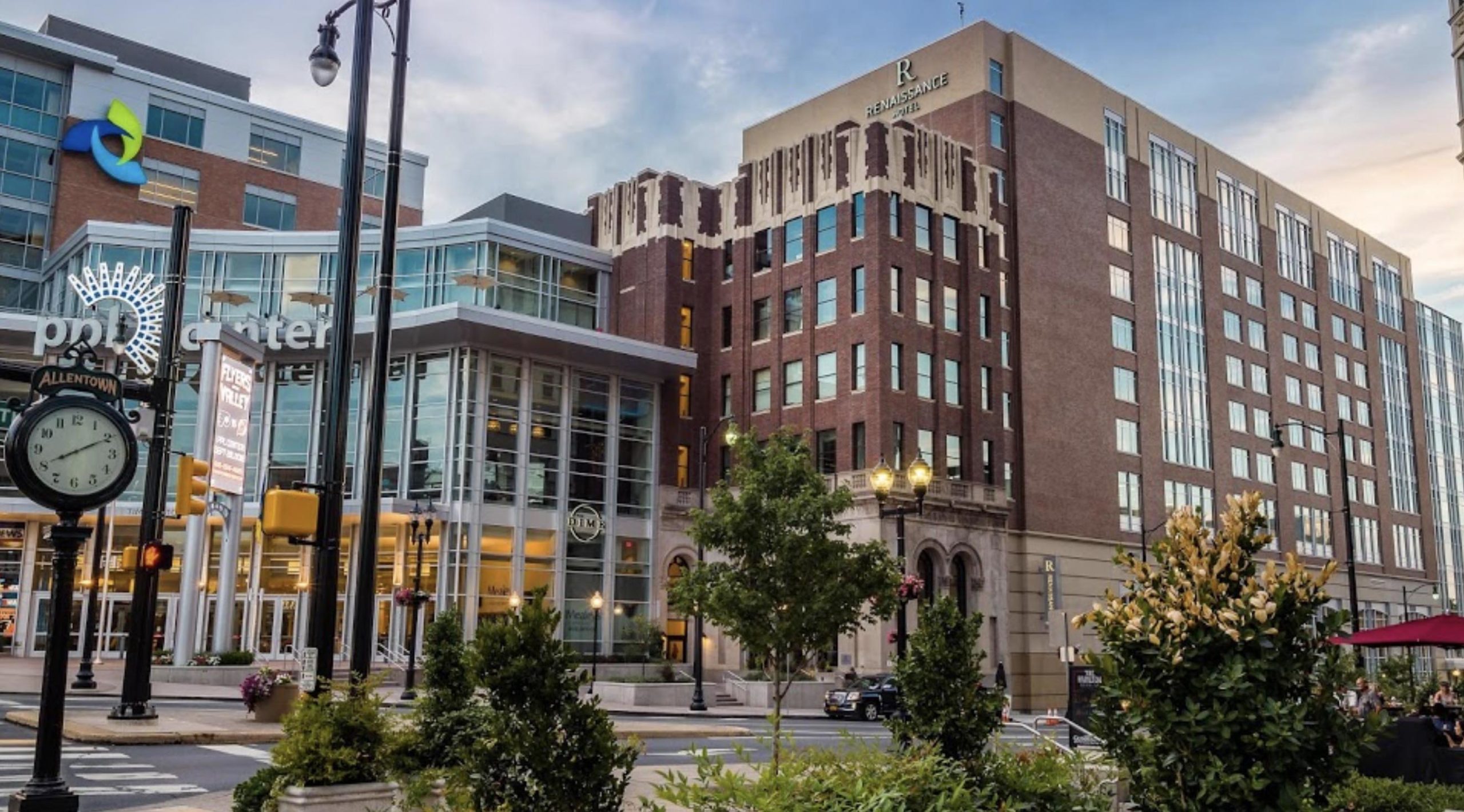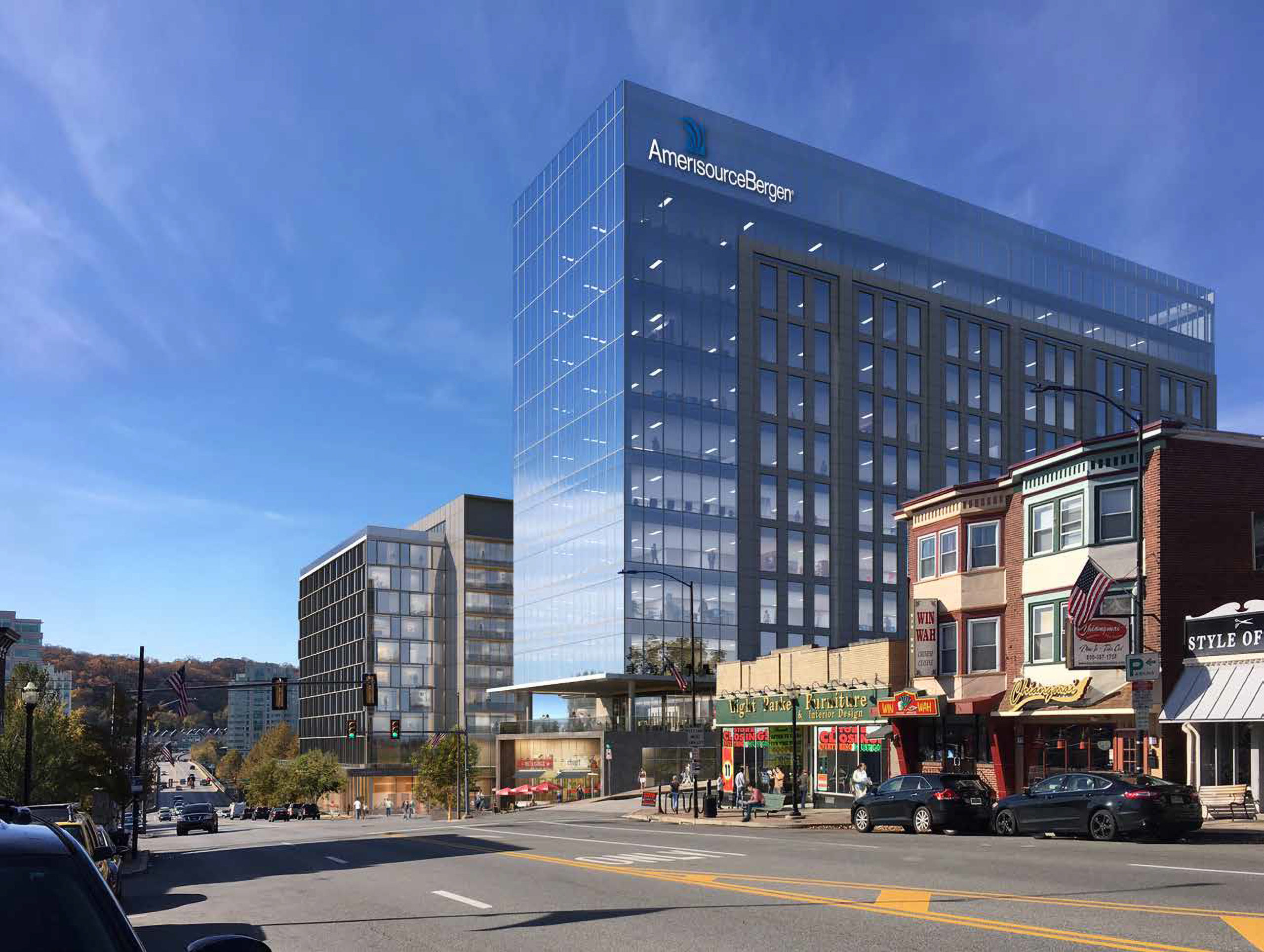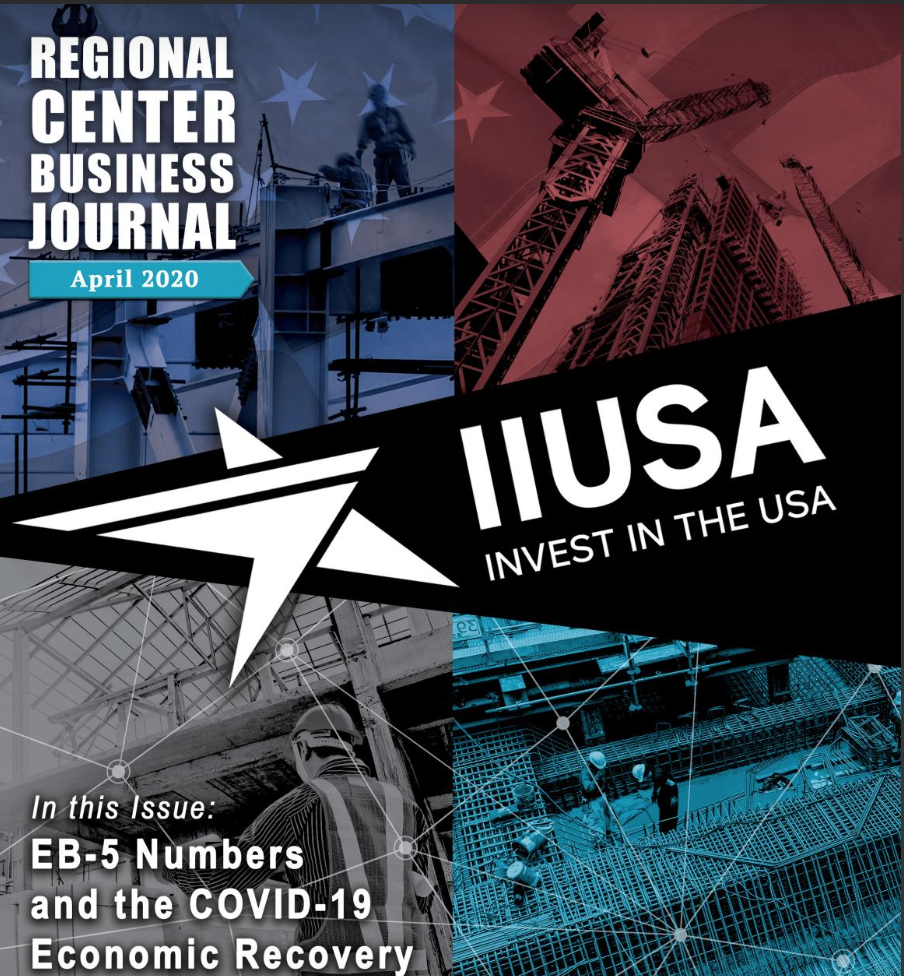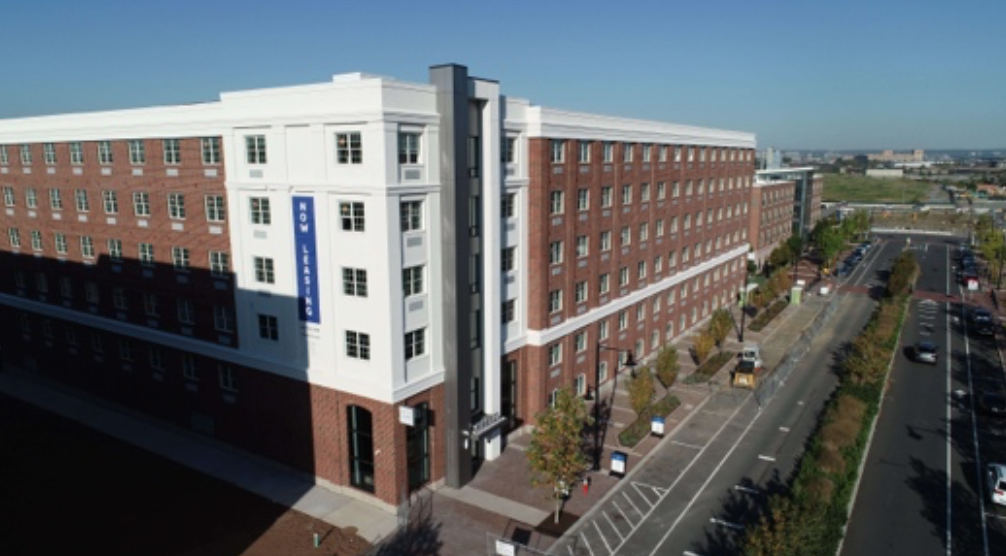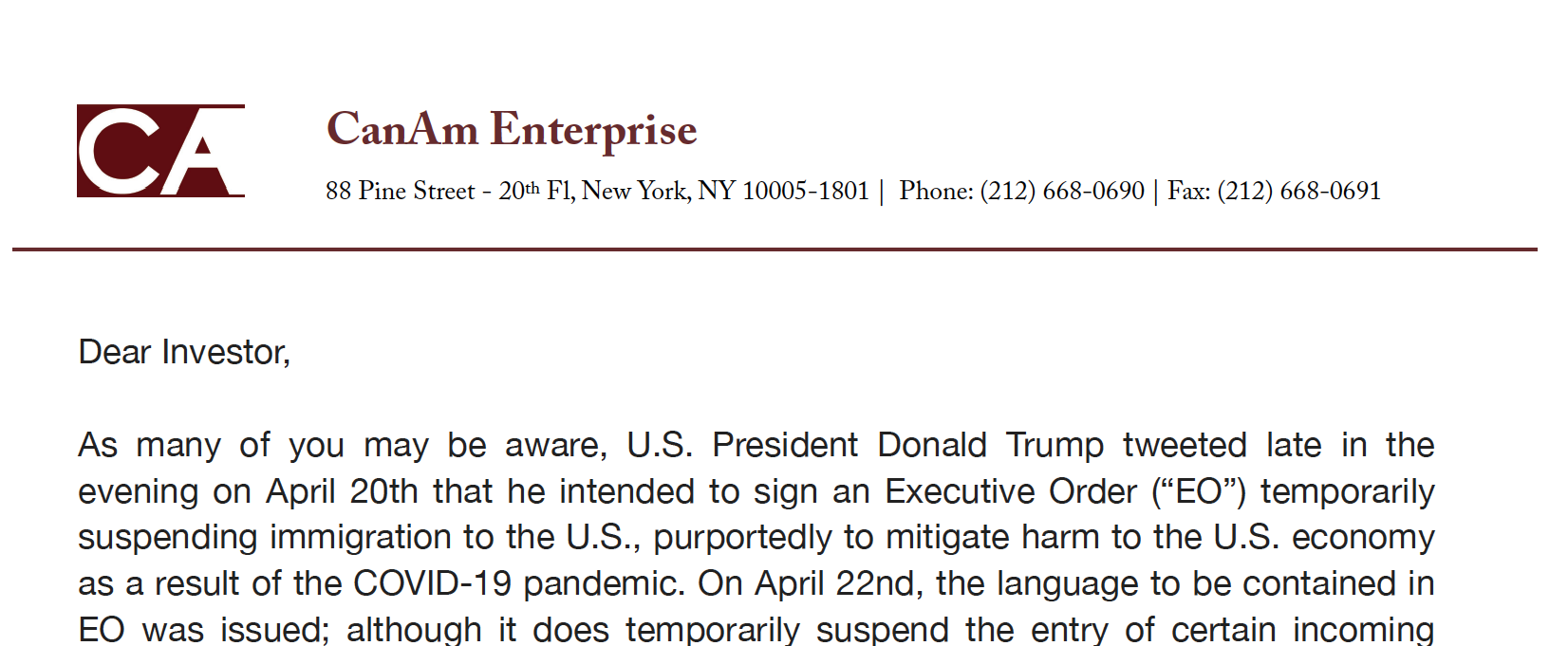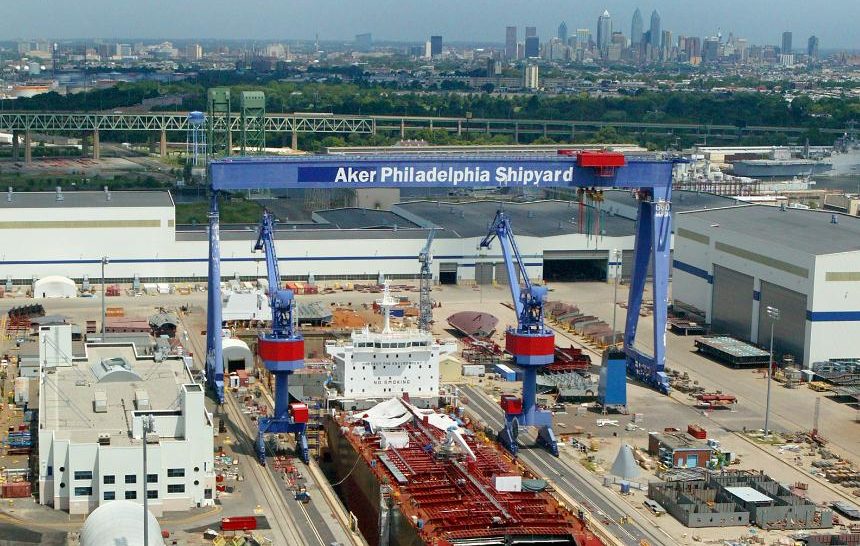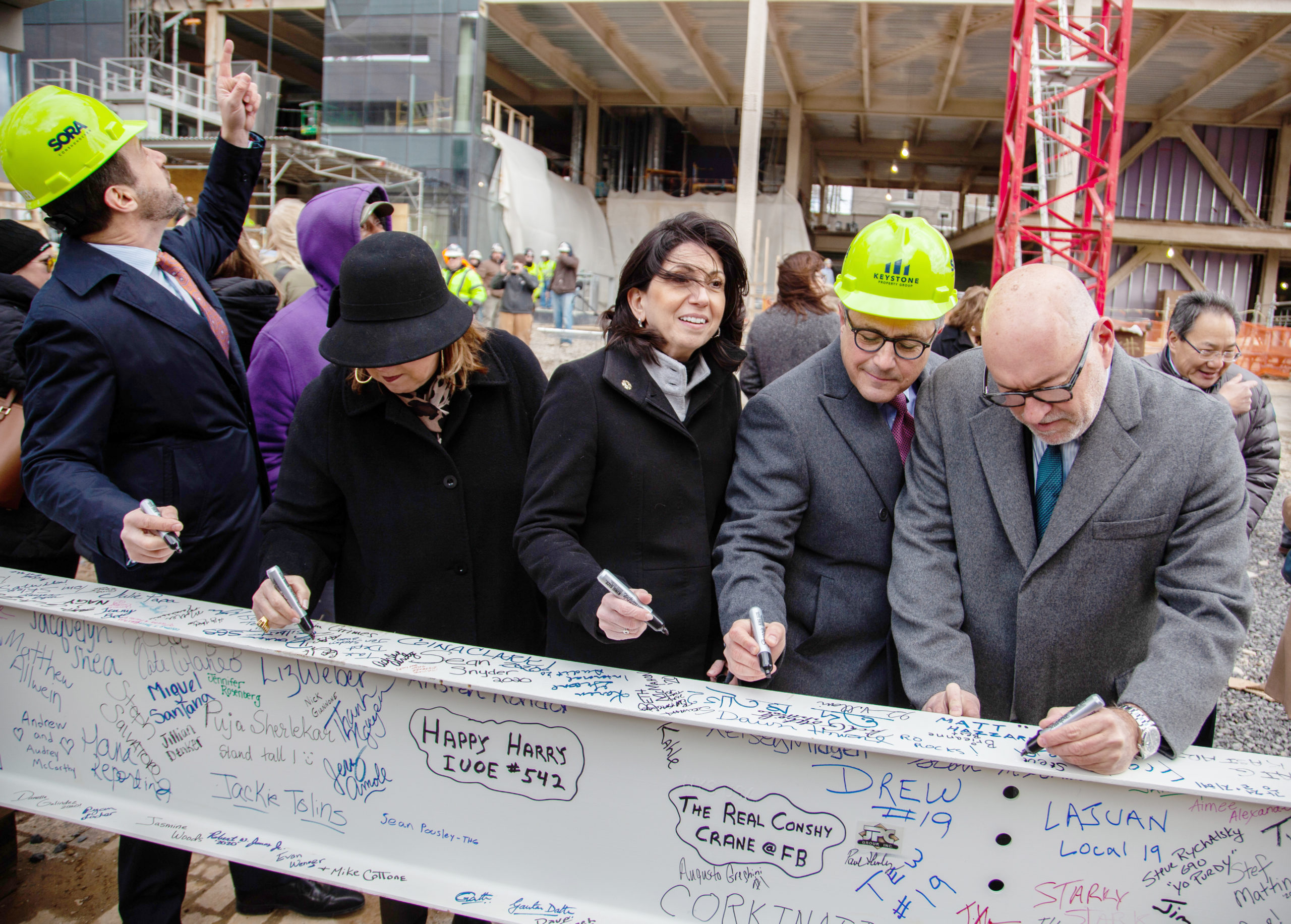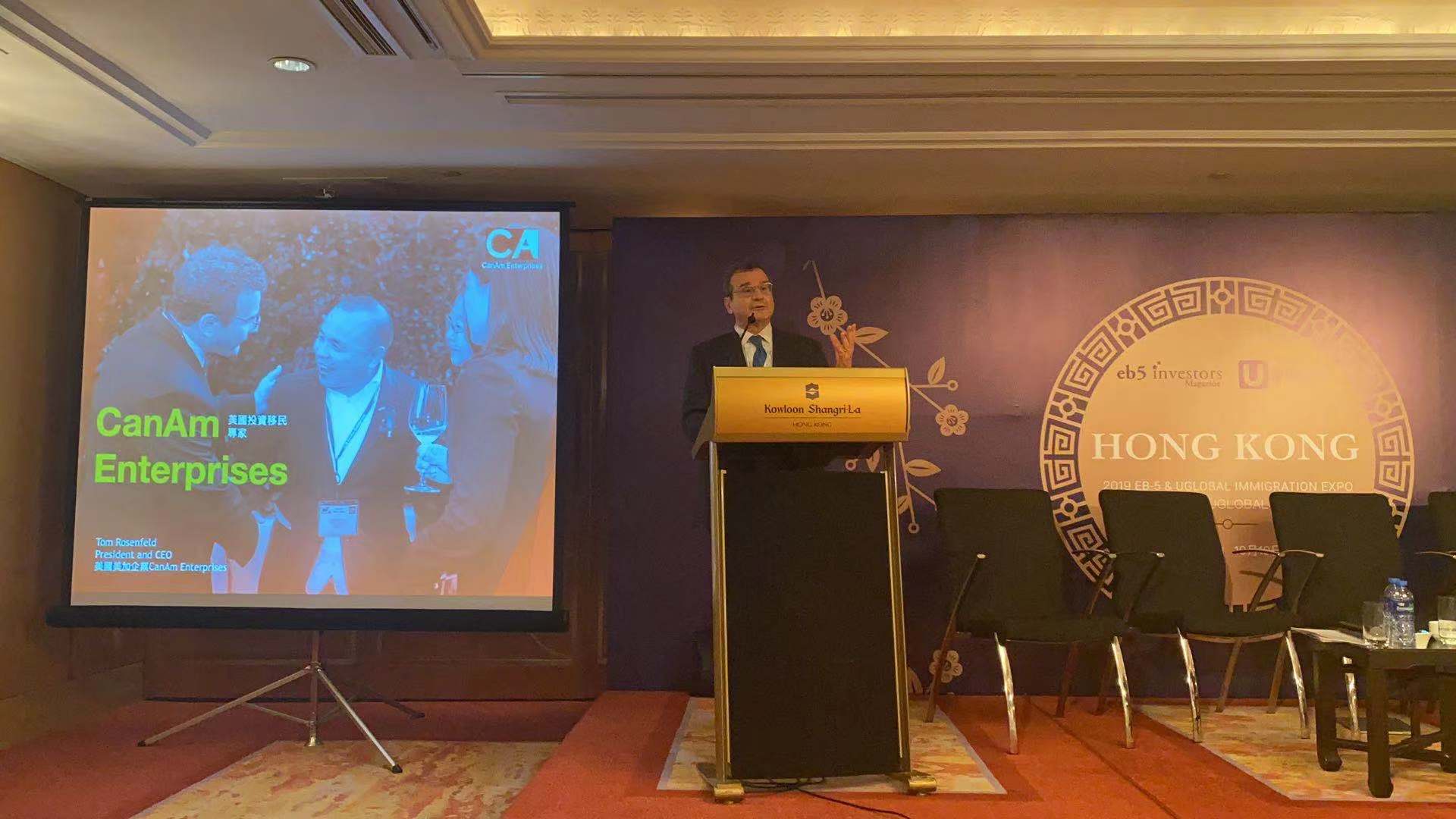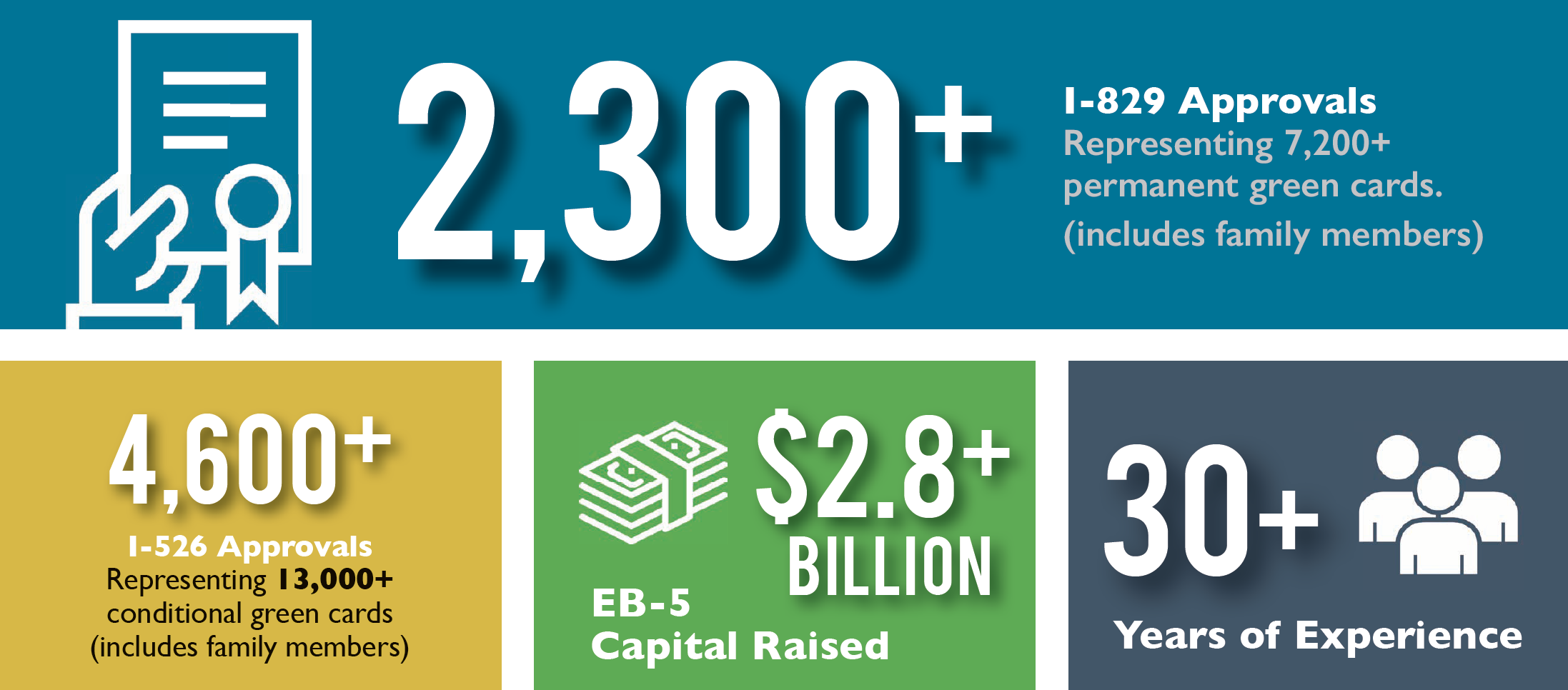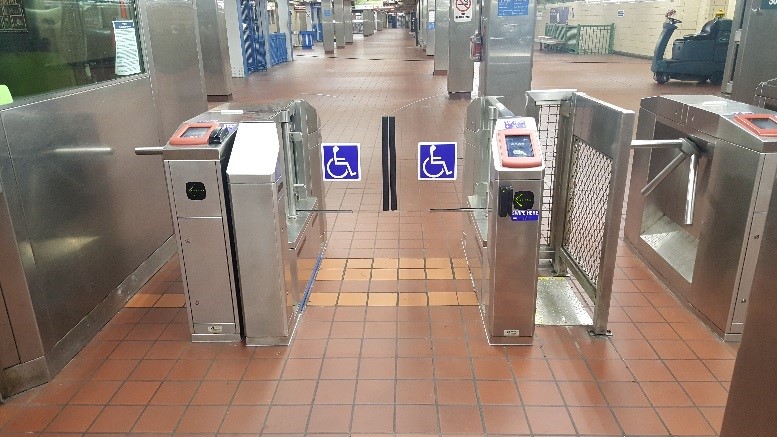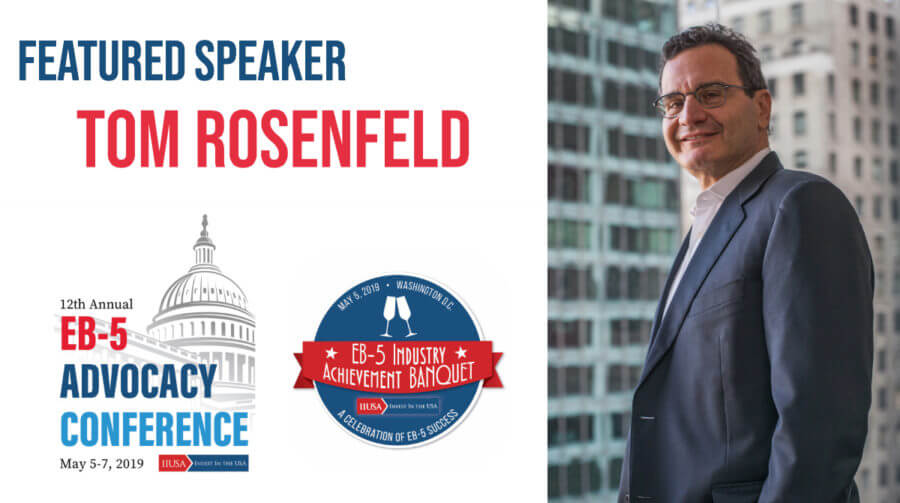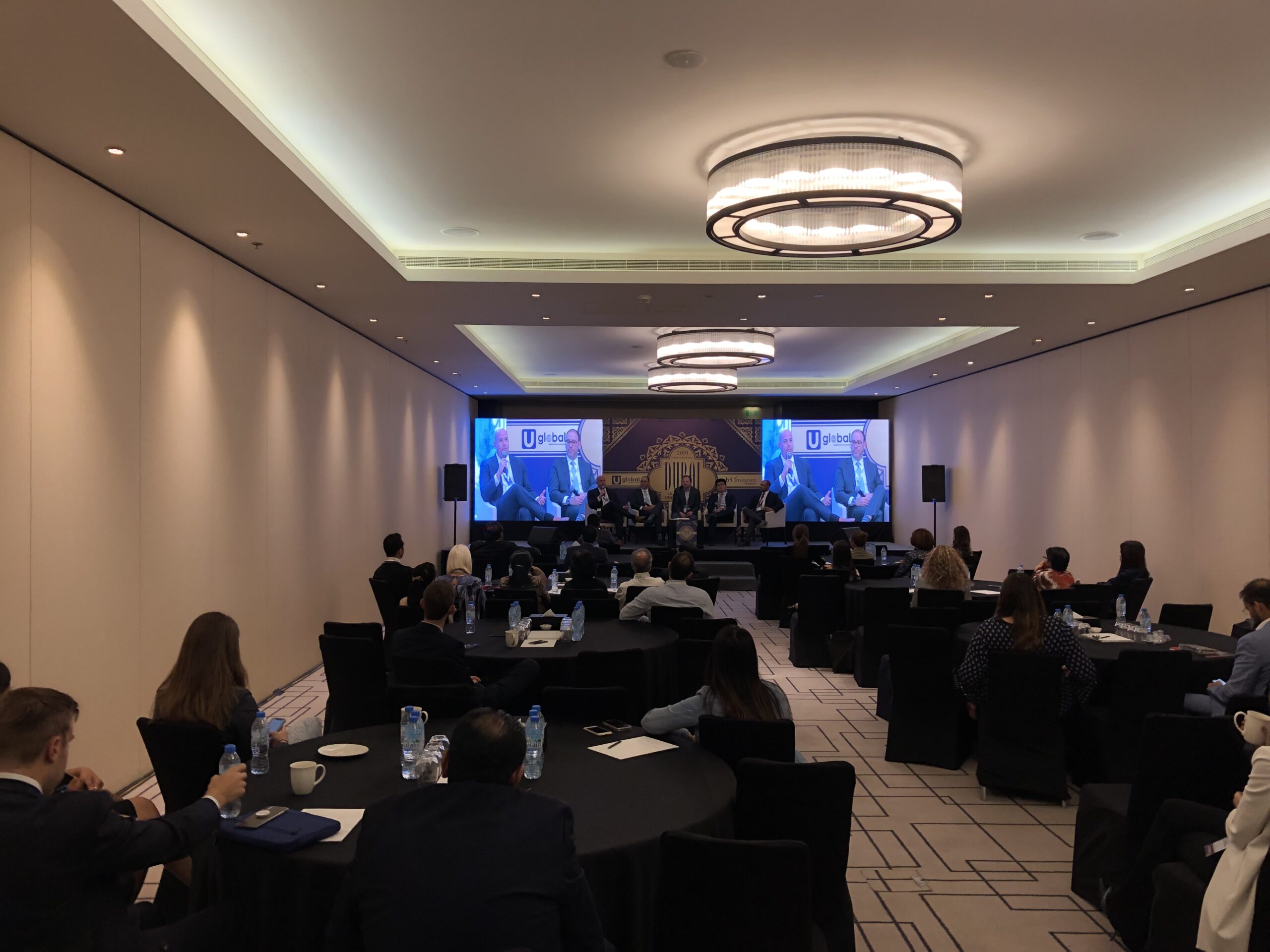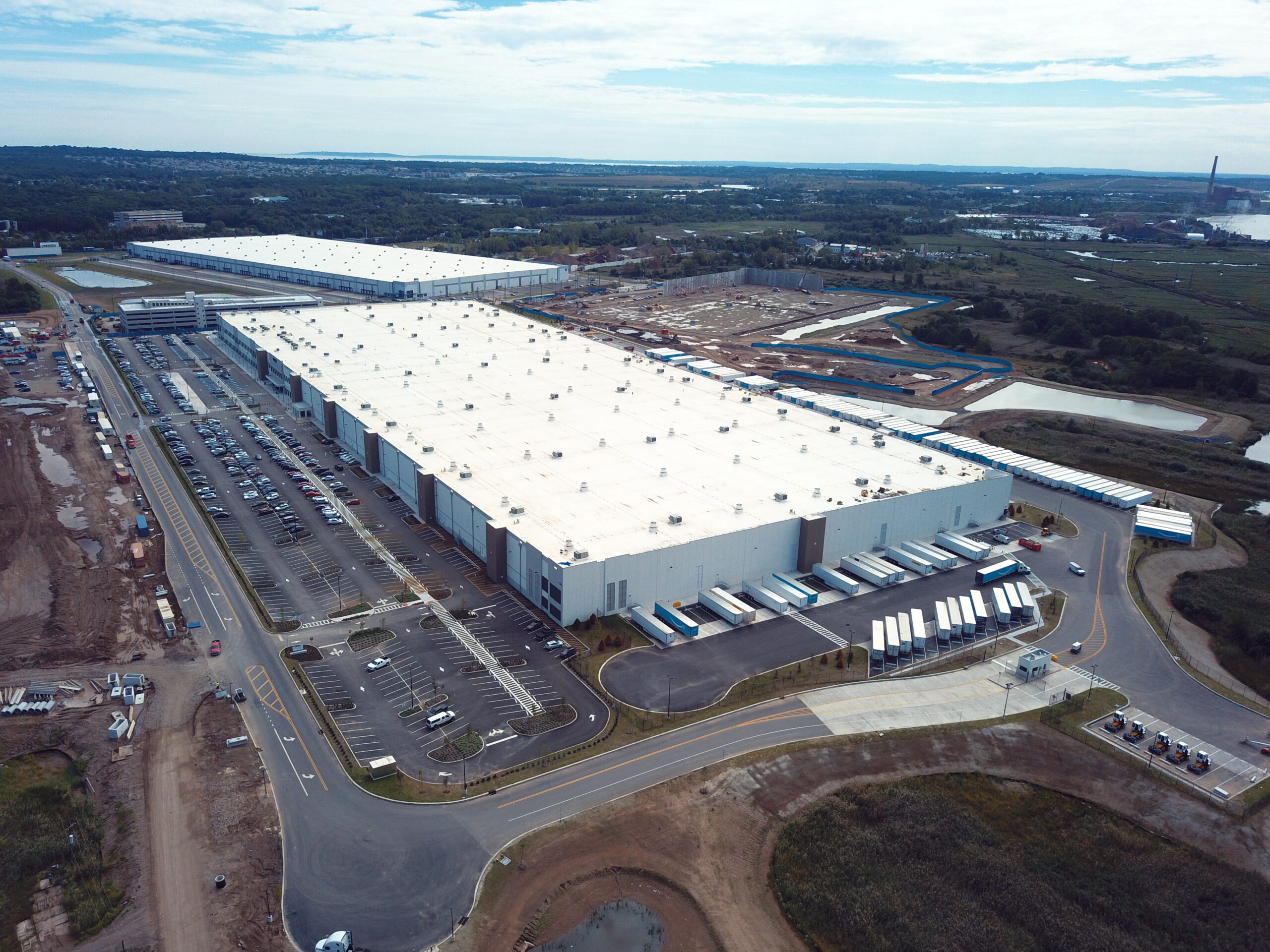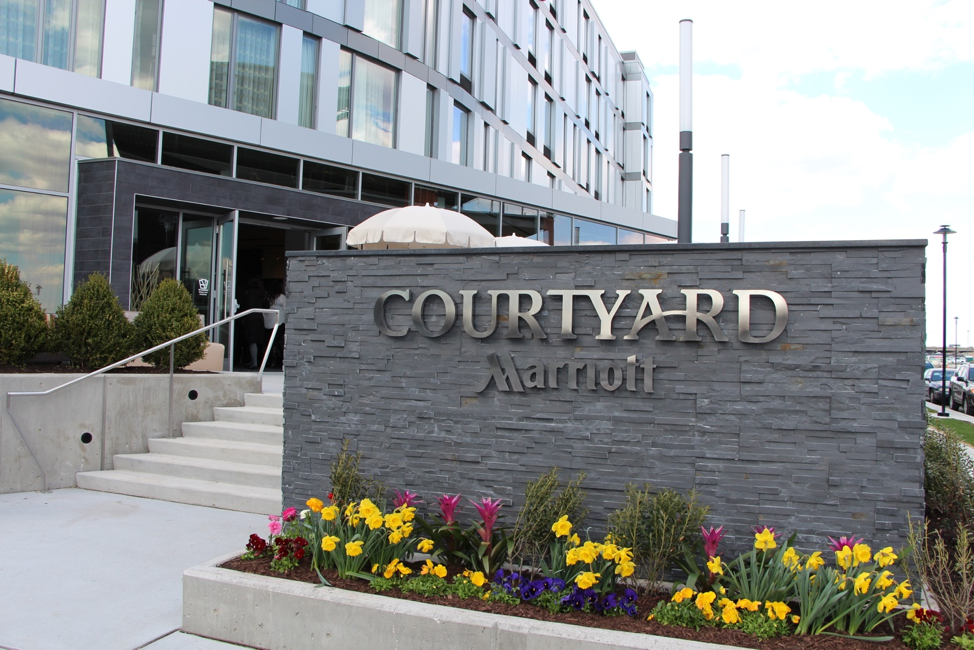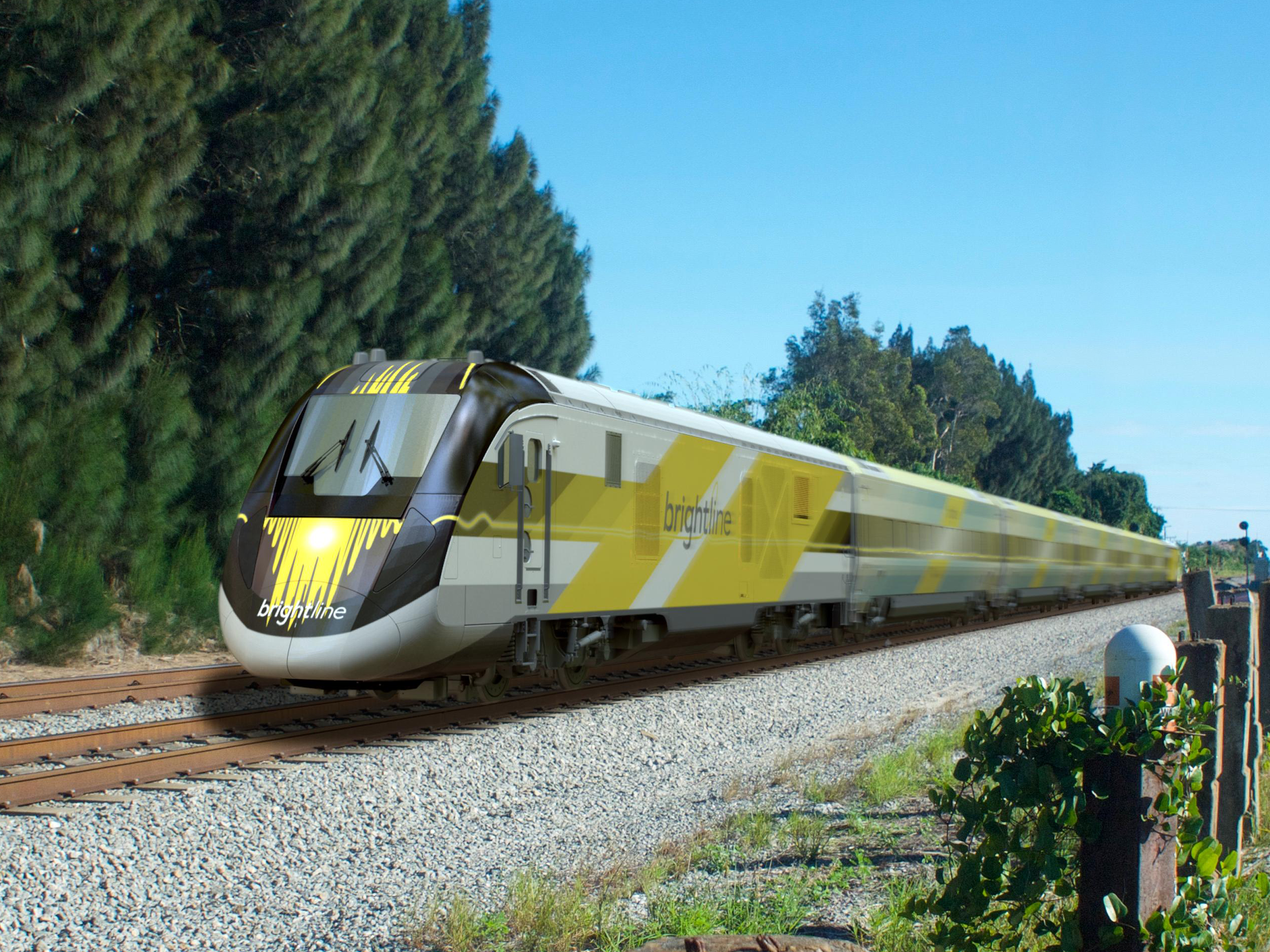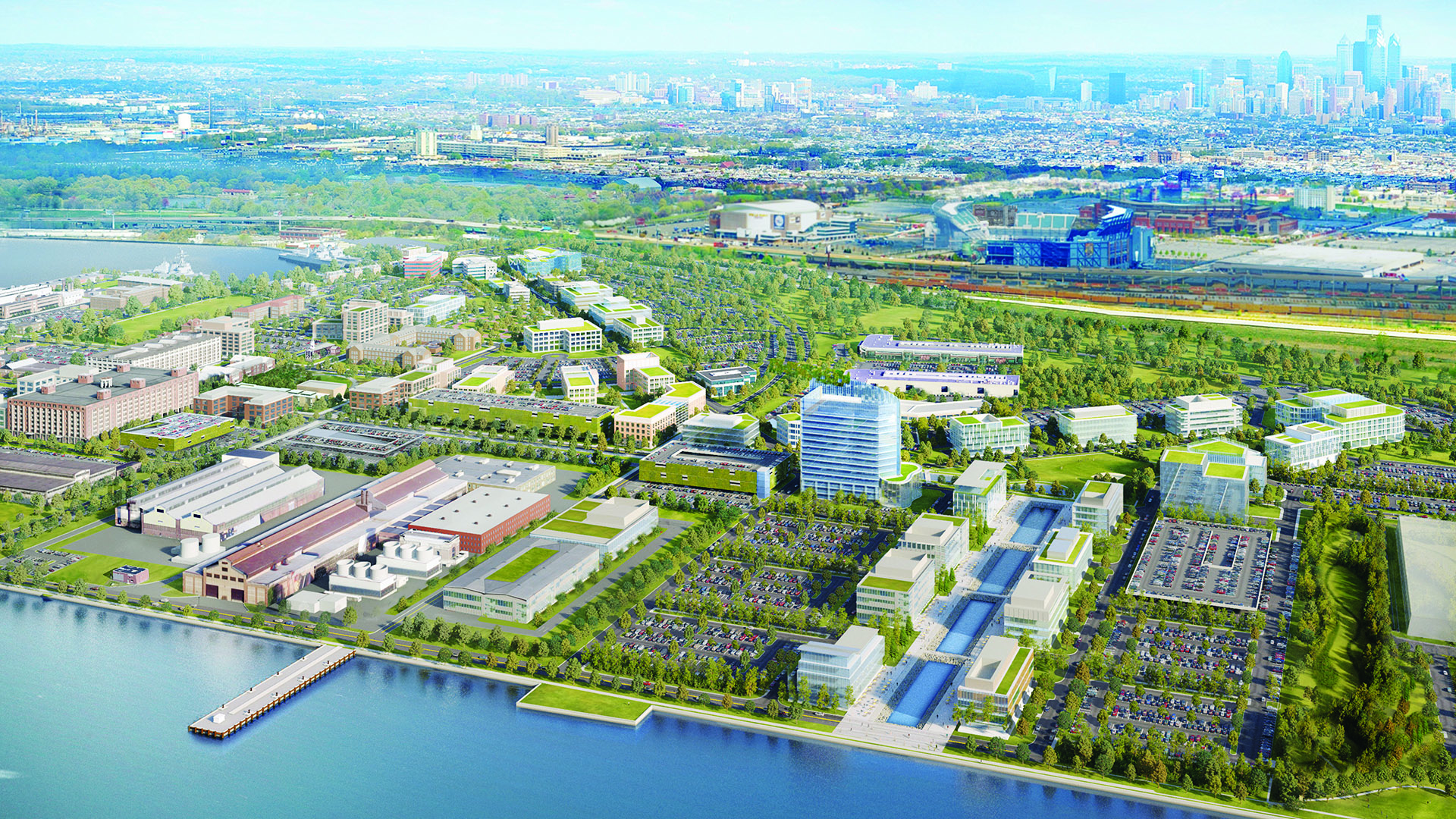by Tom Rosenfeld and Walter S. Gindin
Introduction
Currently, there are approximately 930 regional centers designated by the U.S. Citizenship and Immigration Services (“USCIS”) as qualifying participants in the Immigrant Investor Program (“EB-5 Program”). As the number of approved regional centers has grown at a rapid pace, so too have the quantity and varieties of EB-5 investment opportunities available to prospective investors. The risks inherent in any investment decision are only compounded in the EB-5 context, where, apart from significant financial considerations, prospective investors must also assess the likelihood that their investments will comply with a complex network of immigration laws, regulations, and policies such that permanent immigration to the United States will become possible. In light of the multi-faceted considerations facing prospective investors, decisions regarding which EB-5 investments are most appropriate are by no means straightforward.
Over the past year, USCIS has significantly increased its cooperation with federal partners – most notably, the U.S. Securities and Exchange Commission (“SEC”) – in order to ensure full disclosure and identify and prevent investment scams and fraudulent securities offerings targeting foreign nationals seeking lawful permanent residence through the EB-5 Program. The increased SEC scrutiny of the EB-5 Program has led many sponsors of EB-5 investments to begin disclosing far more information in their offering documents than was previously done.
Prospective investors evaluating regional center-sponsored EB-5 investments should perform extensive due diligence on both the regional center sponsor and the project. In this regard, the parties should always carefully review the full offering package provided by the regional center–following up with any questions–as well as consult with experienced financial/tax professionals and immigration counsel, in order to understand the nature of the investment, the extent to which it complies with EB-5 Program requirements, and the potential consequences/risks in the event the investment is compromised for any reason.
The following discussion aims to highlight some of the inquiries that prospective investors should make when evaluating potential regional center-sponsored EB-5 investments. To be sure, this is not an exclusive list of inquires that should be considered when performing a due diligence review, but rather questions which tend to inform the worthiness of EB-5 investments and which may not always be highlighted in the offering documents or any other component of the USCIS submission package.
Know the Fundamentals
Initially, we wish to note that, regardless of the degree to which an agent or prospective investor has been exposed to EB-5, knowledge of the fundamentals is imperative to adequately assessing whether a particular investment opportunity–which could potentially serve as the basis of an I-526 petition–will satisfy program requirements.
The EB-5 Program is governed by a set of interrelated statutory and regulatory provisions–found at INA §§ 203(b)(5), 216A and 8 C.F.R. §§ 204.6, 216.6–which are further supported by four precedential decisions published by USCIS’ Administrative Appeals Office. While these legal sources set forth the salient requirements of the EB-5 Program, they admittedly can be difficult to maneuver. Arguably the most “user-friendly” source of information about the EB-5 Program is USCIS’ EB-5 Adjudications Policy Memorandum of May 30, 2013 (the “May 30 Memo”). This memorandum discusses the history and purpose of the EB-5 Program, explains in plain terms the basic legal requirements of the program, and provides guidelines for addressing many of the nuanced issues specific to the program. Importantly, the May 30 Memo provides key insights into USCIS’ interpretation and application of laws, regulations, and policy governing the EB-5 Program, and therefore can be a very important resource for prospective investors.
All the above-described resources are freely accessible online, and prospective investors should invest time and effort to developing a familiarity with the substance of the materials before evaluating regional center-promoted investment opportunities. We cannot understate the importance of possessing sufficient baseline knowledge of EB-5 Program requirements and policy in order to be able to make targeted and informed inquiries about regional center sponsors and the investment opportunities they promote.
Questions that Prospective Investor Should Ask
How Will the Project Satisfy the 10-Jobs-Per-Investor Requirement? With Direct Hires, or Indirect and Induced Job Creation from Project Expenditures or Revenues?
Important questions that prospective investors should ask in evaluating potential regional-center sponsored investment opportunities relate to the job creation requirement of the EB-5 Program.
An immigrant investor’s satisfaction of the job creation requirement is critical in two fundamental respects: first, it is vital to his/her ability to initially obtain conditional permanent resident status, by credibly forecasting that the regional center-sponsored project will more likely than not generate the requisite number of jobs; and second, it is vital to his/her ability to ultimately obtain unconditional permanent resident status, by credibly demonstrating that the regional center-sponsored project has actually created, or can be expected to create within a reasonable time, the minimum required jobs. In light of the importance of the job creation to a prospective investor’s ability to obtain both conditional and unconditional green cards, prospective investors vetting projects should understand the manner in which the projects will satisfy the job creation requirements, and how the regional centers expect to document that job creation.
For regional center-affiliated new commercial enterprises, the EB-5 Program requires that a minimum of 10 “direct” or “indirect/induced” jobs must be created per investor, as demonstrated by accepted job-creation modeling practices. Accordingly, it is important to carefully review the job-creation model on which prospective investors will be basing their eligibility and verify that the regional center intends to provide evidence appropriate to that model.
Construction Expenditures
Job-creation that is based on construction expenditures typically represents the most efficient and manageable course for obtaining approvals of I-526 and I-829 petitions. This is because there is little ambiguity as to whether a development project will actually incur construction expenditures, and, more often than not, developers either meet or exceed initial budgetary projections. Additionally, expenditure-based job-creation can be more straightforward to document than other types of model inputs. For example, at the I-526 stage, regional centers can submit an itemized project budget provided by the developer, which should be supported by a detailed explanation of the underlying assumptions, and an independent third-party verification of the reasonableness of the budget. Thereafter, at the I-829 stage, regional centers can submit draw requests/packages, invoices from supplies, paid checks/wire transfers, etc. to substantiate that expenditures were actually incurred.
When evaluating EB-5 investments relying on expenditure-based model inputs, it is important to inquire: (1) whether “direct” construction jobs are being relied upon to satisfy investors’ job-creation requirements; and (2) whether the Regional Center is being careful to count only qualifying expenditures that USCIS accepts as job-creating.
With regard to the first point, USCIS policy allows for the inclusion of “direct” construction jobs when the construction period is reasonably demonstrated to last more than 2 years. Thus, prospective investors should inquire whether a given project relies on “direct” construction jobs, and, if so, whether the regional center has obtained independent, third-party evidence corroborating the reasonableness of the 2+ year development timeline. Because USCIS closely scrutinizes development timelines exceeding 2 years, as a practical matter, relying on job-creation predicated solely on “indirect/induced” construction jobs is typically the most conservative and safest alternative.
With regard to the second point, prospective investors should be aware that certain standard project costs, such as property acquisition and financing fees, are not considered job-creating and should be excluded from the economic impact calculations.
Revenues & Direct Hires
Revenues generated by a regional center-sponsored project can be used as an input in an economic model to forecast job creation. Note, however, that the likelihood that a project generates desired revenues is often subject to a variety of unpredictable factors and circumstances. As such, when job creation is based on revenues, it is critical that prospective investors understand whether the Regional Center is being conservative or optimistic in how much revenue a given project will earn. In this regard, parties should inquire, and the regional centers should be able to confirm, whether the revenue estimates were prepared or reviewed by an independent, qualified third-party.
Additionally, certain regional center-sponsored projects that are establishing new businesses, especially in the service industries such as hotels or restaurants, may utilize direct hires as inputs into the job-creation model. In these instances, prospective investors should inquire: (1) how the regional center will document the number of full-time positions to be created and the qualifying status of the employees occupying those positions; and (2) what contingencies the regional center has in place in the event that direct hires prove not to be “qualifying employees” or do not actually work the minimum 35 hours per week to constitute “full-time” employees under the EB-5 regulations.
Because revenues and direct hires can be more unpredictable and burdensome to document than the expenditure-based alternative, prospective investors evaluating a potential EB-5 investment should inquire whether, and to what extent, job-creation requirements will be satisfied solely by reliance on construction expenditures. Relatedly, it is important that parties verify that the overall job-creation projections for a given project substantially exceed the absolute minimum number of jobs required for all the immigrant investors in that project. Subject to a project’s particular circumstances, a job cushion of 10-25% is typically recommended.
What is the longest possible term of the investment?
When evaluating a particular offering, prospective investors should be careful about hidden extensions in the loan or investment term. Similar to commercial loans or investments, many EB-5 investments have minimum terms with options to extend that term. For example, an EB-5 loan may have a five-year term with two, one-year extensions at the option of the borrower or developer. Unlike commercial loans or investments that charge substantially higher interest rates when such extensions are exercised, this is typically not the case with EB-5 loans or investments where such options are at the sole discretion of the borrower or developer. Since, more often than not, there is no incentive to keep to the minimum term, that five-year term is really a seven-year or nine- or ten-year term.
To avoid potential immigration-related complications, prospective investors should not receive a return of any principal amount of their minimum qualifying investment prior to the removal of conditions on permanent resident status. Note that the impending EB-5 quota retrogression for mainland-born Chinese investors may require an EB-5 loan to remain outstanding for a longer period of time so as to ensure that these investors’ funds remain “at risk” and “sustained throughout” the conditional residency period. USCIS has not yet provided formal guidance on this issue.
Is the Capital Stack Firm or is it Projected? Are Other Lenders Already in Place, and, if not, is There a Reasonable Expectation of Securing Such Financing?
Given the low cost of typical EB-5 loans, many borrowers or developers will use equity and EB-5 financing to begin a project with the expectation of attracting other financing as construction risk is reduced. While the borrower or developer’s failure to secure all the financing needed for a regional center-sponsored project at the time an investor files his or her I-526 petition may not necessarily be fatal to the approval of the petition itself—as USCIS could approve the petition if it is more likely than not that the financing will be obtained later on—the ability to secure all the financing needed for a project is ultimately critical to the successful completion of the project, and, correspondingly, vital to demonstrating sufficient job-creation resulting from expenditures incurred and/or revenues generated by the project. Accordingly, prospective investors should inquire at the outset about the sources of all requisite financing for a given project, the status of any pending financing, and the timeline/strategy for securing any outstanding financing necessary to move forward and complete the project.
Is the EB-5-funded Loan Collateralized?
As typical in regional center-sponsored EB-5 investments, immigrant investors contribute capital to an affiliated new commercial enterprise (such as a Limited Partnership), which then loans the EB-5 proceeds to a job-creating entity (the Borrower). In these instances, the new commercial enterprise often does not possess any assets; it is an entity formed solely for the purpose of loaning pooled investors funds. The loan from the lender (new commercial enterprise) to the borrower typically will be governed by a loan agreement (or a term sheet initially), which will set forth, among other things, the term of the loan, applicable interest rate, and, as relevant here, any collateral pledged by the borrower to secure the loan repayment.
Pledged collateral is very important in the EB-5 context because it can help protect immigrant investors’ capital contributions against a borrower’s default—in other words, collateral can be used to offset the EB-5 funded loan in the event the borrower fails to fulfill its debt obligations. If a borrower (job-creating entity) defaults on the EB-5-funded loan for any reason, it will forfeit the assets pledged as collateral, and the Limited Partnership (new commercial enterprise) will become the owner of the collateral. The General Partner of the Limited Partnership will then have the ability to liquidate the assets in order to obtain funds to repay immigrant investors consistent with EB-5 laws and regulations. Accordingly, prospective investors should inquire whether the proposed borrower of the EB-5 funds has pledged, or intends to pledge, collateral to the new commercial enterprise, and, if so, whether the assets are likely to be sufficient to cover the value of the EB-5-funded loan in the event of default.
Where Does the Money Trail Lead?
In order to thoroughly research an offering, prospective investors must understand what payment parties/entities expect to receive in connection with the EB-5 investment. The interest rate being charged on the EB-5 loan will reveal a lot in this regard. In today’s market, bank interest rates are low. If the interest rate on the EB-5-funded loan is high, the risk may be equally high. And if the interest rate is high, prospective investors should ask who is getting paid? Where are the distributions going? What is the project sponsor getting? What is the manager getting? Is part of the interest going to any sales agents? The more details prospective investors know, the more they will understand the transaction and its related risks.
Notably, one way developers are reducing their equity in projects is by recouping developer’s fees in so-called project soft costs. Even more so in arrangements in which the developer is also raising the EB-5 funds, it’s important to know if the developer is recouping its equity by charging management fees to the EB-5 investors.
Are there conflicts of interest, and, if so, are they fully disclosed and acceptable to the prospective investor?
In addition to contributing substantial capital toward an EB-5 investment, immigrant investors also place significant trust in regional centers to represent their interests to the fullest extent possible and in accordance with the applicable laws and regulations. Therefore, in deciding whether to invest with a particular regional center, it is perfectly reasonable for prospective investors to ask – in whose interest will key decisions be made? The investors or some other party?
Some regional center-affiliated EB-5 investments are structured through multiple layers of companies that are managed by the same individuals. In these instances, the sponsor raising the EB-5 funds may be the same or affiliated with the developer receiving the EB-5 funds—these scenarios could potentially raise conflict of interest concerns, particularly when a developer’s business interests do not entirely align with its regional center responsibilities. Relatedly, there is a conflict for immigration attorneys to represent both the regional center and the immigrant investors in the same transaction. As a general matter, conflicts of interest should be prominently disclosed in the offering documents; they are red flags that prospective investors should carefully review and evaluate.
Note, however, that even if all conflicts are fully disclosed, a prospective investor’s inquiry does not end there. Rather, it is critical that prospective investors make independent rational assessments as to the likelihood that a given conflict(s) will undermine their financial and immigration goals. In other words, prospective investors should assess whether the benefits of a given EB-5 investment outweigh the consequences of potential conflicts that may arise during the course of that investment. If, on balance, conflict consequences outweigh investment benefits, it is a good indication that the particular EB-5 investment may not be suitable for the prospective investor.
What can reduce the risk that an immigration petition will be denied?
While the statutory and regulatory regime governing the EB-5 Program sets forth the general eligibility requirements for classification as an alien entrepreneur, what precisely meets those requirements has been interpreted differently at times. As USCIS has worked to improve oversight of the EB-5 Program in recent years, it has introduced policy and guidelines that provide investors with more predictability than in the past. One such initiative is to allow regional centers to seek “pre-approval” of an actual project through the filing of an Exemplar I-526 Petition, either as part of the regional center’s initial designation application or a subsequent amendment request.
In pre-approving a project, USCIS will have deemed credible the supporting business plan and deemed reasonable the underlying job-creation methodology. As a practical matter, pre-approval of a regional center-sponsored project means that USCIS is likely to defer to its prior positive determination in adjudicating the project-portion of an immigrant investor’s I-526 Petition (absent any material change), and thus should only conduct an exacting review of the investor’s source of funds documentation. Accordingly, when reviewing a potential regional center-sponsored project, prospective investors should inquire whether the sponsoring regional center has obtained “pre-approval” of the project, and, if so, request a copy of the approval notice which will state the evidentiary and substantive parameters of USCIS’ approval.
Further, if at the time an investor files his or her I-526 Petition, there have been changes to the pre-approved project and/or any of the supporting documentation, USCIS will consider whether those changes are material, and, if so, the agency may not afford deference to its pre-approval determination. While precise guidelines for what constitutes a “material” change in the EB-5 context remain elusive, prospective investors nevertheless should inquire what, if any, changes a pre-approved project has experienced since USCIS’ determination. If changes have occurred, prospective investors should then ask the regional center to explain whether or not those changes are likely to be deemed “material.”
The quality of the immigration attorney, and that attorney’s experience in successfully filing and having approved EB-5 petitions, are also important. EB-5 petitions are typically far more complex than other immigration petitions, notably because of the extensive source-and-path-of-funds requirement and the often-complex financial structures involved. While regional centers certainly have primary responsibility to perform internal due diligence reviews, experienced EB-5 immigration attorneys can provide an important layer (or layers) of oversight. The immigration attorney will be responsible for reviewing the evidentiary materials provided by the regional center in support of a project, documenting investors’ source-and-path-of-funds, and making certain that the entire submission is comprehensive, consistent, and complies with USCIS requirements.
What is the EB-5 Experience and Track Record of the Regional Center?
Each EB-5 investor ultimately will be looking to the Regional Center to make sure that the EB-5 investment is managed properly and that immigration and investment goals are successfully achieved. In this regard, a regional center’s track record is extremely important. The EB-5 Program can be quite complex, and a regional center that has existed for many years will simply have more experience handling issues that come up with USCIS and/or projects. Not all regional centers are the same, but most will claim that they have a “100%” track record. But what does that mean? Prospective investors should ask for the details. How many projects has the regional center funded? What were the terms? How many investors have been repaid? Were investors repaid on time? Were investors repaid in full? Were any fees deducted at repayment?
Further, when looking at the number of purported I-526 and I-829 approvals, prospective investors should be careful to distinguish between regional centers’ representations regarding the number of petition approvals versus the number of visa approvals. To this end, it is important to keep in mind that while EB-5 petitions (I-526 and I-829) are approved for principal investors only, immigrant visas are made available to the principal investor and his or her dependents. Because a regional center’s success is measured in large part by the number of petition approvals, a regional center that only discloses the number of visa approvals potentially distorts its track record.
Conclusion
In the EB-5 Program, immigrant investors bear the burden of proving their eligibility for classification as alien entrepreneurs. This means that immigrant investors are dually responsible for producing evidence to support their petitions, and persuading adjudicators that such evidence is sufficient to satisfy EB-5 Program requirements. As a practical matter, the evidence required to demonstrate a project’s feasibility and satisfaction of the job creation requirement is almost exclusively generated and provided by the regional centers sponsoring the project. Because regional centers play a critical role in “helping” immigrant investors satisfy their burdens of production and persuasion, it is imperative that prospective investors, in evaluating potential EB-5 investments, carefully scrutinize all materials provided and assertions made by regional centers–asking targeted questions along the way–to identify any red flags and to maximize the likelihood that an investment complies with individual immigration and investment objectives
CanAm Enterprises, with over three decades of experience promoting immigration-linked investments in the US and Canada, has a demonstrated track record of success. With over 60 financed projects and $3 billion in raised EB-5 investments, CanAm has earned a reputation for credibility and trust. To date, CanAm has repaid more than $2.26 billion in EB-5 capital from over 4,530 families. CanAm manages several USCIS-designated regional centers that stretch across multiple states. For more information, please visit www.canamenterprises.com.


